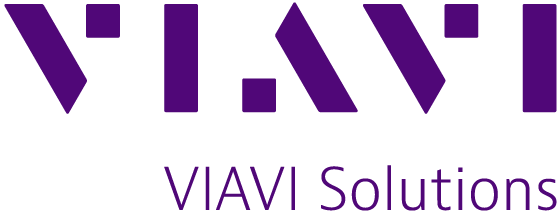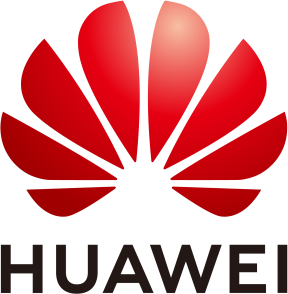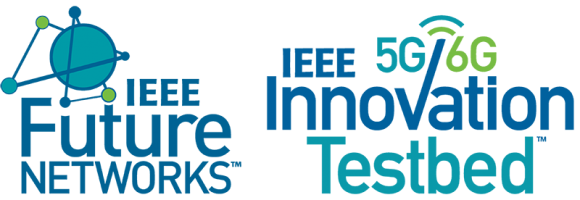The 2024 IEEE ICC continues to provide an extensive industrial program designed to provide opportunities for the practicing industry professional to both share and learn about the latest ideas, trends, and product innovations in the broader communications and networking industries while connecting with their peers and other prominent leaders in the industry.
Please find our program below - subject to change.
LIST OF PANELS:
- IP1: Multicarrier waveforms – a success story on the way towards 6G
- IP2: Cybersecurity in a Mobile Wireless World: What More is Required?
- IP3: Exploring the Future of Sustainability in Communication with the Next G Alliance
- IP4: Reconfigurable intelligent surface (RIS): on its way to wide deployments
- IP5: Convergence of Quantum Computing, Cybersecurity and Machine Learning
- IP6: Envisioning 6G IoT: A Journey through Innovation and Challenges
- IP7: Evolving PON to a Converged Multi-Service Network at the Edge
- IP8: Emerging Technologies for Public Safety: Where, How and When?
- IP9: Service and Network Reliability in Access Networks
- IP10: Towards an Open 6G for the inclusion of all – Understanding the role of open 6G research infrastructures and toolkits
- IP11: Key challenges for high-performance 6G communications in smart environments
- IP12: Optimizing Spectrum Sharing in Terrestrial and Non-terrestrial Wireless Communication Networks Using Machine Learning: New Frontiers and Applications
- IP13: Nanonetworking: Quo Vadis?
- IP14: When ISAC meets AI
- IP15: Bridging the Gap: Channel Sounding and Modeling for Joint Communications and Sensing
- IP16: 6G Empowered Robotics: Unleashing the Potential of Next-Generation Connectivity
- IP17: IEEE Future Networks Roadmap for 6G
- IP18: 6G Requirements to Support Global Digital Transformation of the Healthcare Industry
- IP19: Panel: Federation of Innovation Testbeds Towards Accelerated Deployment
IP1: Multicarrier waveforms – a success story on the way towards 6G
Monday, June 10 14:30 - 16:00//LOCATION: Governor's Square 14, Concourse Level
Moderator: Ana Garcia Armada, Universidad Carlos III de Madrid, Spain
Panelists:
- Stephen Weinstein
- Leonard J. Cimini
- Sarah K. Wilson
- Hikmet Sari
- Jinhong Yuan
Abstract:
The aim of this panel is to commemorate the important IEEE Eric E. Sumner Award given to three distinguished ComSoc members, Stephen Weinstein, Len Cimini and Geoffrey Yi Li, for fundamental contributions to frequency domain communications including orthogonal frequency division multiplexing (OFDM). It is important as a community to reflect and learn about our successes to be able to reproduce them as we advance towards the future and the panel will contribute to this direction.
The panel will bring together a diverse set of highly knowledgeable speakers to engage in a discussion with the audience about the lessons learned and how to extend them to the design of the 6G. This is a very timely topic since the physical layer for 6G is to be defined in the next years and the selection of the waveform is a key element in its design. With multiple evolved waveforms (CE-ODFM. FM-OFDM, OTFS, ODDM, etc) being proposed, we believe it is the right moment to step back, look at all the accumulated experience and see how it can help us in the next steps.
OFDM is one of those unique ideas that we have been building as a community for a very long time and became a practical reality when the mass market applications coincided with the availability of efficient software and electronics, being today fully used in a large amount of communication standards. The panel speakers will review how they have contributed to proposing, developing and promoting OFDM. They will share their insights about its early development and how they envisage its present and necessary evolution to meet the challenges of the future 6G.
Besides the interesting discussion with Stephen Weinstein, the other two awardees Len Cimini and Geoffrey Yi Li will contribute with a short pre-recorded video.
Bios:
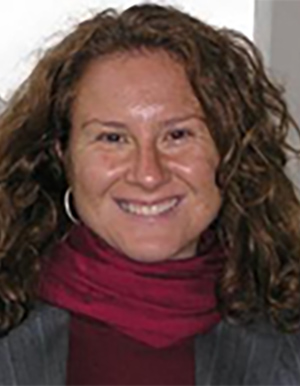 Ana García Armada is a Professor at University Carlos III of Madrid, Spain, where she is leading the Communications Research Group. She has been visiting scholar at Stanford University, Bell Labs and University of Southampton. She has published more than 250 papers in international journals and conference proceedings and she holds five granted patents. She is serving on the editorial board of IEEE Transactions on Communications and IEEE Open Journal of the Communications Society. She has served on the TPC of more than 40 conferences and she has been a member of the organizing committee of IEEE Globecom 2022, IEEE Globecom 2021 (General Chair), IEEE Globecom 2019, IEEE Vehicular Technology Conference (VTC) Fall 2018, Spring 2018 and 2019, among others. She has been an officer since 2017 and is now the Vice-Chair of IEEE ComSoc Signal Processing and Computing for Communications Committee. She has been a Member at Large of the Board of Governors, Director of Online Content and member of several management committees in the IEEE Communications Society, where she is now the VP of Member and Global Activities. She has received the Young Researchers Excellence Award, the Award to Outstanding achievement in research, teaching and management and the Award to Best Practices in Teaching, all from University Carlos III of Madrid. She was awarded the third place Bell Labs Prize 2014 for shaping the future of information and communications technology. She received the Outstanding service award from the IEEE ComSoc Signal Processing and Communications Electronics technical committee in 2019 and the Outstanding service award from the IEEE ComSoc Women in Communications Engineering Standing Committee in 2020. She received the IEEE ComSoc/KICS Exemplary Global Service Award in 2022.
Ana García Armada is a Professor at University Carlos III of Madrid, Spain, where she is leading the Communications Research Group. She has been visiting scholar at Stanford University, Bell Labs and University of Southampton. She has published more than 250 papers in international journals and conference proceedings and she holds five granted patents. She is serving on the editorial board of IEEE Transactions on Communications and IEEE Open Journal of the Communications Society. She has served on the TPC of more than 40 conferences and she has been a member of the organizing committee of IEEE Globecom 2022, IEEE Globecom 2021 (General Chair), IEEE Globecom 2019, IEEE Vehicular Technology Conference (VTC) Fall 2018, Spring 2018 and 2019, among others. She has been an officer since 2017 and is now the Vice-Chair of IEEE ComSoc Signal Processing and Computing for Communications Committee. She has been a Member at Large of the Board of Governors, Director of Online Content and member of several management committees in the IEEE Communications Society, where she is now the VP of Member and Global Activities. She has received the Young Researchers Excellence Award, the Award to Outstanding achievement in research, teaching and management and the Award to Best Practices in Teaching, all from University Carlos III of Madrid. She was awarded the third place Bell Labs Prize 2014 for shaping the future of information and communications technology. She received the Outstanding service award from the IEEE ComSoc Signal Processing and Communications Electronics technical committee in 2019 and the Outstanding service award from the IEEE ComSoc Women in Communications Engineering Standing Committee in 2020. She received the IEEE ComSoc/KICS Exemplary Global Service Award in 2022.
 Stephen B. Weinstein is an independent consultant (retired) and Life Fellow of IEEE. He received the S.B. degree in electrical engineering from MIT, the M.Sc. degree in electrical engineering from the University of Michigan, and the Ph.D. degree in electrical engineering from the University of California at Berkeley. He conducted early research and development of data-driven echo cancelation, software generation of OFDM signals, and multimedia communications. He has authored Getting the Picture: A Guide to CATV and the New Electronic Media (IEEE Press, 1984) and The Multimedia Internet (Springer, 2005), and coauthored the textbook Data Communication Principles (Plenum, 1992) and the ComSoc Guide to Passive Optical Networks (Wiley-IEEE Press, 2012). Dr. Weinstein received the 2006 Eduard Rhein Foundation (Germany) Basic Research Prize for his foundational work on OFDM and IEEE’s 2016 Embersons Award for contributions to IEEE publications, awards and globalization. He is a past Member of the IEEE Board of Directors, and a past Vice-Chair of the IEEE Awards Board. He is a past President (1996–1997) of the IEEE Communications Society and was an early founding Editor in Chief of IEEE Communications Magazine.
Stephen B. Weinstein is an independent consultant (retired) and Life Fellow of IEEE. He received the S.B. degree in electrical engineering from MIT, the M.Sc. degree in electrical engineering from the University of Michigan, and the Ph.D. degree in electrical engineering from the University of California at Berkeley. He conducted early research and development of data-driven echo cancelation, software generation of OFDM signals, and multimedia communications. He has authored Getting the Picture: A Guide to CATV and the New Electronic Media (IEEE Press, 1984) and The Multimedia Internet (Springer, 2005), and coauthored the textbook Data Communication Principles (Plenum, 1992) and the ComSoc Guide to Passive Optical Networks (Wiley-IEEE Press, 2012). Dr. Weinstein received the 2006 Eduard Rhein Foundation (Germany) Basic Research Prize for his foundational work on OFDM and IEEE’s 2016 Embersons Award for contributions to IEEE publications, awards and globalization. He is a past Member of the IEEE Board of Directors, and a past Vice-Chair of the IEEE Awards Board. He is a past President (1996–1997) of the IEEE Communications Society and was an early founding Editor in Chief of IEEE Communications Magazine.
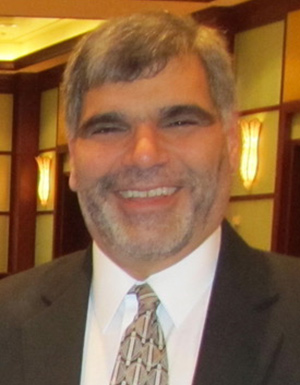 Leonard J. Cimini, Jr., received the Ph.D. degree from the University of Pennsylvania in 1982. He was with AT&T, first in Bell Laboratories and then AT&T Laboratories, for 20 years. He has been a Professor with the University of Delaware since 2002. He was elected an IEEE Fellow for contributions to the theory and practice of high-speed wireless communications in 2000 (and a Life Fellow in 2021). Len performed early work detailing the substantial benefits of OFDM for wireless applications, especially in overcoming the high-bit-rate limitations imposed by the channel. The insights gained from this, and his subsequent work, have influenced the work of many researchers, as well as the standardization of WiFi, WiMAX, and LTE. For this pioneering work, he was a recipient of the 2007 James R. Evans Avant Garde Award from the IEEE Vehicular Technology Society, the 2010 Innovators Award from the NJ Inventors Hall of Fame, the 2024 IEEE Eric E. Sumner Award, and the 2024 Edwin H. Armstrong Award from the IEEE Communications Society.
Leonard J. Cimini, Jr., received the Ph.D. degree from the University of Pennsylvania in 1982. He was with AT&T, first in Bell Laboratories and then AT&T Laboratories, for 20 years. He has been a Professor with the University of Delaware since 2002. He was elected an IEEE Fellow for contributions to the theory and practice of high-speed wireless communications in 2000 (and a Life Fellow in 2021). Len performed early work detailing the substantial benefits of OFDM for wireless applications, especially in overcoming the high-bit-rate limitations imposed by the channel. The insights gained from this, and his subsequent work, have influenced the work of many researchers, as well as the standardization of WiFi, WiMAX, and LTE. For this pioneering work, he was a recipient of the 2007 James R. Evans Avant Garde Award from the IEEE Vehicular Technology Society, the 2010 Innovators Award from the NJ Inventors Hall of Fame, the 2024 IEEE Eric E. Sumner Award, and the 2024 Edwin H. Armstrong Award from the IEEE Communications Society.
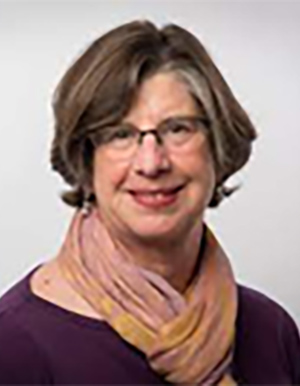 Sarah Kate Wilson is a Fellow of IEEE. She received the A.B. degree (Hons.) in mathematics from the Bryn Mawr College, in 1979, and the Ph.D. degree in electrical engineering from Stanford University, in 1994. She has worked in both industry and academia and has been a Visiting Professor at the Lulea University of Technology, the Royal Institute of Technology, Stockholm, Stanford University, and Northeastern University. She is currently a Professor in electrical and computer engineering at Santa Clara University. She has served as an Editor for IEEE Transactions on Wireless Communications, IEEE Communications Letters, IEEE Transactions on Communications, and the Editor-in-Chief of IEEE Communications Letters. She served as the Director of Journals (2012–2013) and the Vice-President of Publications (2014–2015) for the IEEE Communications Society. She was awarded the IEEE Communications Society for "sustained and innovative contributions to publications" and won the 2018 IEEE Education Society Harriet Rigas Award “for excellence in communications engineering, education, and promoting equity.”
Sarah Kate Wilson is a Fellow of IEEE. She received the A.B. degree (Hons.) in mathematics from the Bryn Mawr College, in 1979, and the Ph.D. degree in electrical engineering from Stanford University, in 1994. She has worked in both industry and academia and has been a Visiting Professor at the Lulea University of Technology, the Royal Institute of Technology, Stockholm, Stanford University, and Northeastern University. She is currently a Professor in electrical and computer engineering at Santa Clara University. She has served as an Editor for IEEE Transactions on Wireless Communications, IEEE Communications Letters, IEEE Transactions on Communications, and the Editor-in-Chief of IEEE Communications Letters. She served as the Director of Journals (2012–2013) and the Vice-President of Publications (2014–2015) for the IEEE Communications Society. She was awarded the IEEE Communications Society for "sustained and innovative contributions to publications" and won the 2018 IEEE Education Society Harriet Rigas Award “for excellence in communications engineering, education, and promoting equity.”
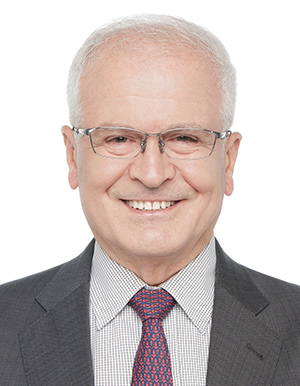 Hikmet Sari is a Professor at Nanjing University of Posts and Telecommunications, Nanjing, China. From 2003 to 2016, he was Professor and Department Head at Supelec, near Paris, and Chief Scientist of Sequans Communications. Prior to this, he held various research and managerial positions in industry including Philips, SAGEM, Alcatel, Pacific Broadband Communications, and Juniper Networks. He holds an Engineering Diploma and a Ph.D. from the ENST, Paris, France. He was elevated to the IEEE Fellow Grade in 1995 for his contributions during the 1980s to advanced signal processing for digital microwave radio systems, but he is best known today for his pioneering work in the 1990s on OFDM, OFDMA, and Single-Carrier Transmission with Frequency-Domain Equalization (SC-FDE), which significantly influenced the IEEE 802.16e and the 3GPP LTE standards. He also published the first papers on Non-Orthogonal Multiple Access (NOMA) back in the year 2000. His distinctions include election to the IEEE Fellow Grade (1995), the Andre Blondel Medal (1995), the Edwin H. Armstrong Achievement Award (2003), the Harold Sobol Award (2012), election to the European Academy (2012), election to the Science Academy of Turkey (2012), and the Heinrich Hertz Award (2021).
Hikmet Sari is a Professor at Nanjing University of Posts and Telecommunications, Nanjing, China. From 2003 to 2016, he was Professor and Department Head at Supelec, near Paris, and Chief Scientist of Sequans Communications. Prior to this, he held various research and managerial positions in industry including Philips, SAGEM, Alcatel, Pacific Broadband Communications, and Juniper Networks. He holds an Engineering Diploma and a Ph.D. from the ENST, Paris, France. He was elevated to the IEEE Fellow Grade in 1995 for his contributions during the 1980s to advanced signal processing for digital microwave radio systems, but he is best known today for his pioneering work in the 1990s on OFDM, OFDMA, and Single-Carrier Transmission with Frequency-Domain Equalization (SC-FDE), which significantly influenced the IEEE 802.16e and the 3GPP LTE standards. He also published the first papers on Non-Orthogonal Multiple Access (NOMA) back in the year 2000. His distinctions include election to the IEEE Fellow Grade (1995), the Andre Blondel Medal (1995), the Edwin H. Armstrong Achievement Award (2003), the Harold Sobol Award (2012), election to the European Academy (2012), election to the Science Academy of Turkey (2012), and the Heinrich Hertz Award (2021).
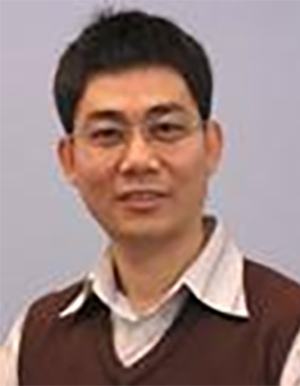 Jinhong Yuan is a Professor of Telecommunications with the School of Electrical Engineering and Telecommunications. From 1997 to 1999 he was a Research Fellow at the School of Electrical Engineering, the University of Sydney, Sydney, Australia. In 2000 he joined the School of Electrical Engineering and Telecommunications, the University of New South Wales, Sydney, Australia, where he is currently a Professor and Head of Telecommunications of the school. He has published two books, two book chapters, over 300 papers in telecommunications journals and conference proceedings and 40 industrial reports. He is a co-inventor of one patent on MIMO systems and two patents on low-density-parity-check (LDPC) codes. He co-authored four Best Paper Awards and one Best Poster Award, including a Best Paper Award of IEEE Wireless Communications and Networking Conference (WCNC), Cancun, Mexico in 2011, and a Best Paper Award of IEEE International Symposium on Wireless Communications Systems (ISWCS), Trondheim, Norway in 2007. He serves as an Associate Editor for IEEE Transactions on Communications and an Associate Editor for IEEE Transactions on Wireless Communications.
Jinhong Yuan is a Professor of Telecommunications with the School of Electrical Engineering and Telecommunications. From 1997 to 1999 he was a Research Fellow at the School of Electrical Engineering, the University of Sydney, Sydney, Australia. In 2000 he joined the School of Electrical Engineering and Telecommunications, the University of New South Wales, Sydney, Australia, where he is currently a Professor and Head of Telecommunications of the school. He has published two books, two book chapters, over 300 papers in telecommunications journals and conference proceedings and 40 industrial reports. He is a co-inventor of one patent on MIMO systems and two patents on low-density-parity-check (LDPC) codes. He co-authored four Best Paper Awards and one Best Poster Award, including a Best Paper Award of IEEE Wireless Communications and Networking Conference (WCNC), Cancun, Mexico in 2011, and a Best Paper Award of IEEE International Symposium on Wireless Communications Systems (ISWCS), Trondheim, Norway in 2007. He serves as an Associate Editor for IEEE Transactions on Communications and an Associate Editor for IEEE Transactions on Wireless Communications.
IP2: Cybersecurity in a Mobile Wireless World: What More is Required?
Monday, June 10 16:30 - 18:00//LOCATION: Governor's Square 14, Concourse Level
Moderator: Roger Nichols, Keysight Technologies, Inc.
Panelists:
- Brian Daly, AT&T; AVP Wireless Technology and Standards
- Jeffrey Cichonski, National Institute of Standards and Technology (NIST)
- Abhimanyu Gosain, Director of Industry Engagement for The Institute of Wireless Internet of Things; Northeastern University
- Taylor Hartley, Ericsson North America; Network Security Solutions Architect
- Daehyeok Kim, University of Texas at Austin
Abstract:
The evolution of mobile wireless from luxury to societal necessity will require a different approach to security and resilience. 5G and subsequent generations will operate like cloud applications. Network functions (NF) even into the RAN are now virtualized. Cyber-security techniques for fixed networks are necessary, but not sufficient:
5G and 6G will continue to expand use-cases and thus drive unprecedented growth in the threat surface.Wireless mobile clients are often associated with individuals or with complex machines. Complications are driven by:
The location, and motion of the client is known (and often is predictable) by the network.
Clients from anywhere in the globe must be authenticated and authorized as a matter of course.
The expansion of non-smart-phone clients combined with the use in private networks (and the potential for clients to move between private and public networks).
Three additional factors have parallels in wireline and computational networks but have unique impact on wireless:
Open interface/API and open-source network functions expanding from the Core to the RAN.
Virtualization of network functions and the interconnections into cloud and edge computing means physical location of network functionality is distributed thus requiring a different approach to authentication and authorization.
All this, when combined with network-awareness of the applications in use, will drive an unprecedented ability to track individuals’ location and behaviors. What will be required to maintain the security of the networks? What are the roles of standards, policy makers, research, and industry in addressing requirements for security and related network resilience? This panel, with representatives from across these disciplines, will explore how the security issues will evolve and how best industry, academia, and government should coordinate to ensure the interconnected communications systems will be secure while continuing to grow with broader use in society.
Bios:
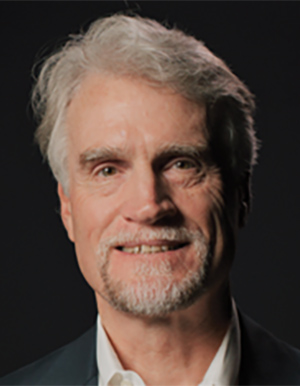 Roger Nichols is an acknowledged subject-matter expert in mobile wireless communications design and measurement technologies. He has 39 years of engineering and management experience at Hewlett-Packard, Agilent, and Keysight spanning roles in R&D, marketing, and manufacturing. With experience in mobile wireless technology on all five previous generations, he directed Keysight’s 5G Program starting in 2014 and he has been directing Keysight’s 6G program since its inception in 2019. He is a member of the FCC Technological Advisory Council and is also Keysight’s strategic director of wireless standards. Roger holds a BSEE from the University of Colorado, Boulder.
Roger Nichols is an acknowledged subject-matter expert in mobile wireless communications design and measurement technologies. He has 39 years of engineering and management experience at Hewlett-Packard, Agilent, and Keysight spanning roles in R&D, marketing, and manufacturing. With experience in mobile wireless technology on all five previous generations, he directed Keysight’s 5G Program starting in 2014 and he has been directing Keysight’s 6G program since its inception in 2019. He is a member of the FCC Technological Advisory Council and is also Keysight’s strategic director of wireless standards. Roger holds a BSEE from the University of Colorado, Boulder.
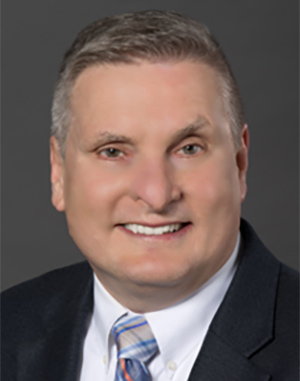 Brian Daly: As an AT&T Fellow and Assistant Vice President for Standards & Industry Alliances, Brian oversees AT&T’s strategy and leadership in global industry standards. Brian has a broad technology perspective, with focus on emerging technologies for 5G and beyond including public safety/mission critical services for FirstNet; wireless emergency alerts and earthquake early warning; C-V2X and UAS/UAVs; cybersecurity, NSEP, and critical infrastructure protection. Brian is engaged in programs with the DHS, DISA, and DoD, and is a leading contributor to the Alliance for Telecommunication Industry Solutions (ATIS) Board, TOPS Council and Standards Committee initiatives, resulting in the implementation of key industry standards. Brian is on the Executive Committee of the National Spectrum Consortium and has held appointments to the FCC’s Technological Advisory Council (TAC) and Communications Reliability, Security, and Interoperability Council (CSRIC). Brian also is a member of the FBI’s Infragard partnership. Brian holds Board positions on the National Public Safety Communications Council (NPSTC) and the IEEE International Standards and Technology Organization (IEEE-ISTO). Brian’s industry leadership roles include co-chair of the O-RAN Alliance Technical Steering Committee, co-chair of the Next G Alliance Steering Group, co-chair of the O-Ran Alliance Standards Development Focus Group, Chair of the GSM Association’s North American Fraud Forum and Security Group.
Brian Daly: As an AT&T Fellow and Assistant Vice President for Standards & Industry Alliances, Brian oversees AT&T’s strategy and leadership in global industry standards. Brian has a broad technology perspective, with focus on emerging technologies for 5G and beyond including public safety/mission critical services for FirstNet; wireless emergency alerts and earthquake early warning; C-V2X and UAS/UAVs; cybersecurity, NSEP, and critical infrastructure protection. Brian is engaged in programs with the DHS, DISA, and DoD, and is a leading contributor to the Alliance for Telecommunication Industry Solutions (ATIS) Board, TOPS Council and Standards Committee initiatives, resulting in the implementation of key industry standards. Brian is on the Executive Committee of the National Spectrum Consortium and has held appointments to the FCC’s Technological Advisory Council (TAC) and Communications Reliability, Security, and Interoperability Council (CSRIC). Brian also is a member of the FBI’s Infragard partnership. Brian holds Board positions on the National Public Safety Communications Council (NPSTC) and the IEEE International Standards and Technology Organization (IEEE-ISTO). Brian’s industry leadership roles include co-chair of the O-RAN Alliance Technical Steering Committee, co-chair of the Next G Alliance Steering Group, co-chair of the O-Ran Alliance Standards Development Focus Group, Chair of the GSM Association’s North American Fraud Forum and Security Group.
Brian received B.S.E and M.S. degrees in electrical engineering from Arizona State University. He holds an FAA Part 107 remote pilot certification and is a Senior Member of the U.S. Air Force Auxiliary-Civil Air Patrol. Brian is the AT&T coordinator for the Department of Homeland Security SHAred RESources (SHARES) High Frequency (HF) Radio Program, and an Army Auxiliarist. Brian holds over 180 issued patents in telecommunications, public safety, and cybersecurity."
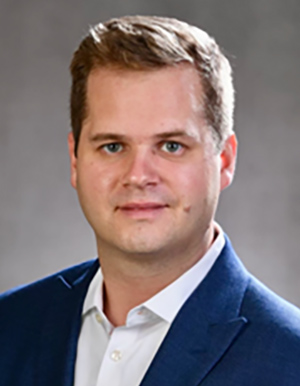 Jeffrey Cichonski is an Information Technology Specialist working with a broad array of technologies at the National Institute of Standards and Technology, working in the Applied Cybersecurity Division of the Information Technology Laboratory. He is an active member of 3GPP’s SA3 working group, the standards group responsible for specifying cellular security architectures and has been engaged in the development of 5G security. He is leading the National Cybersecurity Center of Excellence’s 5G Cybersecurity effort, a collaboration with industry providing a holistic approach to cybersecurity for 5g systems. Jeff has also been involved applied cybersecurity research focusing on cybersecurity for industrial control systems, next generation credentials, and LTE network security, with a specific interest in security for public safety cellular Implementations. He has a Bachelor of Science in Information Science and Technology from Penn State University.
Jeffrey Cichonski is an Information Technology Specialist working with a broad array of technologies at the National Institute of Standards and Technology, working in the Applied Cybersecurity Division of the Information Technology Laboratory. He is an active member of 3GPP’s SA3 working group, the standards group responsible for specifying cellular security architectures and has been engaged in the development of 5G security. He is leading the National Cybersecurity Center of Excellence’s 5G Cybersecurity effort, a collaboration with industry providing a holistic approach to cybersecurity for 5g systems. Jeff has also been involved applied cybersecurity research focusing on cybersecurity for industrial control systems, next generation credentials, and LTE network security, with a specific interest in security for public safety cellular Implementations. He has a Bachelor of Science in Information Science and Technology from Penn State University.
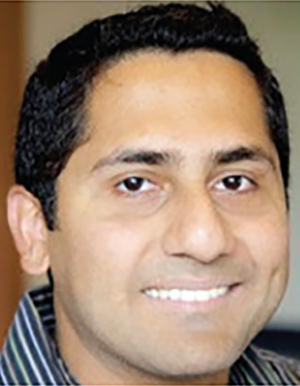 Abhimanyu (Manu) Gosain is a Technical Program Director for PAWR and Director of Industry Engagement for Institute of Wireless Internet of Things at Northeastern University. In this role, he is in charge of setting strategic goals and the research agenda for a $100 million public-private partnership for the NSF Platforms for Advanced Wireless Research (PAWR) program and $25M DARPA Colosseum program. His numerous professional publications and experience exemplify use-inspired basic research in the field of networking technologies such as LTE, 5G, dispersed computing, edge computing and Internet of Things. He is an IEEE Senior Member and serves as a board member for the OpenAirInterface Alliance. He received his M.S. degree from Tufts University and M.B.A. from Boston University with High Honors.
Abhimanyu (Manu) Gosain is a Technical Program Director for PAWR and Director of Industry Engagement for Institute of Wireless Internet of Things at Northeastern University. In this role, he is in charge of setting strategic goals and the research agenda for a $100 million public-private partnership for the NSF Platforms for Advanced Wireless Research (PAWR) program and $25M DARPA Colosseum program. His numerous professional publications and experience exemplify use-inspired basic research in the field of networking technologies such as LTE, 5G, dispersed computing, edge computing and Internet of Things. He is an IEEE Senior Member and serves as a board member for the OpenAirInterface Alliance. He received his M.S. degree from Tufts University and M.B.A. from Boston University with High Honors.
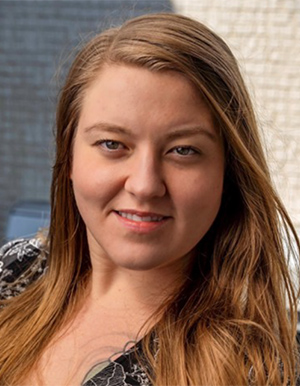 Taylor Hartley is a Network Security Solutions Architect for Network Product Solutions for Ericsson North America. Prior to joining Ericsson in 2022, Taylor served in the US Navy for 8 years specializing in military intelligence and wireless signals. Today, Taylor focuses on cybersecurity, US Government collaboration efforts, and emerging technologies, such as quantum, AI/ML, and 6G. Taylor represents Ericsson in a variety of working groups and committees including GSMA, CTIA, ATIS, IEEE, NIST, and CSCC. Taylor is a Certified Information Systems Security Professional (CISSP) and holds an MBA from the University of Colorado.
Taylor Hartley is a Network Security Solutions Architect for Network Product Solutions for Ericsson North America. Prior to joining Ericsson in 2022, Taylor served in the US Navy for 8 years specializing in military intelligence and wireless signals. Today, Taylor focuses on cybersecurity, US Government collaboration efforts, and emerging technologies, such as quantum, AI/ML, and 6G. Taylor represents Ericsson in a variety of working groups and committees including GSMA, CTIA, ATIS, IEEE, NIST, and CSCC. Taylor is a Certified Information Systems Security Professional (CISSP) and holds an MBA from the University of Colorado.
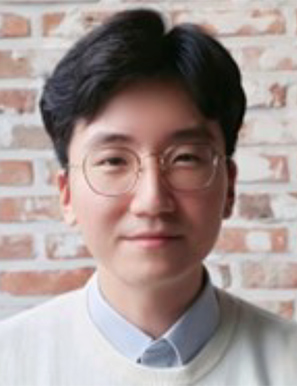 Daehyeok Kim is an Assistant Professor of Computer Science at the University of Texas at Austin. He co-leads the UT Networked Systems Research Group and is also a member of the Wireless Networking and Communications Group and 6G@UT. Prior to joining UT Austin, he was a senior researcher in the Office of the CTO in the Azure for Operators group and at Microsoft Research Redmond. His research interests lie at the intersection of systems and networking, with a focus on building software systems that improve the performance, efficiency, and resilience of data- and network-intensive applications running on emerging programmable infrastructures (e.g., programmable switches, NICs, and xPUs). He has also worked on various topics in security and wireless systems. He received his PhD from the Computer Science Department at Carnegie Mellon University, where he was advised by Vyas Sekar and Srinivasan Seshan. His dissertation introduced new abstractions and runtime systems to enable elastic and resilient in-network computing. His work was supported in part by the Microsoft Research PhD Fellowship. Prior to joining CMU, he as a research scientist at KAIST. He received a BS and MS degrees in Computer Science and Engineering from POSTECH, South Korea.
Daehyeok Kim is an Assistant Professor of Computer Science at the University of Texas at Austin. He co-leads the UT Networked Systems Research Group and is also a member of the Wireless Networking and Communications Group and 6G@UT. Prior to joining UT Austin, he was a senior researcher in the Office of the CTO in the Azure for Operators group and at Microsoft Research Redmond. His research interests lie at the intersection of systems and networking, with a focus on building software systems that improve the performance, efficiency, and resilience of data- and network-intensive applications running on emerging programmable infrastructures (e.g., programmable switches, NICs, and xPUs). He has also worked on various topics in security and wireless systems. He received his PhD from the Computer Science Department at Carnegie Mellon University, where he was advised by Vyas Sekar and Srinivasan Seshan. His dissertation introduced new abstractions and runtime systems to enable elastic and resilient in-network computing. His work was supported in part by the Microsoft Research PhD Fellowship. Prior to joining CMU, he as a research scientist at KAIST. He received a BS and MS degrees in Computer Science and Engineering from POSTECH, South Korea.
IP3: Exploring the Future of Sustainability in Communication with the Next G Alliance
Monday, June 10 14:30 - 16:00//LOCATION: Plaza Ballroom A, Concourse Level
Moderator: Sarah LaSelva, Director of 6G Marketing, Keysight/Next G Alliance, USA
Panelists:
- Carsten Baumann, Director of strategic initiatives, Schneider Electric, USA
- Gagandeep Bhatti, Senior Standardization Specialist 5G-Advanced and 6G, Nokia, USA
- Bhushan Joshi, Head of Sustainability & Corporate Responsibility, Ericsson, USA
- Micaela Giuhat, Director of 5G Policy & External Engagements, Microsoft, USA
- Hao Bi, Senior Director of Communication System Design, MediaTek, USA
Abstract:
The Next G Alliance's Green G working group brings together experts from across the ICT industry. They recently published white papers on sustainability KPIs for the RAN and data centers. During this panel, hear from the authors about these new KPIs and why they are important. This panel will also cover the latest technology and trends in sustainability for the perspectives of the different panelists.
Bios:
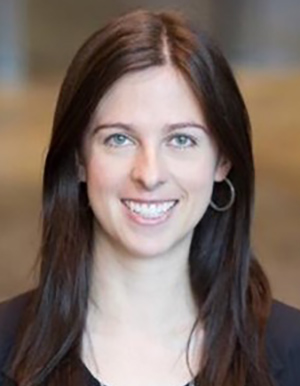 Sarah LaSelva: Sarah leads the marketing efforts for Keysight in 6G. She has over a decade of experience in test and measurement concentrating on wireless communications, both studying and promoting the latest wireless technologies. Throughout her career she has spent time in marketing, test engineering, and applications engineering.
Sarah LaSelva: Sarah leads the marketing efforts for Keysight in 6G. She has over a decade of experience in test and measurement concentrating on wireless communications, both studying and promoting the latest wireless technologies. Throughout her career she has spent time in marketing, test engineering, and applications engineering.
Prior to joining Keysight, Sarah worked at NI (National Instruments) as a product marketing manager for the software defined radio team where she gained a deep knowledge of SDR hardware, software, and wireless communications.
Sarah’s background is in microwave and millimeter wave technology. She has a BS in electrical engineering from Texas Tech University.
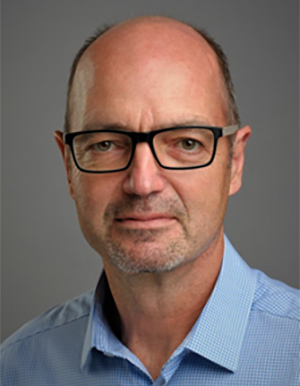 Carsten Baumann: In his role as a Solution Architect, he is helping clients with their Industrial IoT and Sustainability initiatives in the Commercial & Industrial and Data Center markets that allow to achieve greater resiliency, achieve sustainability objectives and create economic benefits. Prior, he supported the Consulting and Engineering community by advising on resource-optimized energy management solutions in the data center market. He offers nearly three decades of experience in the data center, broadcast, telecommunications, AV and IT industry. His papers have been published in peer-reviewed journals and he frequently speaks on national and international venues.
Carsten Baumann: In his role as a Solution Architect, he is helping clients with their Industrial IoT and Sustainability initiatives in the Commercial & Industrial and Data Center markets that allow to achieve greater resiliency, achieve sustainability objectives and create economic benefits. Prior, he supported the Consulting and Engineering community by advising on resource-optimized energy management solutions in the data center market. He offers nearly three decades of experience in the data center, broadcast, telecommunications, AV and IT industry. His papers have been published in peer-reviewed journals and he frequently speaks on national and international venues.
Baumann, joined Schneider Electric in early 2012. He is an active member of iMasons and the Green G working group (Next G). Until 2018, he served as Treasurer and President on the board of AFCOM Southern California, was chairman for The Global Society for Asset Management (G-SAM).
Baumann recently completed a program at MIT in Smart Manufacturing and holds an electrical engineering degree from the Theodor-Litt-Schule in Giessen, Germany.
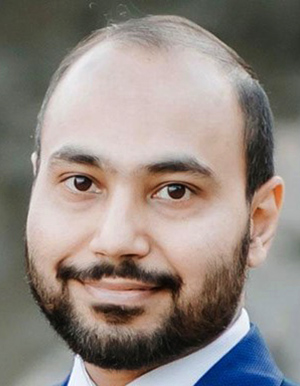 Gagandeep Bhatti is a Senior Standardization Specialist in 5G-Advanced and 6G technologies at Nokia, with over 16 years of experience spanning 3G, 4G, 5G, ORAN (RIC), and now 6G. He currently serves as the Vice Chair of the Green G Working Group within the Next G Alliance (an ATIS initiative), the lead editor of the RAN KPI white paper, and contributor to the several Green G initiatives, showcasing his commitment to sustainability in technology. He is actively involved in the research and (pre) standardization of 6G and has made contributions to 3GPP 5G-Advanced RAN1/2 Network Energy Savings (NES), including publications and patent filings. He's an expert in R&D product software design and specification with a strong background in NPI technical management. He holds a B.E. and a diploma in Computer Engineering from Thapar Institute of Engineering & Technology, India.
Gagandeep Bhatti is a Senior Standardization Specialist in 5G-Advanced and 6G technologies at Nokia, with over 16 years of experience spanning 3G, 4G, 5G, ORAN (RIC), and now 6G. He currently serves as the Vice Chair of the Green G Working Group within the Next G Alliance (an ATIS initiative), the lead editor of the RAN KPI white paper, and contributor to the several Green G initiatives, showcasing his commitment to sustainability in technology. He is actively involved in the research and (pre) standardization of 6G and has made contributions to 3GPP 5G-Advanced RAN1/2 Network Energy Savings (NES), including publications and patent filings. He's an expert in R&D product software design and specification with a strong background in NPI technical management. He holds a B.E. and a diploma in Computer Engineering from Thapar Institute of Engineering & Technology, India.
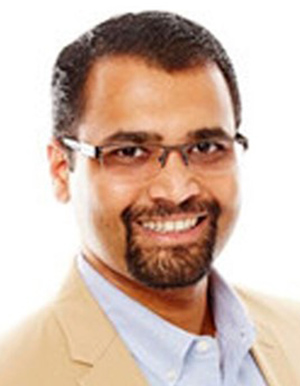 Bhushan Joshi is Head of Sustainability & Corporate Responsibility for Ericsson North America. As Ericsson’s lead in the drive for sustainability, Bhushan advocates for the role of the Information Communications Technology sector in enabling other industries to take exponential climate action. He is also focused on developing strategies to help telecom service providers in the United States and Canada achieve their energy and sustainability goals with the introduction of 5G.
Bhushan Joshi is Head of Sustainability & Corporate Responsibility for Ericsson North America. As Ericsson’s lead in the drive for sustainability, Bhushan advocates for the role of the Information Communications Technology sector in enabling other industries to take exponential climate action. He is also focused on developing strategies to help telecom service providers in the United States and Canada achieve their energy and sustainability goals with the introduction of 5G.
Bhushan Joshi has more than 15 years of professional experience in corporate sustainability, business development, energy management, renewables, sustainability reporting, sustainability strategy development and program management. He is an experienced in-demand public speaker on the topics of sustainability and corporate responsibility, presenting at prestigious events including Techonomy, the Nordic Innovation Summit, Institute of Electrical and Electronics Engineers, ATIS Next G Alliance and Assembly Magazine.
Bhushan Joshi has an MBA in Sustainable Business Practices from Duquesne University and holds undergraduate engineering degrees from both Ferris State University in Michigan and Bharati Vidyapeeth Deemed University in India
 Micaela Giuhat joined the Microsoft CELA 5G Strategy and Ecosystems team in August 2020. Prior to that, she held executive roles in several telecom companies, most recently she served as a Vice President of Market Strategy for Metaswitch Networks.
Micaela Giuhat joined the Microsoft CELA 5G Strategy and Ecosystems team in August 2020. Prior to that, she held executive roles in several telecom companies, most recently she served as a Vice President of Market Strategy for Metaswitch Networks.
Micaela brings along more than 30 years of industry experience, with previous executive positions in leading Unified Communications, Session Border Controller, and IP Networking companies in the U.S as well as abroad.
She has extensive telecom background, and experience, contributions and leadership in different standards and industry bodies, such as ITU, Softswitch Consortium, and has been on the Board of Directors of the i3Forum until 2020. In 2021, she was nominated Vice-Chair of the Green G Working Group and Chair of the Policy Committee of the Next G Alliance, as well as Co-Chair of CSRIC Working Group 3.
Her experience spans wireline and wireless communications, with focus on virtualization, cloudification and 5G, in different roles, such as Product Management, Product Marketing, and M&A.
Giuhat holds a master in EE from the Romanian Polytechnic Institute, and an MBA from Ottawa University.
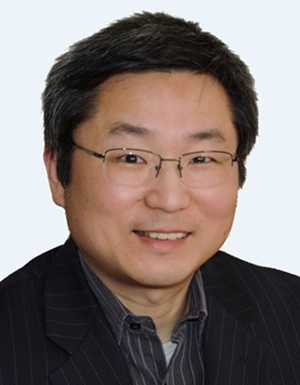 Hao Bi is a renowned research and innovation leader in the development of wireless communication technologies. He has broad expertise and taken various research and standards leadership roles in driving innovation and standardization of air interface, radio access network, and packet core network from 3G CDMA, to 4G LTE, to 5G NR. He has successfully conceived and developed multiple key features with profound standards and market traction, led large multi-site engineering teams, and delivered strategic innovations shaping the evolution of cellular communication systems. Currently as Senior Director of Communication System Design in MediaTek, he has been leading 6G research and standards at the intersection of communication and computing, immersive multimedia, and artificial intelligence.
Hao Bi is a renowned research and innovation leader in the development of wireless communication technologies. He has broad expertise and taken various research and standards leadership roles in driving innovation and standardization of air interface, radio access network, and packet core network from 3G CDMA, to 4G LTE, to 5G NR. He has successfully conceived and developed multiple key features with profound standards and market traction, led large multi-site engineering teams, and delivered strategic innovations shaping the evolution of cellular communication systems. Currently as Senior Director of Communication System Design in MediaTek, he has been leading 6G research and standards at the intersection of communication and computing, immersive multimedia, and artificial intelligence.
IP4: Reconfigurable intelligent surface (RIS): on its way to wide deployments
Monday, June 10 16:30 - 18:00//LOCATION: Plaza Ballroom A, Concourse Level
Moderator: Yifei Yuan
Panelists:
- Macro Di Renzo, Paris-Saclay University, France
- Satoshi Nagata, NTT DOCOMO, Japan
- Taro Eichler, Rohde-Schwarz, Germany
- Arman Shojaeifard, InterDigital, Europe
Abstract:
Reconfigurable intelligent surface (RIS) is a revolutionary technology that combines the latest development in metasurface devices and the traditional multi-input-multi-output (MIMO) antenna technology. The enormous potential of RIS has generated huge interests from both academia and industry, with the belief that RIS will be a key physical layer technology in future 6G systems. In academia, the main efforts include metasurface designs, RIS communications algorithms, RIS channel modeling, etc. In industry, various promotion groups (e.g., IMT-2030 RIS Task Force Group), organizations (e.g., IEEE Emerging Technology Initiative of RIS), and alliances (e.g., RIS Tech Alliance) have been created. Several activities related to RIS standardization are also getting much of attention, for instance, Industry Specification Group (ISG) of RIS in European Telecommunications Standards Institute (ETSI), and a work item on network-controlled repeater in Third-Generation Partnership Project (3GPP) that can be seen as a predecessor of RIS. The RIS study in industry focuses more on system designs, performance evaluations, experiments/trials, etc. In addition to support wireless communications, RIS has found many other use cases such as sensing, security, etc.
As a revolutionary technology, RIS would see a number of challenges as it goes from academic research to practical designs for real systems. Significant amount of effort is needed not only from the field of communications, but also from the science & technology of metasurface devices. To be a key technology of 6G, RIS needs to demonstrate its potential of wide deployments in future networks and being able to provide general performance benefits such as system capacity, coverage, energy efficiency, etc.
This panel of experts will be engaged in discussions of
- Typical use cases, deployment scenarios and performance requirements for RIS in 6G
- Fundamental technologies of RIS for its potential wide deployment
- Design challenges for practical RIS systems and potential solutions
- Technologies related to RIS
Bios:
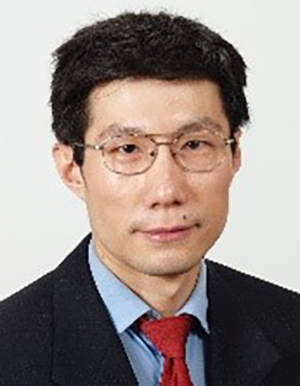 Yifei Yuan: Dr. Yuan is an IEEE Fellow, a Chief Expert of China Mobile Research Institute. He received his Bachelor & Master degrees from Tsinghua University, China, and a Ph. D degree from Carnegie Mellon University, USA. He was with Alcatel-Lucent from 2000 to 2008, working on 3G/4G key technologies. From 2008 to 2020, he was with ZTE as technical director and Chief Engineer, responsible for standards research on LTE-Advanced and 5G. Since January 2020, he has been with China Mobile Research Institute, responsible for advanced research of 6G air interface. His research interests include MIMO, channel coding, non-orthogonal multiple access (NOMA), internet-of-things (IoT), and their standardizations in 3GPP with receiving worldwide attention and recognition. He has more than 80 journal/conference papers and 150 granted patents. He is the Editor-in-Chief of Hans Wireless Communications, an Editor of IEEE Communications Letters and an Editor of China Communications. He is the leading Guest Editor of Special Issue on 6G New Multiple Access of China Communications. He serves as Student Competition Office of IEEE Emerging Technology Initiative (ETI) on New Generation Multiple Access (NGMA). He was the rapporteur of 3GPP 5G study on non-orthogonal multiple access (NOMA). He is the recipient of the Best Paper Award by IEEE Communications Society Asia-Pacific Board for a paper on NOMA in IEEE Communications Magazine. He is the Chair of Task force group of New Multiple Access in IMT-2030 (6G) Promotion Group of China.
Yifei Yuan: Dr. Yuan is an IEEE Fellow, a Chief Expert of China Mobile Research Institute. He received his Bachelor & Master degrees from Tsinghua University, China, and a Ph. D degree from Carnegie Mellon University, USA. He was with Alcatel-Lucent from 2000 to 2008, working on 3G/4G key technologies. From 2008 to 2020, he was with ZTE as technical director and Chief Engineer, responsible for standards research on LTE-Advanced and 5G. Since January 2020, he has been with China Mobile Research Institute, responsible for advanced research of 6G air interface. His research interests include MIMO, channel coding, non-orthogonal multiple access (NOMA), internet-of-things (IoT), and their standardizations in 3GPP with receiving worldwide attention and recognition. He has more than 80 journal/conference papers and 150 granted patents. He is the Editor-in-Chief of Hans Wireless Communications, an Editor of IEEE Communications Letters and an Editor of China Communications. He is the leading Guest Editor of Special Issue on 6G New Multiple Access of China Communications. He serves as Student Competition Office of IEEE Emerging Technology Initiative (ETI) on New Generation Multiple Access (NGMA). He was the rapporteur of 3GPP 5G study on non-orthogonal multiple access (NOMA). He is the recipient of the Best Paper Award by IEEE Communications Society Asia-Pacific Board for a paper on NOMA in IEEE Communications Magazine. He is the Chair of Task force group of New Multiple Access in IMT-2030 (6G) Promotion Group of China.
Dr. Yuan has authored/co-authored 12 books on LTE-Advanced relay (in English) published by Springer, LTE-Advanced key technologies & system performance, narrow-band (NB) IoT and its standards evolution, 5G NR channel coding (also in English by CRC Press), 5G ultra-dense networks (UDN), 5G non-orthogonal multiple access (also in English by CRC Press), 5G random access enhancements, 5G massive MIMO enhancements, 5G unlicensed spectrum, 6G air interface, respectively
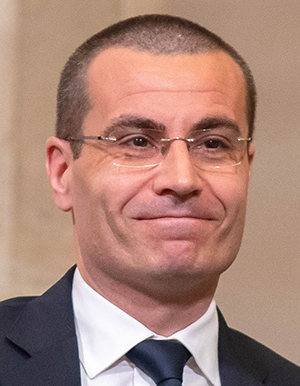 Macro Di Renzo received the Laurea (cum laude) and Ph.D. degrees in electrical engineering from the University of L’Aquila, Italy in 2003 and 2007, respectively, and the Habilitation à Diriger des Recherches (Doctor of Science) degree from University Paris-Sud (now Paris-Saclay University), France, in 2013. Since 2010, he has been with the French National Center for Scientific Research (CNRS), where he is a CNRS Research Director (Professor) with the Laboratory of Signals and Systems (L2S) of Paris-Saclay University – CNRS and CentraleSupelec, Paris, France. In Paris-Saclay University, he serves as the coordinator of the Communications and Networks Research Area of the Laboratory of Excellence DigiCosme, and as a member of the Admission and Evaluation Committee of the Ph.D. School on Information and Communication Technologies. He was the Editor-in-Chief of IEEE Communications Letters. In 2017-2020, he was a distinguished lecturer of the IEEE Vehicular Technology Society and IEEE Communications Society. He has received several research distinctions, which include the SEE-IEEE Alain Glavieux Award, the IEEE Jack Neubauer Memorial Best Systems Paper Award, the Royal Academy of Engineering Distinguished Visiting Fellowship, the Nokia Foundation Visiting Professorship, the Fulbright Fellowship, and the 2021 EURASIP Journal on Wireless Communications and Networking Best Paper Award. He is a Fellow of the IEEE, a Fellow of the UK Institution of Engineering and Technology (IET), a Fellow of the Asia-Pacific Artificial Intelligence Association (AAIA), an ordinary member of the European Academy of Sciences and Arts (EASA), and an ordinary member of the Academy of Europe (AE). Also, he is a highly cited researcher
Macro Di Renzo received the Laurea (cum laude) and Ph.D. degrees in electrical engineering from the University of L’Aquila, Italy in 2003 and 2007, respectively, and the Habilitation à Diriger des Recherches (Doctor of Science) degree from University Paris-Sud (now Paris-Saclay University), France, in 2013. Since 2010, he has been with the French National Center for Scientific Research (CNRS), where he is a CNRS Research Director (Professor) with the Laboratory of Signals and Systems (L2S) of Paris-Saclay University – CNRS and CentraleSupelec, Paris, France. In Paris-Saclay University, he serves as the coordinator of the Communications and Networks Research Area of the Laboratory of Excellence DigiCosme, and as a member of the Admission and Evaluation Committee of the Ph.D. School on Information and Communication Technologies. He was the Editor-in-Chief of IEEE Communications Letters. In 2017-2020, he was a distinguished lecturer of the IEEE Vehicular Technology Society and IEEE Communications Society. He has received several research distinctions, which include the SEE-IEEE Alain Glavieux Award, the IEEE Jack Neubauer Memorial Best Systems Paper Award, the Royal Academy of Engineering Distinguished Visiting Fellowship, the Nokia Foundation Visiting Professorship, the Fulbright Fellowship, and the 2021 EURASIP Journal on Wireless Communications and Networking Best Paper Award. He is a Fellow of the IEEE, a Fellow of the UK Institution of Engineering and Technology (IET), a Fellow of the Asia-Pacific Artificial Intelligence Association (AAIA), an ordinary member of the European Academy of Sciences and Arts (EASA), and an ordinary member of the Academy of Europe (AE). Also, he is a highly cited researcher
 Satoshi Nagata received his B.E. and M.E. degrees from Tokyo Institute of Technology, Tokyo, Japan, in 2001 and 2003, respectively. In 2003, he joined NTT DOCOMO, INC. He worked on the research and development for wireless access technologies for LTE, LTE-Advanced, and 5G. He had contributed to 3GPP over 15 years, and contributed 3GPP TSG-RAN WG1 as a vice chairman during November 2011 to August 2013, and contributed as a chairman during August 2013 to August 2017. He had also contributed 3GPP TSG-RAN as a vice chairman during March 2017 to March 2021, and currently a vice chairman of 3GPP TSG-SA since March 2021.
Satoshi Nagata received his B.E. and M.E. degrees from Tokyo Institute of Technology, Tokyo, Japan, in 2001 and 2003, respectively. In 2003, he joined NTT DOCOMO, INC. He worked on the research and development for wireless access technologies for LTE, LTE-Advanced, and 5G. He had contributed to 3GPP over 15 years, and contributed 3GPP TSG-RAN WG1 as a vice chairman during November 2011 to August 2013, and contributed as a chairman during August 2013 to August 2017. He had also contributed 3GPP TSG-RAN as a vice chairman during March 2017 to March 2021, and currently a vice chairman of 3GPP TSG-SA since March 2021.
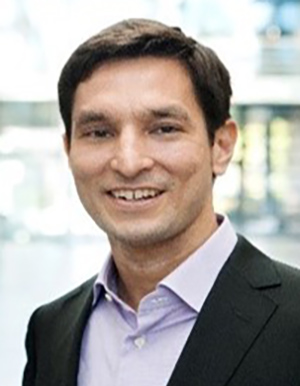 Taro Eichler is Technology Manager for wireless communications and photonics at Rohde & Schwarz in Munich with a focus on 5G/6G technologies. With 15 years of experience in wireless communication, he is currently working on 6G industry research projects covering THz communication, photonics and reconfigurable intelligent surfaces, also representing the company in the ETSI ISG THz. Prior to joining Rohde & Schwarz, Taro worked for Intel Corporation as specialist for photonic communication solutions and for NTT Basic Research Laboratories. He also worked on research projects at The University of Tokyo in the field of quantum optics with a scholarship by the Alexander-von-Humboldt foundation. He holds a diploma in physics from the Technical University of Munich with thesis at the Max-Planck-Institute for Quantum Optics and a Ph.D. in physics from the University of Bonn, Germany
Taro Eichler is Technology Manager for wireless communications and photonics at Rohde & Schwarz in Munich with a focus on 5G/6G technologies. With 15 years of experience in wireless communication, he is currently working on 6G industry research projects covering THz communication, photonics and reconfigurable intelligent surfaces, also representing the company in the ETSI ISG THz. Prior to joining Rohde & Schwarz, Taro worked for Intel Corporation as specialist for photonic communication solutions and for NTT Basic Research Laboratories. He also worked on research projects at The University of Tokyo in the field of quantum optics with a scholarship by the Alexander-von-Humboldt foundation. He holds a diploma in physics from the Technical University of Munich with thesis at the Max-Planck-Institute for Quantum Optics and a Ph.D. in physics from the University of Bonn, Germany
 Arman Shojaeifardt has extensive experience in research, development, and standardization of radio transmission technologies, protocols, and architectures. He is currently a Senior Manager at InterDigital, responsible for the Radio Interface R&D at the Wireless Lab Europe. He also serves as the Chair of the ETSI Industry Specification Group on Reconfigurable Intelligent Surfaces (ISG RIS). He was the Technical Manager of the Innovate-UK/CELTIC-NEXT European collaborative R&D project on AIMM (AI-enabled Massive MIMO) between 2018-2022. Prior to InterDigital, he was a Principal Researcher and 3GPP RAN1 WG Delegate at British Telecommunications. He received his PhD degree in Wireless Communications from King’s College London in 2012
Arman Shojaeifardt has extensive experience in research, development, and standardization of radio transmission technologies, protocols, and architectures. He is currently a Senior Manager at InterDigital, responsible for the Radio Interface R&D at the Wireless Lab Europe. He also serves as the Chair of the ETSI Industry Specification Group on Reconfigurable Intelligent Surfaces (ISG RIS). He was the Technical Manager of the Innovate-UK/CELTIC-NEXT European collaborative R&D project on AIMM (AI-enabled Massive MIMO) between 2018-2022. Prior to InterDigital, he was a Principal Researcher and 3GPP RAN1 WG Delegate at British Telecommunications. He received his PhD degree in Wireless Communications from King’s College London in 2012
IP5: Convergence of Quantum Computing, Cybersecurity and Machine Learning
Tuesday, June 11 16:30 - 18:00//LOCATION: Plaza Ballroom A, Concourse Level
Moderator: Pino Caballero-Gil, University of La Laguna, Spain
Panelists:
- Francisco Martin-Fernandez. IBM Research
- Elías F. Combarro. University of Oviedo, Spain
- Eduardo Sáenz de Cabezón. Universidad de La Rioja, Spain
- Daniel Escanez-Exposito, University of La Laguna, Spain
Abstract:
In the ever-evolving landscape of technology, the intersection of Quantum Computing, Cybersecurity, and Machine Learning constitutes a rich interdisciplinary nexus, brimming with both prospects and challenges. As we verge on the cusp of the post-quantum epoch, the imperative to comprehend, debate, and capitalize on the synergies of these interwoven domains intensifies. This Panel convenes a cadre of four distinguished speakers, hailing from the spheres of both industry and academia, to foster insightful discourse on this subject at the IEEE Conference on Communications.
The realm of Quantum Security, characterized by its intricate blend of promise and complexity, stands at the forefront of a dualistic horizon: it harbours the potential to radically transform Cryptography and fortify the safeguarding of sensitive data, yet concurrently, it poses a formidable challenge to our established cybersecurity frameworks. The pivotal dialogue we endeavour to engage in with this Panel seeks to unravel the strategies for harnessing Quantum Technologies' capabilities while simultaneously reinforcing our defences against the nascent spectrum of threats.
The incorporation of Artificial Intelligence and Machine Learning into this discourse elevates its significance. These transformative technologies, with their extensive cross-industrial applications, maintain a nuanced symbiosis with quantum developments. They are poised not merely to reap the computational windfalls of Quantum Computing but are also instrumental in fortifying security frameworks within an ever-more intricate digital milieu. This symbiotic relationship underscores a dual-faceted narrative: one where AI and Machine Learning are both beneficiaries of quantum innovation and pivotal allies in the quest to architect robust defenses against sophisticated cyber threats.
Our esteemed Panel comprises industry visionaries and academic luminaries, each contributing unique insights. Francisco Martin-Fernandez is Senior Technical Staff Member of IBM Quantum at IBM Research (USA). Elías F. Combarro is full professor at the University of Oviedo (Spain) and Spain’s representative on the Advisory Board of the CERN Quantum Technology Initiative. Eduardo Sáenz de Cabezón is a professor at the Universidad de La Rioja (Spain) whose online course on introduction to quantum computing has been followed by almost four million people. Our esteemed Panel comprises industry visionaries and academic luminaries, each contributing unique insights. Francisco Martin-Fernandez is Senior Technical Staff Member of IBM Quantum at IBM Research (USA). Elías F. Combarro is full professor at the University of Oviedo (Spain) and Spain’s representative on the Advisory Board of the CERN Quantum Technology Initiative. Eduardo Sáenz de Cabezón is a professor at the Universidad de La Rioja (Spain) whose online course on introduction to quantum computing has been followed by almost four million people. Daniel Escanez-Exposito is a PhD student in quantum computing and cybersecurity at the University of La Laguna (Spain) and author of an extensive quantum software library supported by Qiskit (IBM). Finally, the moderator is Pino Caballero-Gil, full professor at the University of La Laguna (Spain) and leader of the Cryptology Research Group. All of them will bring their invaluable perspectives to the discourse to share their expertise. Finally, the moderator is Pino Caballero-Gil, full professor at the University of La Laguna (Spain) and leader of the Cryptology Research Group. All of them will bring their invaluable perspectives to the discourse to share their expertise.
Bios:
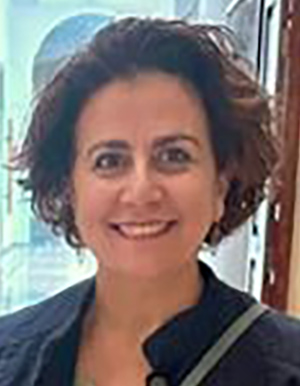 Pino Caballero-Gil is a Full Professor at the Department of Computer Engineering and Systems, University of La Laguna, Spain. She is responsible for the Cryptology research group and director of the Cybersecurity Chair. She has published over 350 papers in peer-refereed international journals and conferences on the following topics: quantum and post-quantum cryptography, cryptanalysis and design of stream ciphers, strong identification methods, security in wireless networks, design and analysis of cryptographic protocols, attacks on digital signature schemes and secure mobile applications. She has organized workshops, participated in industrial panels, presented works, given plenary talks and served as program committee at major IEEE Conferences such as the IEEE SP, SpaIoT, TrustCom, APCC, DRCN, WiOpt, ECCSC, IAS, ICCST, ICITA, ITCC, FGCT or WoWMoM, and was a founding member of the Spanish Chapter of IEEE Information Theory.
Pino Caballero-Gil is a Full Professor at the Department of Computer Engineering and Systems, University of La Laguna, Spain. She is responsible for the Cryptology research group and director of the Cybersecurity Chair. She has published over 350 papers in peer-refereed international journals and conferences on the following topics: quantum and post-quantum cryptography, cryptanalysis and design of stream ciphers, strong identification methods, security in wireless networks, design and analysis of cryptographic protocols, attacks on digital signature schemes and secure mobile applications. She has organized workshops, participated in industrial panels, presented works, given plenary talks and served as program committee at major IEEE Conferences such as the IEEE SP, SpaIoT, TrustCom, APCC, DRCN, WiOpt, ECCSC, IAS, ICCST, ICITA, ITCC, FGCT or WoWMoM, and was a founding member of the Spanish Chapter of IEEE Information Theory.
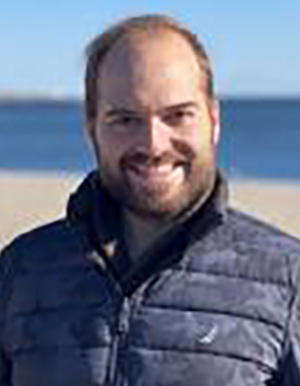 Francisco Martin-Fernandez is a distinguished Computer Science PhD (in Cryptography field) who has been at the forefront of quantum computing since 2016. Notably, he was integral to the team that unveiled the IBM Quantum Experience—the first web platform providing public access to quantum computers via the cloud. His expertise extends to orchestrating complex systems, demonstrated by his leadership in developing Middleware for Quantum, an open-source software stack designed to seamlessly integrate CPUs, GPUs, HPCs, and QPUs. Currently, he is pivotal in facilitating the integration of IBM Quantum services with external partners (like Senior Technical Staff Member in IBM Quantum) enhancing their product offerings with advanced quantum capabilities. Dr. Martin-Fernandez is renowned for his innovative approach and has significantly contributed to making quantum computing accessible, thereby influencing the landscape of modern computing. His work continues to bridge the gap between cutting-edge quantum technology and practical applications, ensuring that partners can leverage IBM Quantum's advancements. His commitment to collaboration and innovation is evident in his ability to lead teams, manage high-level projects, and drive the adoption of quantum technologies in various industries. Dr. Martin-Fernandez's contributions to the field are further highlighted by his prolific research output, with over 30 publications in prestigious conferences and impact journals, and an impressive portfolio of more than 20 patents in quantum computing. This remarkable scholarly and inventive output not only demonstrates his thought leadership and depth of knowledge but also his relentless pursuit to push the boundaries of quantum computing technology. His visionary approach and dedication have solidified his status as a leading figure in the academic and practical realms of quantum computing.
Francisco Martin-Fernandez is a distinguished Computer Science PhD (in Cryptography field) who has been at the forefront of quantum computing since 2016. Notably, he was integral to the team that unveiled the IBM Quantum Experience—the first web platform providing public access to quantum computers via the cloud. His expertise extends to orchestrating complex systems, demonstrated by his leadership in developing Middleware for Quantum, an open-source software stack designed to seamlessly integrate CPUs, GPUs, HPCs, and QPUs. Currently, he is pivotal in facilitating the integration of IBM Quantum services with external partners (like Senior Technical Staff Member in IBM Quantum) enhancing their product offerings with advanced quantum capabilities. Dr. Martin-Fernandez is renowned for his innovative approach and has significantly contributed to making quantum computing accessible, thereby influencing the landscape of modern computing. His work continues to bridge the gap between cutting-edge quantum technology and practical applications, ensuring that partners can leverage IBM Quantum's advancements. His commitment to collaboration and innovation is evident in his ability to lead teams, manage high-level projects, and drive the adoption of quantum technologies in various industries. Dr. Martin-Fernandez's contributions to the field are further highlighted by his prolific research output, with over 30 publications in prestigious conferences and impact journals, and an impressive portfolio of more than 20 patents in quantum computing. This remarkable scholarly and inventive output not only demonstrates his thought leadership and depth of knowledge but also his relentless pursuit to push the boundaries of quantum computing technology. His visionary approach and dedication have solidified his status as a leading figure in the academic and practical realms of quantum computing.
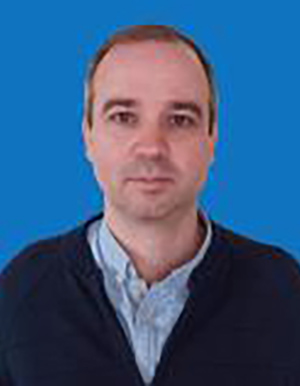 Elías F. Combarro holds degrees from the University of Oviedo (Spain) in both Mathematics (1997, award for second highest grades in the country) and Computer Science (2002, award for highest grades in the country). After being a visiting pre-doctoral researcher at the Novosibirsk State University (Russia), he obtained a Ph.D. in Mathematics (Oviedo, 2001) with a dissertation on the properties of some computable predicates, under the supervision of Prof. Andrey Morozov and Prof. Consuelo Martínez. Currently, Elías F. Combarro is a full professor at the Computer Science Department of the University of Oviedo, where he teaches Quantum Computing and Machine Learning at the masters level. In 2020, from CERN, he delivered a very popular series of online lectures on quantum computing that were followed live by thousands of people. He is also the author, together with Samuel González-Castillo, of the book "A Practical Guide to Quantum Machine Learning and Quantum Optimization" (Packt, 2023). He has published more than 50 research papers in international journals on topics such as Computability Theory, Machine Learning, Fuzzy Measures and Computational Algebra. His current research focuses on the application Quantum Computing to algebraic, optimization and machine learning problems. From July 2020 to January 2021 as well as in September 2022, he was a visiting scientist at CERN. Currently, he is the Spain representative in the Advisory Board of CERN Quantum Technology Initiative, and a member of the Advisory Board of SheQuantum, a non-profit organization that tries to inspire and educate women and girls across the globe to be the next generation of quantum engineers and scientists. Elías F. Combarro also was one of the founders and the first president of QSpain, a quantum computing think tank based in Spain.
Elías F. Combarro holds degrees from the University of Oviedo (Spain) in both Mathematics (1997, award for second highest grades in the country) and Computer Science (2002, award for highest grades in the country). After being a visiting pre-doctoral researcher at the Novosibirsk State University (Russia), he obtained a Ph.D. in Mathematics (Oviedo, 2001) with a dissertation on the properties of some computable predicates, under the supervision of Prof. Andrey Morozov and Prof. Consuelo Martínez. Currently, Elías F. Combarro is a full professor at the Computer Science Department of the University of Oviedo, where he teaches Quantum Computing and Machine Learning at the masters level. In 2020, from CERN, he delivered a very popular series of online lectures on quantum computing that were followed live by thousands of people. He is also the author, together with Samuel González-Castillo, of the book "A Practical Guide to Quantum Machine Learning and Quantum Optimization" (Packt, 2023). He has published more than 50 research papers in international journals on topics such as Computability Theory, Machine Learning, Fuzzy Measures and Computational Algebra. His current research focuses on the application Quantum Computing to algebraic, optimization and machine learning problems. From July 2020 to January 2021 as well as in September 2022, he was a visiting scientist at CERN. Currently, he is the Spain representative in the Advisory Board of CERN Quantum Technology Initiative, and a member of the Advisory Board of SheQuantum, a non-profit organization that tries to inspire and educate women and girls across the globe to be the next generation of quantum engineers and scientists. Elías F. Combarro also was one of the founders and the first president of QSpain, a quantum computing think tank based in Spain.
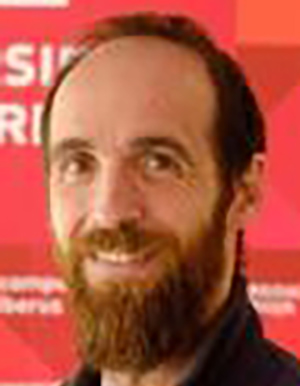 Eduardo Sáenz de Cabezón is a professor in Mathematics at the Universidad de La Rioja (Spain). He holds a degree in Mathematics (2001). He obtained a grant within the Marie Curie Research Training Network “Calculemus” in the University of Karlsruhe (Germany), after which he obtained a Ph.D. in Mathematics under the supervision of Luis J. Hernández (U. de La Rioja, Spain) and Werner M. Seiler (U. Karlsruhe, Germany). He has made several research stays in the University of Genova (Italy), Kassel (Germany), London School of Economics (UK) and was visiting professor at the University of Barcelona. His research is focused on computer algebra and its applications, where he has collaborated with the teams in Spain and Europe, has organized conferences and seminars and contributed with more than 50 papers. Together with prof. Henry P. Wynn (London School of Economics) developed the area of algebraic reliability. He is an advocate for quantum computing in the Spanish-speaking scientific community, both in Spain and the Americas. His lectures on quantum computing have been followed by thousands of students and his online course on introduction to quantum computing has been followed by almost four million people. Eduardo has an interest on quantum algorithms for computer algebra problems and combinatorial optimization.
Eduardo Sáenz de Cabezón is a professor in Mathematics at the Universidad de La Rioja (Spain). He holds a degree in Mathematics (2001). He obtained a grant within the Marie Curie Research Training Network “Calculemus” in the University of Karlsruhe (Germany), after which he obtained a Ph.D. in Mathematics under the supervision of Luis J. Hernández (U. de La Rioja, Spain) and Werner M. Seiler (U. Karlsruhe, Germany). He has made several research stays in the University of Genova (Italy), Kassel (Germany), London School of Economics (UK) and was visiting professor at the University of Barcelona. His research is focused on computer algebra and its applications, where he has collaborated with the teams in Spain and Europe, has organized conferences and seminars and contributed with more than 50 papers. Together with prof. Henry P. Wynn (London School of Economics) developed the area of algebraic reliability. He is an advocate for quantum computing in the Spanish-speaking scientific community, both in Spain and the Americas. His lectures on quantum computing have been followed by thousands of students and his online course on introduction to quantum computing has been followed by almost four million people. Eduardo has an interest on quantum algorithms for computer algebra problems and combinatorial optimization.
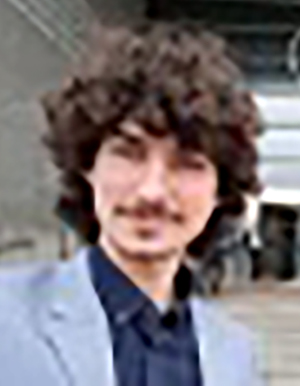 Daniel Escanez-Exposito holds a Master's degree in Quantum Computing from the International University of La Rioja (UNIR) and is a PhD student in Quantum Computing and Cybersecurity at the University of La Laguna (Spain). Currently, Daniel is a member of the Cryptology research group at the University of La Laguna (CryptULL). His research efforts focus on the theoretical foundations of Quantum Computing and its applications in Computer Science, Cryptography and Artificial Intelligence (AI), investigating new ways to represent the paradigm and work with the mathematical objects underlying it. He has participated in several research projects and agreements funded by governmental bodies such as the Ministry of Defense of Spain, and leading companies in the Canary Islands like Binter Systems, focused on advancing Quantum Computing and Post-Quantum Cryptography. He is the author of an extensive quantum software library supported by Qiskit (IBM), where he has designed several modules that allow the simple execution of quantum algorithms, applying them in cybersecurity (by implementing well-known QKD protocols such as BB84, Six-State, E91, B92, etc.), and AI (using variational quantum circuits for Quantum Machine Learning). He has supervised several Bachelor's and Master's Theses in Quantum Computing and Cybersecurity.
Daniel Escanez-Exposito holds a Master's degree in Quantum Computing from the International University of La Rioja (UNIR) and is a PhD student in Quantum Computing and Cybersecurity at the University of La Laguna (Spain). Currently, Daniel is a member of the Cryptology research group at the University of La Laguna (CryptULL). His research efforts focus on the theoretical foundations of Quantum Computing and its applications in Computer Science, Cryptography and Artificial Intelligence (AI), investigating new ways to represent the paradigm and work with the mathematical objects underlying it. He has participated in several research projects and agreements funded by governmental bodies such as the Ministry of Defense of Spain, and leading companies in the Canary Islands like Binter Systems, focused on advancing Quantum Computing and Post-Quantum Cryptography. He is the author of an extensive quantum software library supported by Qiskit (IBM), where he has designed several modules that allow the simple execution of quantum algorithms, applying them in cybersecurity (by implementing well-known QKD protocols such as BB84, Six-State, E91, B92, etc.), and AI (using variational quantum circuits for Quantum Machine Learning). He has supervised several Bachelor's and Master's Theses in Quantum Computing and Cybersecurity.
IP6: Envisioning 6G IoT: A Journey through Innovation and Challenges
Tuesday, June 11 16:30 - 18:00//LOCATION: Governor's Square 14, Concourse Level
Moderator: Mehrnaz Afshang, Senior Researcher, Ericsson Inc.
Panelists:
- Amitabha (Amitava) Ghosh, Nokia Fellow and Head, Radio Interface Group, Nokia Bell Labs
- Hongwei Zhang, Professor of Electrical and Computer Engineering and the Director of the Center for Wireless, Communities and Innovation, Iowa State University
- Tingfang Ji, Vice President of engineering in Wireless R&D, Qualcomm Inc.
- Eric Wang, Research Leader, Ericsson Inc.
Abstract:
As wireline and wireless boundaries continue to blur, next-generation passive optical networks must expand capabilities to embrace a wider spectrum of services, ranging from residential FTTP, to distributed access architecture (DAA) aggregation, mobile backhaul and enterprise connectivity. Future multi-service PON will need to harmonize low-latency, energy efficiency, and footprint savings while scaling symmetrically to 100G, 200G and future 1T.
This panel will explore how extended PON can sustainably support the array of emerging needs at the network edge through new PHY and MAC flexibility. Expert panels representing operators, system vendors and academia will examine multi-service use cases as well as the potential for unified PON standards to propel ecosystem health. By understanding what underlies the next era of converged access, we can guide development of tomorrow’s PON as the high-speed intelligent edge networks.
Bios:
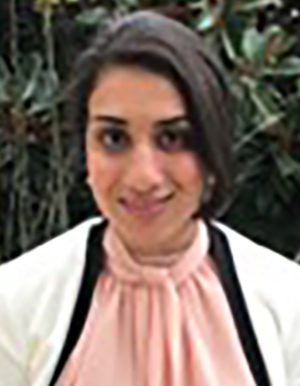 Mehrnaz Afshang is a senior researcher at Ericsson Research in Silicon Valley, USA. Currently, she leads Ericsson's 6G IoT project, engages in several industrial-university collaborations for shaping 6G, and actively contributes to 3GPP standardization of 5G-advanced. She joined Ericsson in 2018 following her postdoctoral experience in the Bradley Department of Electrical and Computer Engineering at Virginia Tech. She earned her Ph.D. degree from Nanyang Technological University, Singapore, in 2016. She is the recipient of the Ericsson 2022 Impact Award for extraordinary impact on Ericsson's business success and the 2016 Rising Star Award for the top 60 women in the field of computer electrical engineering. She also serves as the editor of the Frontiers in Communications and Networks journal. With over 50 issued patents and 40 publications in flagship IEEE journals and conferences, her research spans various areas, including 6G networks, IoT and zero energy devices, communication theory, mmWave communication, and full-duplex communication.
Mehrnaz Afshang is a senior researcher at Ericsson Research in Silicon Valley, USA. Currently, she leads Ericsson's 6G IoT project, engages in several industrial-university collaborations for shaping 6G, and actively contributes to 3GPP standardization of 5G-advanced. She joined Ericsson in 2018 following her postdoctoral experience in the Bradley Department of Electrical and Computer Engineering at Virginia Tech. She earned her Ph.D. degree from Nanyang Technological University, Singapore, in 2016. She is the recipient of the Ericsson 2022 Impact Award for extraordinary impact on Ericsson's business success and the 2016 Rising Star Award for the top 60 women in the field of computer electrical engineering. She also serves as the editor of the Frontiers in Communications and Networks journal. With over 50 issued patents and 40 publications in flagship IEEE journals and conferences, her research spans various areas, including 6G networks, IoT and zero energy devices, communication theory, mmWave communication, and full-duplex communication.
 Amitabha (Amitava) Ghosh (F’15) is a Nokia Fellow and works at Nokia Standards and Strategy. He joined Motorola in 1990 after receiving his Ph.D in Electrical Engineering from Southern Methodist University, Dallas. Since joining Motorola he worked on multiple wireless technologies starting from IS-95, cdma-2000, 1xEV-DV/1XTREME, 1xEV-DO, UMTS, HSPA, 802.16e/WiMAX and 3GPP LTE. He has 60 issued patents, has written multiple book chapters and has authored numerous external and internal technical papers. He is currently working on 5G Evolution and 6G technologies. He is also the chair of the NextGA (an US 6G initiative) National Roadmap Working Group. His research interests are in the area of digital communications, signal processing and wireless communications. He is the recipient of 2016 IEEE Stephen O. Rice and 2017 Neal Shephard prize, member of IEEE Access editorial board and co-author of the books titled “Essentials of LTE and LTE-A” and “5G Enabled Industrial IoT Network”.
Amitabha (Amitava) Ghosh (F’15) is a Nokia Fellow and works at Nokia Standards and Strategy. He joined Motorola in 1990 after receiving his Ph.D in Electrical Engineering from Southern Methodist University, Dallas. Since joining Motorola he worked on multiple wireless technologies starting from IS-95, cdma-2000, 1xEV-DV/1XTREME, 1xEV-DO, UMTS, HSPA, 802.16e/WiMAX and 3GPP LTE. He has 60 issued patents, has written multiple book chapters and has authored numerous external and internal technical papers. He is currently working on 5G Evolution and 6G technologies. He is also the chair of the NextGA (an US 6G initiative) National Roadmap Working Group. His research interests are in the area of digital communications, signal processing and wireless communications. He is the recipient of 2016 IEEE Stephen O. Rice and 2017 Neal Shephard prize, member of IEEE Access editorial board and co-author of the books titled “Essentials of LTE and LTE-A” and “5G Enabled Industrial IoT Network”.
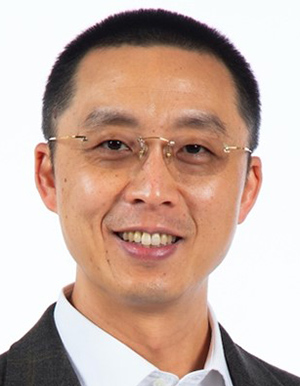 Hongwei Zhang is a Professor of Electrical and Computer Engineering and the Director of the Center for Wireless, Communities and Innovation at Iowa State University. His research investigates modeling, algorithmic, and systems issues in wireless sensing and control networks (e.g., those in 5G and beyond) as well as their applications in connected and automated vehicles, XR, smart agriculture, and cyber-physical-human systems in general. He has led the development of open-innovation infrastructures for precision agriculture, connected and automated transportation, cellular networks, and IoT networks which have been used by researchers worldwide. For instance, he currently leads the $16M project ARA (www.arawireless.org) on rural broadband research. His research results and system software have served as foundational elements of the DARPA sensor network systems “A Line in the Sand” and “ExScal” which, with its 200-node wireless mesh network and 1,200-node sensor network, was the world’s largest wireless mesh network and wireless sensor network deployed at its time. He is a recipient of the National Science Foundation CAREER Award, and Best Paper Award from the IEEE International Conference on Network Softwarization (NetSoft) in 2021. He currently serves as an Editor for the IEEE Transactions on Wireless Communications, and he served as an editor for IEEE Internet of Things Journal in 2020 and 2021. He is the Co-Chair for the 2022 ACM Workshop on Wireless Network Testbeds, Experimental evaluation & CHaracterization (WiNTECH), and he was the Program Co-Chair of the 2019 IEEE Vehicular Networking Conference (VNC). He has also served on the program and/or organizing committees of conferences such as ICCPS, IPSN, INFOCOM, and ICC. More information about his work can be found from his website at http://www.ece.iastate.edu/~hongwei.
Hongwei Zhang is a Professor of Electrical and Computer Engineering and the Director of the Center for Wireless, Communities and Innovation at Iowa State University. His research investigates modeling, algorithmic, and systems issues in wireless sensing and control networks (e.g., those in 5G and beyond) as well as their applications in connected and automated vehicles, XR, smart agriculture, and cyber-physical-human systems in general. He has led the development of open-innovation infrastructures for precision agriculture, connected and automated transportation, cellular networks, and IoT networks which have been used by researchers worldwide. For instance, he currently leads the $16M project ARA (www.arawireless.org) on rural broadband research. His research results and system software have served as foundational elements of the DARPA sensor network systems “A Line in the Sand” and “ExScal” which, with its 200-node wireless mesh network and 1,200-node sensor network, was the world’s largest wireless mesh network and wireless sensor network deployed at its time. He is a recipient of the National Science Foundation CAREER Award, and Best Paper Award from the IEEE International Conference on Network Softwarization (NetSoft) in 2021. He currently serves as an Editor for the IEEE Transactions on Wireless Communications, and he served as an editor for IEEE Internet of Things Journal in 2020 and 2021. He is the Co-Chair for the 2022 ACM Workshop on Wireless Network Testbeds, Experimental evaluation & CHaracterization (WiNTECH), and he was the Program Co-Chair of the 2019 IEEE Vehicular Networking Conference (VNC). He has also served on the program and/or organizing committees of conferences such as ICCPS, IPSN, INFOCOM, and ICC. More information about his work can be found from his website at http://www.ece.iastate.edu/~hongwei.
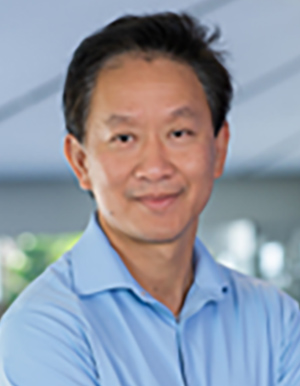 Tingfang Ji joined Qualcomm in 2003 and is currently a Vice President of engineering in Wireless R&D. From 2003 to 2014, he made instrumental technical contributions toward the development of LTE and LTE-Advanced technology and served as a vice chairman of the radio working group (RAN4) of 3GPP. Since 2014 he has been responsible for the flagship Qualcomm 5G/6G research project, driving Qualcomm's 5G NR air interface design/standardization efforts, sub6 GHz multi-vendor pre-commercial 5G NR IODT/trials, experimental macro network developments, and pre-6G research. Since 2022, Tingfang has been chairing the technology working group of NextG Alliance to promote North American 6G technologies. Before joining Qualcomm, Tingfang was a member of the technical staff at Bell Labs. As an inventor, he has more than 600 granted US patents. Tingfang received his Ph.D. in E.E. from the University of Michigan, Ann Arbor, in 2001 and a B.Sc. from Tsinghua University, Beijing.
Tingfang Ji joined Qualcomm in 2003 and is currently a Vice President of engineering in Wireless R&D. From 2003 to 2014, he made instrumental technical contributions toward the development of LTE and LTE-Advanced technology and served as a vice chairman of the radio working group (RAN4) of 3GPP. Since 2014 he has been responsible for the flagship Qualcomm 5G/6G research project, driving Qualcomm's 5G NR air interface design/standardization efforts, sub6 GHz multi-vendor pre-commercial 5G NR IODT/trials, experimental macro network developments, and pre-6G research. Since 2022, Tingfang has been chairing the technology working group of NextG Alliance to promote North American 6G technologies. Before joining Qualcomm, Tingfang was a member of the technical staff at Bell Labs. As an inventor, he has more than 600 granted US patents. Tingfang received his Ph.D. in E.E. from the University of Michigan, Ann Arbor, in 2001 and a B.Sc. from Tsinghua University, Beijing.
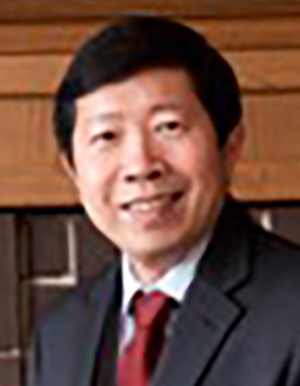 Eric Wang: Y.-P. Eric Wang is a Research Leader at Ericsson Research in Santa Clara, CA. He holds a PhD degree in electrical engineering from the University of Michigan, Ann Arbor. In 2001 and 2002, he was a member of the executive committee of the IEEE Vehicular Technology Society and served as the society’s Secretary. Dr. Wang was an Associate Editor of the IEEE Transactions on Vehicular Technology from 2003 to 2007. He has been a technical leader in Ericsson Research for research and standardization of cellular Internet of Things (IoT) technologies, including LTE-M, NB-IoT, NR URLLC, NR IIoT, and NR RedCap. Dr. Wang was a co-recipient of Ericsson’s Inventors of the Year award in 2006. He has contributed to more than 200 US patents and more than 60 IEEE articles. He is a coauthor of the book “Cellular Internet of Things: From Massive Deployments to Critical 5G Applications”.
Eric Wang: Y.-P. Eric Wang is a Research Leader at Ericsson Research in Santa Clara, CA. He holds a PhD degree in electrical engineering from the University of Michigan, Ann Arbor. In 2001 and 2002, he was a member of the executive committee of the IEEE Vehicular Technology Society and served as the society’s Secretary. Dr. Wang was an Associate Editor of the IEEE Transactions on Vehicular Technology from 2003 to 2007. He has been a technical leader in Ericsson Research for research and standardization of cellular Internet of Things (IoT) technologies, including LTE-M, NB-IoT, NR URLLC, NR IIoT, and NR RedCap. Dr. Wang was a co-recipient of Ericsson’s Inventors of the Year award in 2006. He has contributed to more than 200 US patents and more than 60 IEEE articles. He is a coauthor of the book “Cellular Internet of Things: From Massive Deployments to Critical 5G Applications”.
IP7: Evolving PON to a Converged Multi-Service Network at the Edge
Wednesday, June 12 11:30 - 13:00//LOCATION: Governor's Square 14, Concourse Level
Moderator: Dr. Zhensheng Jia, CableLabs
Panelists:
- Dr. Robert Borkowski, Nokia Bell Labs
- Dr. Derek Nesset, Huawei
- Prof. Marco Ruffini, University of Dublin
- Dr Venk Mutalik, Comcast
Abstract:
As wireline and wireless boundaries continue to blur, next-generation passive optical networks must expand capabilities to embrace a wider spectrum of services, ranging from residential FTTP, to distributed access architecture (DAA) aggregation, mobile backhaul and enterprise connectivity. Future multi-service PON will need to harmonize low-latency, energy efficiency, and footprint savings while scaling symmetrically to 100G, 200G and future 1T.
This panel will explore how extended PON can sustainably support the array of emerging needs at the network edge through new PHY and MAC flexibility. Expert panels representing operators, system vendors and academia will examine multi-service use cases as well as the potential for unified PON standards to propel ecosystem health. By understanding what underlies the next era of converged access, we can guide development of tomorrow’s PON as the high-speed intelligent edge networks.
Bios:
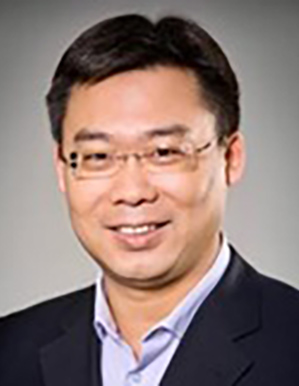 Dr. Zhensheng Jia is a Fellow and Director of Advanced Optical Technologies at CableLabs. He has built a strong track record of research innovations over the last two decades and has made numerous significant technical contributions in the field of broadband optical communication systems and networking. Dr. Jia has published over 190 peer-reviewed journals and conferences papers, 1 book and eleven book chapters, and has been invited to speak at many conferences. He also holds more than 180 US and international patents. Dr. Jia has been instrumental in spearheading coherent optics standards and interoperability for access networks. He served as Technical Lead driving point-to-point coherent specifications and associated transceiver interop testing. Recently, Dr. Jia led technology development for next generation 100Gbps access networks on CableLabs' pioneering coherent PON project. Dr. Jia is a Fellow of Optica (formerly Optical Society of America).
Dr. Zhensheng Jia is a Fellow and Director of Advanced Optical Technologies at CableLabs. He has built a strong track record of research innovations over the last two decades and has made numerous significant technical contributions in the field of broadband optical communication systems and networking. Dr. Jia has published over 190 peer-reviewed journals and conferences papers, 1 book and eleven book chapters, and has been invited to speak at many conferences. He also holds more than 180 US and international patents. Dr. Jia has been instrumental in spearheading coherent optics standards and interoperability for access networks. He served as Technical Lead driving point-to-point coherent specifications and associated transceiver interop testing. Recently, Dr. Jia led technology development for next generation 100Gbps access networks on CableLabs' pioneering coherent PON project. Dr. Jia is a Fellow of Optica (formerly Optical Society of America).
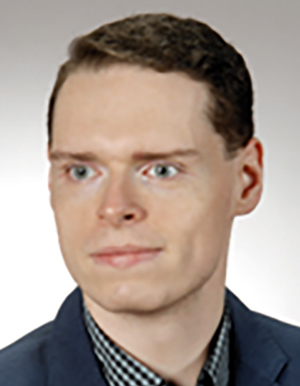 Robert Borkowski received the MScEng and PhD degrees in the field of optical communication from DTU Fotonik – Department of Photonics Engineering, Technical University of Denmark and afterwards held a postdoctoral position with the same institution. He joined Alcatel-Lucent Bell Labs in Stuttgart, Germany in 2015 and transitioned to Nokia Bell Labs, Murray Hill, NJ, USA in 2022. Dr. Borkowski is a member of the optical access team researching next-generation passive optical network (PON) technologies. He has authored and co-authored more than 90 peer-reviewed journals, conference papers, and patent applications. He has also contributed to ITU-T standardization process and European projects CHRON and PICaboo. Dr. Borkowski currently serves on the Technical Program Committee for the Optical Fiber Communication (OFC) Conference.
Robert Borkowski received the MScEng and PhD degrees in the field of optical communication from DTU Fotonik – Department of Photonics Engineering, Technical University of Denmark and afterwards held a postdoctoral position with the same institution. He joined Alcatel-Lucent Bell Labs in Stuttgart, Germany in 2015 and transitioned to Nokia Bell Labs, Murray Hill, NJ, USA in 2022. Dr. Borkowski is a member of the optical access team researching next-generation passive optical network (PON) technologies. He has authored and co-authored more than 90 peer-reviewed journals, conference papers, and patent applications. He has also contributed to ITU-T standardization process and European projects CHRON and PICaboo. Dr. Borkowski currently serves on the Technical Program Committee for the Optical Fiber Communication (OFC) Conference.
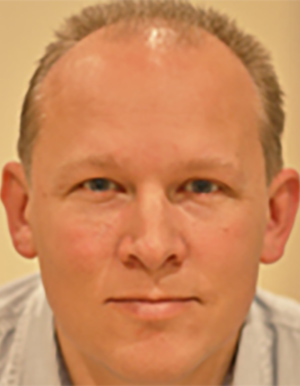 Derek Nesset received a bachelor’s degree with honors in physics from Birmingham University, UK, in 1989 and a master’s degree in telecommunications engineering from the University of London in 1995. He joined BT in 1989 and spent several years developing photonic components for fiber-optic communication systems. Following this, he worked on advanced fiber-optic system technologies up to 100 Gbps. In 2000, Prof. Nesset joined Marconi, where he was responsible for the ROADM subsystem development for ultra-long-haul DWDM. He returned to BT in 2003 to pursue research interests in enhanced PON systems for fiber access. He has spent over 15 years on next-generation PON technologies and standards and actively contributed to making progress on these topics in both FSAN and ITU-T. He chaired the NG-PON task group in FSAN from 2011 to 2016 and was an editor of ITU-T G.9807.1 (XGS-PON). Prof. Nesset now works for Huawei Technologies. His current research focus is optical transceiver components for next-generation PON systems. He was awarded an honorary professorship at Bangor University in 2014 and has contributed over 90 journal and conference publications and has 10 patents. He has participated in OFC, ECOC, OECC, and ACP conference subcommittees and chaired the Optical Access Subcommittee for OFC 2014 and the Fiber Based Networks Subcommittee for ECOC 2019.
Derek Nesset received a bachelor’s degree with honors in physics from Birmingham University, UK, in 1989 and a master’s degree in telecommunications engineering from the University of London in 1995. He joined BT in 1989 and spent several years developing photonic components for fiber-optic communication systems. Following this, he worked on advanced fiber-optic system technologies up to 100 Gbps. In 2000, Prof. Nesset joined Marconi, where he was responsible for the ROADM subsystem development for ultra-long-haul DWDM. He returned to BT in 2003 to pursue research interests in enhanced PON systems for fiber access. He has spent over 15 years on next-generation PON technologies and standards and actively contributed to making progress on these topics in both FSAN and ITU-T. He chaired the NG-PON task group in FSAN from 2011 to 2016 and was an editor of ITU-T G.9807.1 (XGS-PON). Prof. Nesset now works for Huawei Technologies. His current research focus is optical transceiver components for next-generation PON systems. He was awarded an honorary professorship at Bangor University in 2014 and has contributed over 90 journal and conference publications and has 10 patents. He has participated in OFC, ECOC, OECC, and ACP conference subcommittees and chaired the Optical Access Subcommittee for OFC 2014 and the Fiber Based Networks Subcommittee for ECOC 2019.
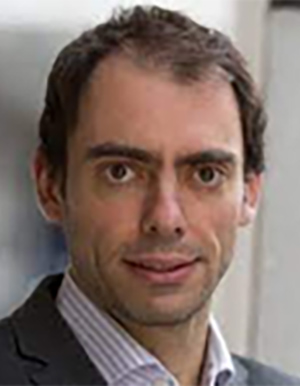 Marco Ruffini received the M.Eng. degree in telecommunications from the Polytechnic University of Marche, Italy, in 2002, and the Ph.D. degree Trinity College Dublin (TCD) in 2007, where he joined Trinity College Dublin in 2005, after working as a Research Scientist with Philips, Germany. He is Associate Professor and Fellow of Trinity College and he is Principal Investigator of both the CONNECT Telecommunications Research Centre, and the IPIC Photonics Integration Centre. He is currently involved in several Science Foundation Ireland and H2020 projects, and leads the Optical Network Architecture Group, TCD. He has authored over 140 international publications, over ten patents and contributed to standards at the broadband forum. His main research is in the area of 5G optical networks, where he carries out pioneering work on the convergence of fixed-mobile and access-metro networks, and on the virtualization of next generation networks, and has been invited to share his vision through several keynote and talks at major international conferences across the world.
Marco Ruffini received the M.Eng. degree in telecommunications from the Polytechnic University of Marche, Italy, in 2002, and the Ph.D. degree Trinity College Dublin (TCD) in 2007, where he joined Trinity College Dublin in 2005, after working as a Research Scientist with Philips, Germany. He is Associate Professor and Fellow of Trinity College and he is Principal Investigator of both the CONNECT Telecommunications Research Centre, and the IPIC Photonics Integration Centre. He is currently involved in several Science Foundation Ireland and H2020 projects, and leads the Optical Network Architecture Group, TCD. He has authored over 140 international publications, over ten patents and contributed to standards at the broadband forum. His main research is in the area of 5G optical networks, where he carries out pioneering work on the convergence of fixed-mobile and access-metro networks, and on the virtualization of next generation networks, and has been invited to share his vision through several keynote and talks at major international conferences across the world.
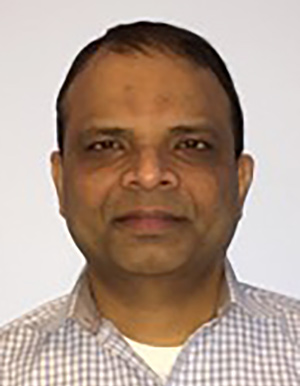 Venk Mutalik is a Comcast Fellow working on optical technology and strategy. In Comcast, Venk has pioneered continuous and pervasive monitoring of all optical assets, created the converged access architecture, introduced bi-directional Coherent optical links and investigated innovative optical fiber technologies and construction techniques.
Venk Mutalik is a Comcast Fellow working on optical technology and strategy. In Comcast, Venk has pioneered continuous and pervasive monitoring of all optical assets, created the converged access architecture, introduced bi-directional Coherent optical links and investigated innovative optical fiber technologies and construction techniques.
In his career, Venk has pioneered research into Multi Wavelength Networks, Optical non-linearities, OBI mitigation in FTTH networks and introduced several key innovations into Cable Networks over the last 2 decades. Venk holds 30 patents and has published more than 30 papers at various industry forums and peer-reviewed journals.
Previously, Venk worked as Engineering Fellow and VP of Technology and Strategy at ARRIS. Venk has worked as Chief Technologist at C-COR and as Technical Director at Philips Broadband.
Venk has a Master’s degree in Electrical Engineering from the University of Connecticut and an MBA from Syracuse University.
IP8: Emerging Technologies for Public Safety: Where, How and When?
Tuesday, June 11 11:30 - 13:00//LOCATION: Governor's Square 14. Concourse Level
Moderator: Kathy Grise, Senior Program Director, IEEE Future Directions
Organizers:
- Mehmet Ulema, Professor, Manhattan College, USA, and IEEE Public Safety Technology Initiative Co-Chair
- Doug Zuckerman, Senior Research Scientist (Retired), Telcordia Technologies, USA and IEEE Public Safety Technology Initiative Co-Chair
Panelists:
- Carolyn McGregor, AM – Professor, Ontario Tech University, Canada, and IEEE Public Safety Technology Initiative Co-Chair
- Luis Kun – Professor Emeritus, President of IEEE Society on Social Implications of Technology (SSIT), USA
- Jennifer Harder, Director, Roadmap Development Division, First Responder Network Authority
- IEEE MOVE: Grayson Randall, IEEE Volunteer
- Ashutosh Dutta, Senior Scientist, 5G Chief Strategist at Johns Hopkins University Applied Physics Lab
- Ellen Ryan - Deputy Division Chief for the Public Safety Communications Research (PSCR) Division, within the Communication Technology Laboratory (CTL), NIST
Abstract:
Many technologies are emerging with the potential for improving public safety in areas such as accident and disaster prevention, protection from hazards, security and reliability of emergency communications and information retrieval, search and rescue operations, and response to and recovery from man-made and natural disasters such as floods, forest fires, blizzards, and avalanches.
There are many emerging technologies in various fields. For example, those in the communications and networking area include new developments in Terrestrial Networks (6G, Wi-Fi, etc.), Non-Terrestrial Networks (Drones, satellites, etc.), AI/ML, IoT and Sensors, Blockchain, facial recognition, and radar devices and systems for earlier, more accurate detection and recovery operations.
These technologies, especially from multiple vendors with a multiplicity of SW/HW platforms, are most effective when they work together. Standards play a critical role in public safety operations and management to achieve this interoperability. Standards with well-defined interfaces and protocols based on industry consensus achieve this interoperability.
In addition to the above technologies, new technologies are emerging to protect public safety personnel in the field in hostile environments such as firefighters. For example lighter protective and better fire retardant gear, goggles with better visibility, etc. Since emerging public safety technologies may also be used for harmful purposes, their deployment requires careful consideration.
This panel features top experts who will share their thoughts on using emerging technologies in a range of public safety applications.
The IEEE Public Safety Technology Initiative (https://publicsafety.ieee.org) is sponsoring the panel.
Bios:
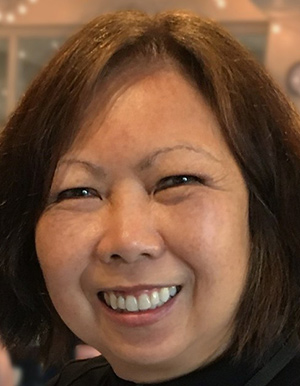 Kathy Grise, Senior Program Director – IEEE Future Directions, supports new technology initiatives, is the IEEE staff program director for the Public Safety Technology Initiative, the IEEE Technology Navigator AI, Future Directions and Industry Advisory Board Committees, Global Semiconductors, Technology Roadmaps, and manages the digital presence team for Future Directions. Previous initiatives included digital reality, big data and cloud computing. Ms. Grise serves as the Technical Program Chair of the IEEE COMPSAC 2024 Symposium – Data Sciences, Analytics, & Technologies (DSAT). Prior to joining the IEEE staff, Ms. Grise held numerous positions at IBM, and most recently was a Senior Engineering Manager for Process Design Kit Enablement in the IBM Semiconductor Research and Development Center. Ms. Grise led the overall IT infrastructure implementation, and software development in support of semiconductor device modeling verification, packaging, and delivery; device measurement and characterization data collection and management, and automation for device modeling engineers. Ms. Grise is a graduate of Washington and Jefferson College, and an IEEE Senior member.
Kathy Grise, Senior Program Director – IEEE Future Directions, supports new technology initiatives, is the IEEE staff program director for the Public Safety Technology Initiative, the IEEE Technology Navigator AI, Future Directions and Industry Advisory Board Committees, Global Semiconductors, Technology Roadmaps, and manages the digital presence team for Future Directions. Previous initiatives included digital reality, big data and cloud computing. Ms. Grise serves as the Technical Program Chair of the IEEE COMPSAC 2024 Symposium – Data Sciences, Analytics, & Technologies (DSAT). Prior to joining the IEEE staff, Ms. Grise held numerous positions at IBM, and most recently was a Senior Engineering Manager for Process Design Kit Enablement in the IBM Semiconductor Research and Development Center. Ms. Grise led the overall IT infrastructure implementation, and software development in support of semiconductor device modeling verification, packaging, and delivery; device measurement and characterization data collection and management, and automation for device modeling engineers. Ms. Grise is a graduate of Washington and Jefferson College, and an IEEE Senior member.
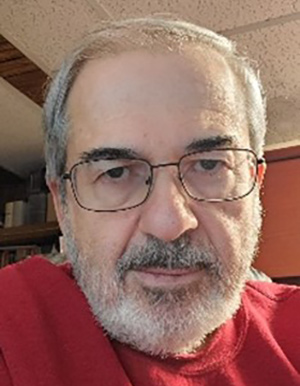 Mehmet Ulema is a professor of Computer Information Systems at Manhattan College, New York. Previously, he held management and technical positions in ATT Bell Laboratories, Bellcore, and Daewoo Telecom. He has been on the editorial board of a number of journals. He is also the co-editor of the IEEE Press-Wiley book series on Network and Service Management. Dr. Ulema is the author of a book entitled “Fundamentals of Public Safety Networks and Critical Communications” published by Wiley. Mehmet was actively involved in standardization in ITU, TIA, ATIS, and IEEE. Currently, he is a member of IEEE Standards Association Board of Governors. He is also a co-chair of the IEEE Public Safety Technology Initiative. Dr. Ulema had leading roles in numerous IEEE ComSoc conferences including IEEE ICC and IEEE GLOBECOM. He is the co-founder of IEEE BlackSeaCom conference series. Dr. Ulema has received a number of awards including IEEE SA Standards Medallion award and IEEE ComSoc Harold Sobol Award. Dr. Ulema holds MS Ph.D. degrees in Computer Science at Polytechnic University (now the New York University Tandon School of Engineering. He also received BS MS degrees at Istanbul Technical University.
Mehmet Ulema is a professor of Computer Information Systems at Manhattan College, New York. Previously, he held management and technical positions in ATT Bell Laboratories, Bellcore, and Daewoo Telecom. He has been on the editorial board of a number of journals. He is also the co-editor of the IEEE Press-Wiley book series on Network and Service Management. Dr. Ulema is the author of a book entitled “Fundamentals of Public Safety Networks and Critical Communications” published by Wiley. Mehmet was actively involved in standardization in ITU, TIA, ATIS, and IEEE. Currently, he is a member of IEEE Standards Association Board of Governors. He is also a co-chair of the IEEE Public Safety Technology Initiative. Dr. Ulema had leading roles in numerous IEEE ComSoc conferences including IEEE ICC and IEEE GLOBECOM. He is the co-founder of IEEE BlackSeaCom conference series. Dr. Ulema has received a number of awards including IEEE SA Standards Medallion award and IEEE ComSoc Harold Sobol Award. Dr. Ulema holds MS Ph.D. degrees in Computer Science at Polytechnic University (now the New York University Tandon School of Engineering. He also received BS MS degrees at Istanbul Technical University.
 Doug Zuckerman, an IEEE Life Fellow, has a long history of IEEE volunteer activities, including IEEE Communications Society President and IEEE Board Director. His BS, MS and PhD degrees are from Columbia University (USA). His earlier work at AT&T Bell Labs, Bellcore, Telcordia, and Applied Communication Sciences heavily influenced network management requirements and specifications which became de facto and de jure standards for the industry. His career included systems engineering and operations planning for waveguide, satellite and optical technologies. Recently, he has focused on public safety technology, cloud/fog/edge computing and networking, big data, digital reality and other emerging technologies. Leadership roles included: Telcordia’s Principal Representative to Optical Internetworking Forum (OIF), OIF Board Member, and OIF Operations, Administration, Maintenance and Provisioning Working Group Chair; IEEE-SA Fellow Nomination Support Committee Chair; and IEEE Public Safety Technology Initiative Co-Chair. He is also a consultant for Peraton Labs.
Doug Zuckerman, an IEEE Life Fellow, has a long history of IEEE volunteer activities, including IEEE Communications Society President and IEEE Board Director. His BS, MS and PhD degrees are from Columbia University (USA). His earlier work at AT&T Bell Labs, Bellcore, Telcordia, and Applied Communication Sciences heavily influenced network management requirements and specifications which became de facto and de jure standards for the industry. His career included systems engineering and operations planning for waveguide, satellite and optical technologies. Recently, he has focused on public safety technology, cloud/fog/edge computing and networking, big data, digital reality and other emerging technologies. Leadership roles included: Telcordia’s Principal Representative to Optical Internetworking Forum (OIF), OIF Board Member, and OIF Operations, Administration, Maintenance and Provisioning Working Group Chair; IEEE-SA Fellow Nomination Support Committee Chair; and IEEE Public Safety Technology Initiative Co-Chair. He is also a consultant for Peraton Labs.
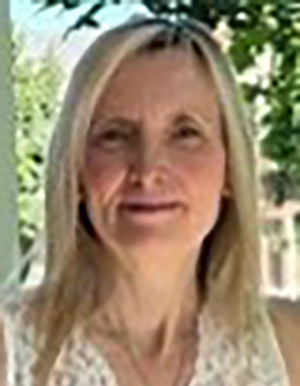 Dr. Carolyn McGregor AM, PhD, SMIEEE, MACM is the Dean of the Faculty of Business and IT at Ontario Tech University and a two-time Canada Research Chair in Health Informatics. She is the Director of the Joint Research Centre in Artificial Intelligence for Health and Wellness between Ontario Tech University and the University of Technology, Sydney. She has led pioneering research in Big Data analytics, artificial intelligence, deep learning, the Internet of Things, temporal data mining, and cloud computing. Dr. McGregor’s leading-edge research achievements are highlighted by her international award-winning Artemis and Athena AI platforms for health, wellness, resilience and adaptation in critical care, astronaut health, firefighter training and tactical officer resilience assessment and development. She is the principal investigator on two research studies currently active on the International Space Station.
Dr. Carolyn McGregor AM, PhD, SMIEEE, MACM is the Dean of the Faculty of Business and IT at Ontario Tech University and a two-time Canada Research Chair in Health Informatics. She is the Director of the Joint Research Centre in Artificial Intelligence for Health and Wellness between Ontario Tech University and the University of Technology, Sydney. She has led pioneering research in Big Data analytics, artificial intelligence, deep learning, the Internet of Things, temporal data mining, and cloud computing. Dr. McGregor’s leading-edge research achievements are highlighted by her international award-winning Artemis and Athena AI platforms for health, wellness, resilience and adaptation in critical care, astronaut health, firefighter training and tactical officer resilience assessment and development. She is the principal investigator on two research studies currently active on the International Space Station.
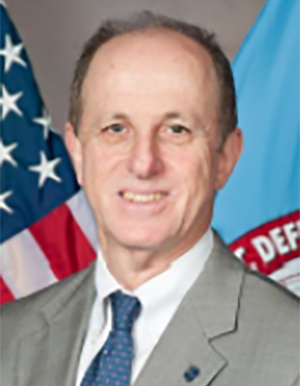 Dr. Luis Kun is the 2023 & 2024 IEEE President for the Society for Social Implications of Technology and a Distinguished Professor Emeritus of National Security (CHDS/NDU). Born in Montevideo, he graduated from the Merchant Marine Academy in Uruguay and holds a BSEE, MSEE, and PhD degree in BME, all from UCLA. He is an IEEE Life Fellow, a Fellow of the American Institute for Medical and Biological Engineering, the International Academy of Medical and Biological Engineering, and the International Union for Physical and Engineering Sciences in Medicine. He is the founding Editor in Chief of Springer's Journal of Health and Technology 2010-2020. He spent 14 years at IBM and was the Director of Medical Systems Technology at Cedars Sinai Medical Center. As Senior IT Advisor to AHCPR, he formulated the IT vision and was the lead staff for High Performance Computers and Communications program and Telehealth. In July 1997, he was an invited speaker to the White House and was largely responsible for the first Telemedicine Homecare Legislation signed by President Clinton in August 1997. As a Distinguished Fellow at the CDC and an Acting Chief IT Officer for the National Immunization Program, he formulated their IT vision on 10/2000. Dr. Kun received many awards including: AIMBE's first-ever Fellow Advocate Award in 2009; IEEE-USA Citation of Honor Award with a citation, "For exemplary contributions in the inception and implementation of a health care IT vision in the US." In 2009, he was named "Profesor Honoris Causa" by Favaloro University, (Argentina) and "Distinguished Visitor" by City of Puebla, Mexico in 2013. Since 2003 he serves as an IEEE Distinguished Visitor for the CS and as a Distinguished Lecturer (DL) for the Engineering in Medicine and Biology Society (EMBS) and SSIT where he chairs the DL Program since 2016. Since 2014, he serves as an Honorary Professor of the Electrical Engineering Department at the School of Engineering of the University (UDELAR) in Montevideo, Uruguay. He received the Medal of Merit on October, 2016 in Mexico by the National Unit of Engineering Associations and was named Visiting Professor by the National Technological University of Buenos Aires, Argentina in October 2017.
Dr. Luis Kun is the 2023 & 2024 IEEE President for the Society for Social Implications of Technology and a Distinguished Professor Emeritus of National Security (CHDS/NDU). Born in Montevideo, he graduated from the Merchant Marine Academy in Uruguay and holds a BSEE, MSEE, and PhD degree in BME, all from UCLA. He is an IEEE Life Fellow, a Fellow of the American Institute for Medical and Biological Engineering, the International Academy of Medical and Biological Engineering, and the International Union for Physical and Engineering Sciences in Medicine. He is the founding Editor in Chief of Springer's Journal of Health and Technology 2010-2020. He spent 14 years at IBM and was the Director of Medical Systems Technology at Cedars Sinai Medical Center. As Senior IT Advisor to AHCPR, he formulated the IT vision and was the lead staff for High Performance Computers and Communications program and Telehealth. In July 1997, he was an invited speaker to the White House and was largely responsible for the first Telemedicine Homecare Legislation signed by President Clinton in August 1997. As a Distinguished Fellow at the CDC and an Acting Chief IT Officer for the National Immunization Program, he formulated their IT vision on 10/2000. Dr. Kun received many awards including: AIMBE's first-ever Fellow Advocate Award in 2009; IEEE-USA Citation of Honor Award with a citation, "For exemplary contributions in the inception and implementation of a health care IT vision in the US." In 2009, he was named "Profesor Honoris Causa" by Favaloro University, (Argentina) and "Distinguished Visitor" by City of Puebla, Mexico in 2013. Since 2003 he serves as an IEEE Distinguished Visitor for the CS and as a Distinguished Lecturer (DL) for the Engineering in Medicine and Biology Society (EMBS) and SSIT where he chairs the DL Program since 2016. Since 2014, he serves as an Honorary Professor of the Electrical Engineering Department at the School of Engineering of the University (UDELAR) in Montevideo, Uruguay. He received the Medal of Merit on October, 2016 in Mexico by the National Unit of Engineering Associations and was named Visiting Professor by the National Technological University of Buenos Aires, Argentina in October 2017.
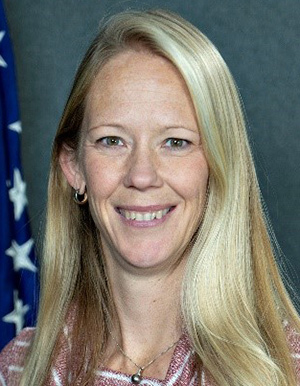 Jennifer Harder Dr. Jennifer Harder is the Director of Roadmap Domains with the First Responder Network Authority. The First Responder Network Authority is the independent agency within the U.S. Department of Commerce chartered to help create, maintain and evolve the nation’s public safety network, called FirstNet. In this role, she leads a team focused on identifying and evaluating innovative opportunities to help enhance public safety communications on FirstNet across six different focus areas (Core, Coverage, Voice Communications, Situational Awareness, Secure Information Exchange, and User Experience). In addition, she works with public safety agencies and industry to foster innovation in the public safety communications and technology marketplace. Previously, Jennifer led the FirstNet Authority Products team, and supported the State Plans Team, where she helped to coordinate the agency’s efforts to create 56 individualized FirstNet implementation plans for each U.S. state, territory and the District of Columbia. Her work in this area provided the process and information needed for each Governor to make an informed decision about joining FirstNet. Prior to joining the State Plans Team, Jennifer served as a Senior Public Safety Technology Planner for the First Responder Network Authority’s Technology Planning and Development Team.
Jennifer Harder Dr. Jennifer Harder is the Director of Roadmap Domains with the First Responder Network Authority. The First Responder Network Authority is the independent agency within the U.S. Department of Commerce chartered to help create, maintain and evolve the nation’s public safety network, called FirstNet. In this role, she leads a team focused on identifying and evaluating innovative opportunities to help enhance public safety communications on FirstNet across six different focus areas (Core, Coverage, Voice Communications, Situational Awareness, Secure Information Exchange, and User Experience). In addition, she works with public safety agencies and industry to foster innovation in the public safety communications and technology marketplace. Previously, Jennifer led the FirstNet Authority Products team, and supported the State Plans Team, where she helped to coordinate the agency’s efforts to create 56 individualized FirstNet implementation plans for each U.S. state, territory and the District of Columbia. Her work in this area provided the process and information needed for each Governor to make an informed decision about joining FirstNet. Prior to joining the State Plans Team, Jennifer served as a Senior Public Safety Technology Planner for the First Responder Network Authority’s Technology Planning and Development Team.
Before her work at the First Responder Network Authority, Jennifer spent 12 years with SAIC and SPAWAR Systems Center Pacific supporting the Interoperable Communications Technical Assistance Program (ICTAP) sponsored by the Department of Homeland Security Office of Emergency Communications (OEC). In this role, Jennifer had the opportunity to support public safety interoperable communication operations, exercises, and events across the country. Jennifer served as the Administrative Sergeant for the San Diego County Sheriff’s Department Search and Rescue K9 Unit, training and deploying three of her own search and rescue dogs while leading the training and evaluation effort for numerous other volunteer teams. She has also served as a Disaster and Emergency Preparedness Educational Coordinator for Scripps Health in San Diego, CA, and as a Police Communications Specialist for the Broomfield Police Department in Broomfield, CO.
Jennifer holds a Doctor of Philosophy (Ph.D.) and Master of Science degrees in Experimental Psychology from the University of Southern Mississippi, as well as Bachelor of Science degrees in Biological Sciences and Zoology from Colorado State University.
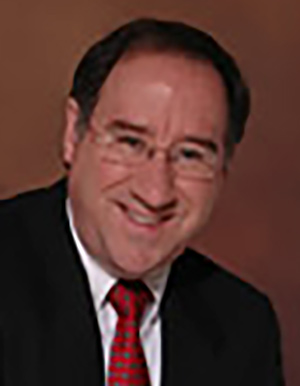 Grayson Randall is very active in IEEE including Future Directions and Public Safety initiatives. He serves as the Operations Lead for the IEEE-USA MOVE Community Outreach Program, providing power and communications at disasters (move.ieeeusa.org). He partners with the NC state emergency response team and other disaster relief organizations. He is a Life Member of the Vestal, NY Fire Department.
Grayson Randall is very active in IEEE including Future Directions and Public Safety initiatives. He serves as the Operations Lead for the IEEE-USA MOVE Community Outreach Program, providing power and communications at disasters (move.ieeeusa.org). He partners with the NC state emergency response team and other disaster relief organizations. He is a Life Member of the Vestal, NY Fire Department.
Mr. Randall is known in the world of robotics for his leadership of the Insight Racing DARPA Grand Challenge team which boasts final and semi-final positions in the highly competitive international autonomous robotic vehicle races.
Mr. Randall serves as Vice President & Chief Technology Officer at Ascot Technologies, Inc., an award-winning software company. A former IBMer with 13 patents, he has over 40 years of experience in systems design and architecture.
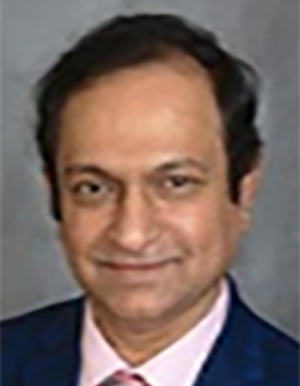 Ashutosh Dutta is currently Chief 5G Strategist and JHU/APL Sabbatical Fellow at Johns Hopkins University Applied Physics Labs (JHU/APL), USA. He also serves as Chair for Electrical and Computer Engineering for Engineering Professional Program at JHU. His career, spanning more than 30 years, includes Director of Technology Security and Lead Member of Technical Staff at AT&T, CTO of Wireless at a Cybersecurity company NIKSUN, Inc., Senior Scientist in Telcordia Research, Director of Central Research Facility at Columbia University, adjunct faculty at NJIT, and Computer Engineer with TATA Motors. Ashutosh is author of more than 120 technical papers and 31 issued patents. Ashutosh has been serving as the founding Co-Chair for the IEEE Future Networks that focuses on 5G standardization, education, publications, testbed, and roadmap activities. Ashutosh is IEEE Communications Society's Distinguished Lecturer for 2017-2020 and as an ACM Distinguished Speaker (2020-2022). Ashutosh currently serves as Member-At-Large for IEEE Communications Society. He co-founded the IEEE STEM conference (ISEC) and helped to implement EPICS (Engineering Projects in Community Service) projects in several high schools. He was recipient of 2009 IEEE MGA Leadership award. Ashutosh is recipient of IEEE-USA’s 2010 Professional Leadership Award, 2022 IEEE-USA George F. McClure Citation of Honor. He also received 2022 IEEE North American Region Exceptional Service Award. Ashutosh has served as the founding Co-Chair for the premier IEEE 5G World Forums and has organized 90 5G World Summits around the world. Ashutosh currently serves as the Chair for IEEE Industry Connection’s O-RAN activities and IPv6. Ashutosh is a Distinguished Alumnus of NIT Rourkela with BS in Electrical Engineering, MS in Computer Science from NJIT, and Ph.D. in Electrical Engineering from Columbia University under the supervision of Prof. Henning Schulzrinne. Ashutosh is a Fellow of IEEE, member of IEEE-HKN, and Distinguished member ACM.
Ashutosh Dutta is currently Chief 5G Strategist and JHU/APL Sabbatical Fellow at Johns Hopkins University Applied Physics Labs (JHU/APL), USA. He also serves as Chair for Electrical and Computer Engineering for Engineering Professional Program at JHU. His career, spanning more than 30 years, includes Director of Technology Security and Lead Member of Technical Staff at AT&T, CTO of Wireless at a Cybersecurity company NIKSUN, Inc., Senior Scientist in Telcordia Research, Director of Central Research Facility at Columbia University, adjunct faculty at NJIT, and Computer Engineer with TATA Motors. Ashutosh is author of more than 120 technical papers and 31 issued patents. Ashutosh has been serving as the founding Co-Chair for the IEEE Future Networks that focuses on 5G standardization, education, publications, testbed, and roadmap activities. Ashutosh is IEEE Communications Society's Distinguished Lecturer for 2017-2020 and as an ACM Distinguished Speaker (2020-2022). Ashutosh currently serves as Member-At-Large for IEEE Communications Society. He co-founded the IEEE STEM conference (ISEC) and helped to implement EPICS (Engineering Projects in Community Service) projects in several high schools. He was recipient of 2009 IEEE MGA Leadership award. Ashutosh is recipient of IEEE-USA’s 2010 Professional Leadership Award, 2022 IEEE-USA George F. McClure Citation of Honor. He also received 2022 IEEE North American Region Exceptional Service Award. Ashutosh has served as the founding Co-Chair for the premier IEEE 5G World Forums and has organized 90 5G World Summits around the world. Ashutosh currently serves as the Chair for IEEE Industry Connection’s O-RAN activities and IPv6. Ashutosh is a Distinguished Alumnus of NIT Rourkela with BS in Electrical Engineering, MS in Computer Science from NJIT, and Ph.D. in Electrical Engineering from Columbia University under the supervision of Prof. Henning Schulzrinne. Ashutosh is a Fellow of IEEE, member of IEEE-HKN, and Distinguished member ACM.
 Ellen Ryan is the Deputy Division Chief for the Public Safety Communications Research Division at NIST’s Communication Technology Laboratory. She is responsible for developing and managing best-practice processes for the PSCR division in operational areas such as laboratory safety, training and security and developing inter-organizational relationships and processes to support successful acquisitions, external funding opportunities (grants and prize challenges) and pre-commercialization programs.
Ellen Ryan is the Deputy Division Chief for the Public Safety Communications Research Division at NIST’s Communication Technology Laboratory. She is responsible for developing and managing best-practice processes for the PSCR division in operational areas such as laboratory safety, training and security and developing inter-organizational relationships and processes to support successful acquisitions, external funding opportunities (grants and prize challenges) and pre-commercialization programs.
She also leads the Open Innovation team that enables PSCR to use prize challenges, crowdsourcing, and other open innovation mechanisms to help solve first responder communications challenges.
Ellen’s background is in new product development and system verification, with over 20 years of industry experience in telecommunications forward-looking research and new product development. Her technical areas of expertise include electronic switching systems, digital cross connect systems and optical backhaul networks.
Ellen’s education includes a Master of Science degree in Computer Science and two Bachelors of Science degrees in Computer Science and Geography.
2021 NIST George A. Uriano Award
Given for outstanding achievements by NIST staff in building or strengthening our extramural programs, with an emphasis on fostering U.S. competitiveness and business excellence. Ellen Ryan and the PSCR Open Innovation Team was recognized for establishing a program to facilitate competitiveness and innovation in the public safety communications research field.
2021 Arthur S. Flemming Award Recipient
Recognized for her outstanding leadership in developing and delivering public-private partnerships that drove the research and development of critical, life-saving communications capabilities for first responders, and involved a new generation in mission-driven public service. E. Ryan came to NIST in 2014 to perform technical lab work supporting the Public Safety Communications Research Division (PSCR). Due to her extraordinary curiosity in public-private partnerships and their benefits, Ms. Ryan helped PSCR pioneer and maximize on a novel opportunity to accelerate research and development: NIST's first open innovation program. Her imagination and initiative resulted in an increased research capacity for advanced communications technology research and development, an increased number of researchers working in the field, and over I00 unique prototypes.
IP9: Service and Network Reliability in Access Networks
Tuesday, June 11 11:30 - 13:00//LOCATION: Plaza Ballroom A, Concourse Level
Moderator: Dr. Jason Rupe, CableLabs
Panelists:
- Shane Portfolio, Charter
- Aaron Weimer, Wiring the Future Networks
- Larry Wolcott, Comcast
Abstract:
The cable industry has turned focus on service reliability as part of the 10G initiative. Service reliability drives network operations to be reliable as well, in every sense, through every technology. The broader industry can benefit from seeing the work the cable industry is doing to assure users have reliable communications.
Bios:
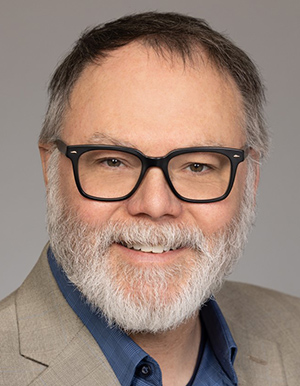 Jason Rupe is an international leader in the field of reliability and the assurance sciences, and the Distinguished Technologist for Proactive Network Maintenance (PNM), reliability, and network operations at CableLabs. Before that, he was the network and systems modeling, operations research, performance, quality, and reliability expert at Polar Star Consulting, LLC. He has demonstrated leadership abilities as the Director of Technology Modeling at Qwest, the Managing Editor of IEEE Transactions on Reliability, Chair of the IEEE Blockchain Initiative, an elected member of the IEEE Reliability Society Executive Committee, IEEE Denver Section Chair, a Board of Directors member of IIE Quality and Reliability division, Vice Chair for RAMS, General Chair for ICPHM, a contributor to various standards bodies, and a board member for several prestigious conferences and publications in the reliability, quality, and telecommunications fields. He has also proven leadership as a Director and Senior Staff Engineer leading the Operations Research, Network Modeling, Business Process Improvement, and Digital Subscriber Line (DSL) Loop Qualification teams at USWEST and Qwest Communications. Jason has developed teams, and the people in those teams. He covers a broad range of knowledge expertise for corporations including cost, performance, and reliability modeling, plus all aspects of operations research, management science, industrial engineering, statistics, process improvement, quality, assurance sciences, supply chain, capacity management, and all related business sciences. Dr. Rupe helps his customers make decisions around growing, maintaining, developing, and managing their ICT networks and technologies. Jason is also an effective communicator, speaking at conferences and meetings, frequently receiving high ratings, and receiving an award for best paper at RAMS.
Jason Rupe is an international leader in the field of reliability and the assurance sciences, and the Distinguished Technologist for Proactive Network Maintenance (PNM), reliability, and network operations at CableLabs. Before that, he was the network and systems modeling, operations research, performance, quality, and reliability expert at Polar Star Consulting, LLC. He has demonstrated leadership abilities as the Director of Technology Modeling at Qwest, the Managing Editor of IEEE Transactions on Reliability, Chair of the IEEE Blockchain Initiative, an elected member of the IEEE Reliability Society Executive Committee, IEEE Denver Section Chair, a Board of Directors member of IIE Quality and Reliability division, Vice Chair for RAMS, General Chair for ICPHM, a contributor to various standards bodies, and a board member for several prestigious conferences and publications in the reliability, quality, and telecommunications fields. He has also proven leadership as a Director and Senior Staff Engineer leading the Operations Research, Network Modeling, Business Process Improvement, and Digital Subscriber Line (DSL) Loop Qualification teams at USWEST and Qwest Communications. Jason has developed teams, and the people in those teams. He covers a broad range of knowledge expertise for corporations including cost, performance, and reliability modeling, plus all aspects of operations research, management science, industrial engineering, statistics, process improvement, quality, assurance sciences, supply chain, capacity management, and all related business sciences. Dr. Rupe helps his customers make decisions around growing, maintaining, developing, and managing their ICT networks and technologies. Jason is also an effective communicator, speaking at conferences and meetings, frequently receiving high ratings, and receiving an award for best paper at RAMS.
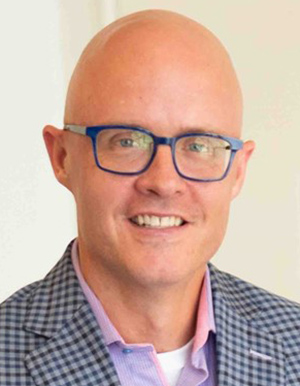 Shane Portfolio joined Charter in 2022 as Senior Vice President, Network Engineering & Technology. He and his team are responsible for creating and implementing the company’s future network and engineering infrastructure with a focus on DOCSIS/PON access technologies, optical, core routing, data center/cloud and security. Shane also led the technical deployment of two company initiatives: high split and network convergence. Prior to Charter, Shane rose through the ranks during a 26-year tenure at Comcast. He began as a customer representative and later served as Senior Vice President, Network Services, where he oversaw the health and reliability of Comcast’s network, as well as change management, deployment, and capacity planning. Shane has completed his PhD in organizational leadership with North Central University and holds master’s degrees in telecommunications from the University of Denver and organizational leadership from Regis University. He also received a bachelor’s in computer information systems and management from Metropolitan State University of Denver. Shane served in the United States Army for nearly 15 years, first as a platoon sergeant and then as a leadership instructor at the Officer Candidate School, where he trained officers to prepare for leading soldiers into combat..
Shane Portfolio joined Charter in 2022 as Senior Vice President, Network Engineering & Technology. He and his team are responsible for creating and implementing the company’s future network and engineering infrastructure with a focus on DOCSIS/PON access technologies, optical, core routing, data center/cloud and security. Shane also led the technical deployment of two company initiatives: high split and network convergence. Prior to Charter, Shane rose through the ranks during a 26-year tenure at Comcast. He began as a customer representative and later served as Senior Vice President, Network Services, where he oversaw the health and reliability of Comcast’s network, as well as change management, deployment, and capacity planning. Shane has completed his PhD in organizational leadership with North Central University and holds master’s degrees in telecommunications from the University of Denver and organizational leadership from Regis University. He also received a bachelor’s in computer information systems and management from Metropolitan State University of Denver. Shane served in the United States Army for nearly 15 years, first as a platoon sergeant and then as a leadership instructor at the Officer Candidate School, where he trained officers to prepare for leading soldiers into combat..
 Aaron Weimer "Wiring the Future Networks: In Aaron’s professional experience he has blazed a trail of over 25 years across Network Engineering and Operations as a high-impact leader and change agent. He’s evolved his career path through uncompromising focus ascending through various leadership roles in Engineering and Operations at Comcast, a global media and technology conglomerate. He currently serves as Chief Technology Officer and Co-Founder of Wiring the Future Networks.
Aaron Weimer "Wiring the Future Networks: In Aaron’s professional experience he has blazed a trail of over 25 years across Network Engineering and Operations as a high-impact leader and change agent. He’s evolved his career path through uncompromising focus ascending through various leadership roles in Engineering and Operations at Comcast, a global media and technology conglomerate. He currently serves as Chief Technology Officer and Co-Founder of Wiring the Future Networks.
As the CTO at Wiring the Future Networks, Aaron's primary responsibility is to develop solutions to bridge the digital divide in rural areas. He and his team work closely with operators to provide them with the infrastructure and support needed to deploy broadband networks. Aaron's approach involves leveraging advanced and cost-effective technologies to maximize reach and efficiency. By tailoring solutions to the specific needs of each community, he aims to bring reliable and high-speed internet access to unserved and underserved areas. Ultimately, Aaron and his team strive to ensure that everyone has equal access to the benefits of the digital age.
Aaron's professional development and educational background in network engineering and technology has positioned him as a recognized expert in his field. With specialized training in Executive Leadership from Harvard Business School and Dale Carnegie, he’s positioned at the forefront of his professional domain. His commitment to ongoing education in Network Engineering and Technology further solidifies his expertise and places him among the elite in his field. Aaron’s commitment to service standards, infrastructure innovation, and leadership development within the media sector drives him to serve on various board in leadership positions including Chair SCTE Member and Support Committee and Co-Chair SCTE/Cable Labs Standards subcommittee on Network Reliability."
 Larry Wolcott is an Engineering Fellow at Comcast, Next Generation Access Networks in Denver, Colorado. Larry is a founding member of CableLabs’ Proactive Network Maintenance Working Group. He serves as chairman of SCTE’s Network Operations Subcommittee Working Group 7 (PNM); Comcast ambassador to SCTE; and past president of the Rocky Mountain Chapter. Larry was named SCTE Member of the Year in 2018. He has numerous patents and publications directly related to PNM and cable operations technology.
Larry Wolcott is an Engineering Fellow at Comcast, Next Generation Access Networks in Denver, Colorado. Larry is a founding member of CableLabs’ Proactive Network Maintenance Working Group. He serves as chairman of SCTE’s Network Operations Subcommittee Working Group 7 (PNM); Comcast ambassador to SCTE; and past president of the Rocky Mountain Chapter. Larry was named SCTE Member of the Year in 2018. He has numerous patents and publications directly related to PNM and cable operations technology.
IP10: Towards an Open 6G for the inclusion of all – Understanding the role of open 6G research infrastructures and toolkits
Wednesday, June 12 11:30 - 13:00//LOCATION: Plaza Ballroom A, Concourse Level
Moderator: Prof. Dr. Thomas Magedanz, FOKUS, Germany
Panelists:
- Takehiro Nakamura, NTT DOCOMO, Japan
- Nirlay Kundu, Verizon, USA, Kundu
- Abhimanyu Gosain, Northeastern University, USA
- Prof. Dr. Joyce Mwangama, University of Cape Town, South Africa
- Prof. Dr. Matti Latva-aho, University of Oulu, Finland
- Prof. Dr. Gerhard P. Fettweis, TU Dresden / 6G Platform, Germany
- Nigel Jeffries, WWRF, Switzerland
Abstract:
The expectations on 6G are ambiguous as it should extend 5G into several technical and societal dimensions. Particularly, when looking at the targeted UN SDGs, 6G is expected to become the network for all, connecting different vertical industries, as well as the unconnected around the globe. While global research is still debating on evolutionary vs. revolutionary architectural approaches, many operators have made clear, that 6G has to be backward compatible to allow a smooth network transition and to avoid massive investments into a new infrastructure without clearly identifiable killer applications.
Understanding the current lessons learned from global 5G rollout challenges, as well as the increasing notion of private networks, opening and disaggregation of radio and core network architectures, and emerging open source implementations of 5G technologies driving innovations one could assume, that 6G might be strongly affected by this.
In this international panel stretching four continents bringing together both relevant industry and academia speakers, we want to discuss the role, plannings and state of play for building up open 6G research infrastructures and toolkits around the globe to allow both industry and academia to get an early practical understanding on emerging 6G technologies and to actively contribute to 6G research, standardization and developments from different national perspectives. In particular, we want to discuss how university students around the globe, including those from developing and emerging countries, could be included in this “practical education”, to be able to design and build up their own national public and/or private 5G/6G networks in the future.
We also want to discuss best practices and current road blocks and show stoppers identified from the international panelists.
This panel is supported by the 6G Platform Germany (https://www.6g-platform.com/) and the German Open6GHub flagship project (https://www.open6ghub.de/en/).
Bios:
 Thomas Magedanz (PhD) has been professor at the Technische Universität Berlin, Germany, leading the chair for next generation networks (www.av.tu-berlin.de) since 2004. In addition, since 2003 he has been Director of the Business Unit Software-based Networks (NGNI) at the Fraunhofer Institute for Open Communication Systems FOKUS (www.fokus.fraunhofer.de/go/ngni) in Berlin. For 35 years Prof. Magedanz has been a globally recognized ICT expert, working in the convergence field of telecommunications, Internet and information technologies understanding both the technology domains and the international market demands. His interest is in software-based networks for different vertical industries, with a strong focus on building public and non-public campus networks.
Thomas Magedanz (PhD) has been professor at the Technische Universität Berlin, Germany, leading the chair for next generation networks (www.av.tu-berlin.de) since 2004. In addition, since 2003 he has been Director of the Business Unit Software-based Networks (NGNI) at the Fraunhofer Institute for Open Communication Systems FOKUS (www.fokus.fraunhofer.de/go/ngni) in Berlin. For 35 years Prof. Magedanz has been a globally recognized ICT expert, working in the convergence field of telecommunications, Internet and information technologies understanding both the technology domains and the international market demands. His interest is in software-based networks for different vertical industries, with a strong focus on building public and non-public campus networks.
He became famous over the last two decades for the development of open software toolkits for building vendor independent open testbeds for next generation mobile networks, such as OpenIMSCore, OpenEPC, OpenMTC, OpenBaton, Open5GCore. His current interest is in the evolution from 5G to 6G and the development of the Organic 6G Core. For more details of his current work look here: www.6G-ready.org and www.open6Gnet.org"
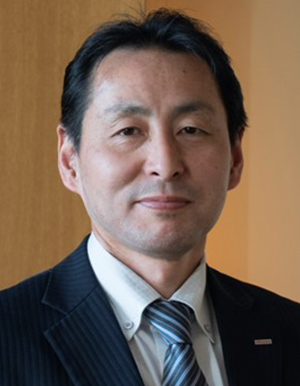 Takehiro Nakamura joined NTT Laboratories in 1990. He is now Chief Standardization Officer in NTT DOCOMO, Inc. Mr. Nakamura has been engaged in R&D and the standardization activities for advanced radio and network technologies of W-CDMA, HSPA, LTE/LTE-Advanced, 5G and 6G, and engaged in strengthening inter-industry collaboration.
Takehiro Nakamura joined NTT Laboratories in 1990. He is now Chief Standardization Officer in NTT DOCOMO, Inc. Mr. Nakamura has been engaged in R&D and the standardization activities for advanced radio and network technologies of W-CDMA, HSPA, LTE/LTE-Advanced, 5G and 6G, and engaged in strengthening inter-industry collaboration.
He has been contributing to standardization activities in ARIB, ITU and 3GPP since 1997, including as vice chair and chair of 3GPP TSG-RAN from 2005 to 2013. Currently, he plays important roles to promote and accelerate 5G and 6G in Japan and globally as the Acting Chairman of Strategy & Planning Committee and the leader of Millimeter wave Promotion Ad Hoc of 5G Mobile Communications Promotion Forum(5GMF), the leader of Cellular System Task Group of ITS Info-communications Forum, the leader of White Paper Subcommittee in Beyond 5G Promotion Consortium in Japan and the Board member of 5G-ACIA."
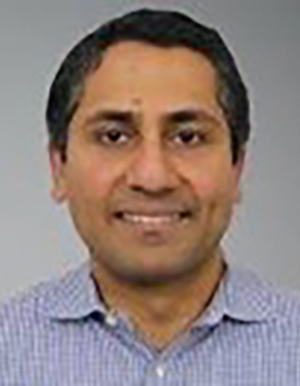 Abhimanyu (Manu) Gosain is a Senior Director for Institute of Wireless Internet of Things at Northeastern University, co-Chair for the FCC 6G Technology Advisory Council and Senior Advisor for NTIA ITS and DoD OUSD R&E FutureG. He is in charge of setting strategic goals and the research agenda for a $100M public-private partnership for the NSF Platforms for Advanced Wireless Research (PAWR) program and $25M DARPA Colosseum program. He serves as a Board Member for the OpenAirInterface Software Alliance, Founding member for Magma Core Foundation, Academic research council representative for O-RAN Alliance, Technology Roadmap group member for NextG Alliance and co-chair on organizing committee and program committees for 6GSymposium, EuCNC,IEEE InfoCom and ACM WinTech. His numerous professional publications and experience exemplify use-inspired basic research in the field of networking technologies such as 5G,6G, AI/ML, edge computing and Internet of Things. He is an IEEE Senior Member. He received his M.S. degree from Tufts University and M.B.A. from Boston University with High Honors
Abhimanyu (Manu) Gosain is a Senior Director for Institute of Wireless Internet of Things at Northeastern University, co-Chair for the FCC 6G Technology Advisory Council and Senior Advisor for NTIA ITS and DoD OUSD R&E FutureG. He is in charge of setting strategic goals and the research agenda for a $100M public-private partnership for the NSF Platforms for Advanced Wireless Research (PAWR) program and $25M DARPA Colosseum program. He serves as a Board Member for the OpenAirInterface Software Alliance, Founding member for Magma Core Foundation, Academic research council representative for O-RAN Alliance, Technology Roadmap group member for NextG Alliance and co-chair on organizing committee and program committees for 6GSymposium, EuCNC,IEEE InfoCom and ACM WinTech. His numerous professional publications and experience exemplify use-inspired basic research in the field of networking technologies such as 5G,6G, AI/ML, edge computing and Internet of Things. He is an IEEE Senior Member. He received his M.S. degree from Tufts University and M.B.A. from Boston University with High Honors
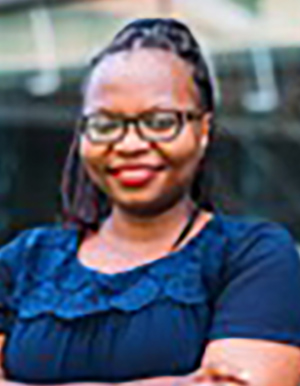 Joyce Mwangama received her Ph.D., M.Sc., and B.Sc(Eng) in Electrical and Computer Engineering from the University of Cape Town (South Africa) in 2017, 2011 and 2008, respectively. She is an Associate Professor and currently heads the Telkom Centre for Broadband Networks and Applications research in the Department of Electrical Engineering at the University of Cape Town. Joyce's research contributions are evidenced by her involvement in key projects like TRESCIMO, Thuthuka, and TERWE, where she explored smart city platforms, 5G-enabled testbeds, and digital health solutions. She's authored numerous publications, both in journals and at international conferences. Beyond academia, She actively contributes to policy-making in 5G Research and Development as the R&D Chair of the Independent Communications Authority of South Africa 5G Forum Working Group. Her role as the IEEE Communication Society Women Committee (WICE) Student and Young Professionals Liaison is to foster inclusivity and diversity in STEM fields.
Joyce Mwangama received her Ph.D., M.Sc., and B.Sc(Eng) in Electrical and Computer Engineering from the University of Cape Town (South Africa) in 2017, 2011 and 2008, respectively. She is an Associate Professor and currently heads the Telkom Centre for Broadband Networks and Applications research in the Department of Electrical Engineering at the University of Cape Town. Joyce's research contributions are evidenced by her involvement in key projects like TRESCIMO, Thuthuka, and TERWE, where she explored smart city platforms, 5G-enabled testbeds, and digital health solutions. She's authored numerous publications, both in journals and at international conferences. Beyond academia, She actively contributes to policy-making in 5G Research and Development as the R&D Chair of the Independent Communications Authority of South Africa 5G Forum Working Group. Her role as the IEEE Communication Society Women Committee (WICE) Student and Young Professionals Liaison is to foster inclusivity and diversity in STEM fields.
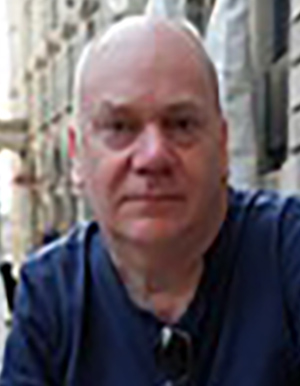 Nigel Jeffries is the Chairman of the Wireless World Research Forum, a global partnership between industry and academia to develop a research agenda for mobile communications. Previously he was Standards Development Manager at Huawei Technologies, Head of Academic Relationships for Vodafone Group Research & Development and a Principal Mathematician at Racal Research Ltd. He has led a number of research projects including the European-funded IST project SHAMAN, which studied the security of future mobile systems, and ran the Secure Applications Steering Group for Mobile VCE. Other collaborative research projects on various aspects of security for mobile communications include 3GS3 in the UK-funded LINK programme, and ASPeCT and USECA in the European ACTS programme. His research interests include cryptography, security of systems and applications of mathematics to telecommunications. He was a member of the UK government’s 5G advisory committee. He received a PhD in functional analysis from Goldsmith's College, London, and an MA in mathematics from the Queen's College, Oxford. He is a Senior Member of the IEEE, a Fellow of the Institute of Mathematics and its Applications and a Chartered Mathematician.
Nigel Jeffries is the Chairman of the Wireless World Research Forum, a global partnership between industry and academia to develop a research agenda for mobile communications. Previously he was Standards Development Manager at Huawei Technologies, Head of Academic Relationships for Vodafone Group Research & Development and a Principal Mathematician at Racal Research Ltd. He has led a number of research projects including the European-funded IST project SHAMAN, which studied the security of future mobile systems, and ran the Secure Applications Steering Group for Mobile VCE. Other collaborative research projects on various aspects of security for mobile communications include 3GS3 in the UK-funded LINK programme, and ASPeCT and USECA in the European ACTS programme. His research interests include cryptography, security of systems and applications of mathematics to telecommunications. He was a member of the UK government’s 5G advisory committee. He received a PhD in functional analysis from Goldsmith's College, London, and an MA in mathematics from the Queen's College, Oxford. He is a Senior Member of the IEEE, a Fellow of the Institute of Mathematics and its Applications and a Chartered Mathematician.
IP11: Key challenges for high-performance 6G communications in smart environments
Wednesday, June 12 16:30 - 18:00//LOCATION: Governor's Square 14, Concourse Level
Moderator: Giacomo Bacci, Assistant Professor, University of Pisa & CNIT, Italy
Panelists:
- George C. Alexandropoulos, Associate Professor, National and Kapodistrian University of Athens (NKUA), Greece
- Malte Schellmann, Huawei Munich Research Center, Germany
- Liesbet Van der Perre, Full Professor, KU Leuven, Belgium
- Taro Eichler, Technology Manager, Rohde & Schwarz, Germany
Abstract:
The sixth generation (6G) of mobile communications, planned around 2030, is expected to support novel applications with requirements that cannot be met with today’s technologies. Just to mention a few, 6G includes massive-scale communications, Internet of senses, holographic communications, massive digital twinning, full autonomous driving and flying networks, targeting challenging use cases that encompass smart cities, home, and factories. To meet such goals, future wireless networks are expected to deliver terabit-per-second data throughput capacity with ultra-low latency, extremely high reliability, and increased sensing capabilities and accuracy. This implies a paradigmatic shift at all levels, ranging from hardware design, to physical-layer and MAC design, to networking protocols, to take a leap in terms of energy efficiency, service availability and cost of deployment.
This panel aims at providing an interactive showcase for industry and academia to timely exchange visions, key technical challenges and research directions, with special emphasis on the activities undertaken by the European Commission under the framework of 6G Smart Networks and Services Joint Undertaking (SNS JU). In particular, the panel would like to discuss the methodologies and the technologies, spanning from innovative hardware solutions to modeling of meta-surfaces and electromagnetic leakage for reliable THz communications, to meet the sustainable development of 6G that targets scalability, energy efficiency, and reconfigurability.
Bios:
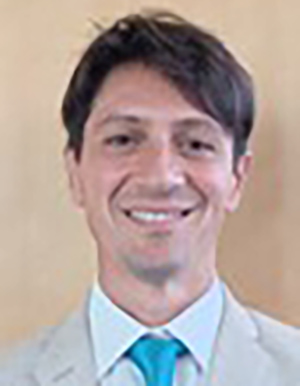 Giacomo Bacci is a tenure-track assistant professor at the University of Pisa, Italy. After receiving the Ph.D. degree in information engineering from the University of Pisa, in 2008, he was a post-doctoral research fellow with the same university until 2014. From 2008 to 2012, he was also a software engineer with Wiser Srl, Livorno, Italy, and, from 2012 to 2014, he was also enrolled as a visiting post-doctoral research associate with Princeton University, USA. From 2015 to 2021, he was a product manager for interactive satellite broadband communications at MBI Srl, Pisa, Italy. Since 2022, he joined the University of Pisa as a tenure-track assistant professor, and working with NASA GSFC as a collaborator. Since 2023, he is a Senior Member of the International Union of Radio Science (URSI).
Giacomo Bacci is a tenure-track assistant professor at the University of Pisa, Italy. After receiving the Ph.D. degree in information engineering from the University of Pisa, in 2008, he was a post-doctoral research fellow with the same university until 2014. From 2008 to 2012, he was also a software engineer with Wiser Srl, Livorno, Italy, and, from 2012 to 2014, he was also enrolled as a visiting post-doctoral research associate with Princeton University, USA. From 2015 to 2021, he was a product manager for interactive satellite broadband communications at MBI Srl, Pisa, Italy. Since 2022, he joined the University of Pisa as a tenure-track assistant professor, and working with NASA GSFC as a collaborator. Since 2023, he is a Senior Member of the International Union of Radio Science (URSI).
Dr. Bacci is the recipient of the FP7 Marie Curie International Outgoing Fellowships for career development (IOF) 2011 GRAND-CRU, the Best Paper Award from the IEEE Wireless Communications and Networking Conference (WCNC) in 2013, the Best Student Paper Award from the International Waveform Diversity and Design Conference (WDD) in 2007, the Best Session Paper at the ESA Workshop on EGNOS Performance and Applications in 2005, and the 2014 URSI Young Scientist Award. He was also named as an Exemplary Reviewer 2012 for IEEE Wireless Communications Letters. He is currently serving as an Associate Editor for IEEE Communications Letters and EURASIP Journal on Advances in Signal Processing, as the Finance Chair for IEEE SPAWC 2024, and as the Publication Chair for EUSIPCO 2025. Recently, he served as the Exhibition Chair for IEEE ICC 2023.
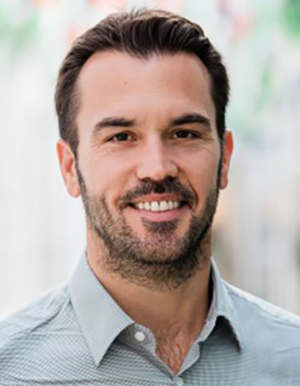 George C. Alexandropoulos received the Ph.D. degree in Computer Engineering and Informatics from the School of Engineering, University of Patras, Greece in 2010. He has held senior research positions at various Greek universities and research institutes, and he was a Senior Research Engineer and a Principal Researcher at the Mathematical and Algorithmic Sciences Lab, Paris Research Center, Huawei Technologies France, and at the Technology Innovation Institute, Abu Dhabi, United Arab Emirates, respectively. He is currently an Associate Professor with the Department of Informatics and Telecommunications, School of Sciences, National and Kapodistrian University of Athens (NKUA), Greece.
George C. Alexandropoulos received the Ph.D. degree in Computer Engineering and Informatics from the School of Engineering, University of Patras, Greece in 2010. He has held senior research positions at various Greek universities and research institutes, and he was a Senior Research Engineer and a Principal Researcher at the Mathematical and Algorithmic Sciences Lab, Paris Research Center, Huawei Technologies France, and at the Technology Innovation Institute, Abu Dhabi, United Arab Emirates, respectively. He is currently an Associate Professor with the Department of Informatics and Telecommunications, School of Sciences, National and Kapodistrian University of Athens (NKUA), Greece.
His research interests span the general areas of algorithmic design and performance analysis for wireless networks with emphasis on multi-antenna transceiver hardware architectures, full duplex radios, active and passive reconfigurable intelligent surfaces (RISs), integrated sensing and communications (ISAC), millimeter wave and THz communications, as well as distributed machine learning algorithms. Prof. Alexandropoulos is an IEEE Senior Member, and received the IEEE Communications Society Best Young Professional in Industry Award 2018, the EURASIP Best Paper Award of the Journal on Wireless Communications and Networking 2021, the IEEE Marconi Prize Paper Award in Wireless Communications 2021, the Best Paper Award from the IEEE GLOBECOM 2021, and the IEEE Communications Society Fred Ellersick Prize 2023. He is also a Distinguished Lecturer of the IEEE Communications Society. He has participated and/or technically managed more than 15 European Union (EU), international, and Greek research, innovation, and development projects. He is currently NKUA’s principal investigator for the EU H2020 RISE‑6G, SNS JU TERRAMETA, SNS JU 6G-DISAC, and ESA PRISM projects dealing with RIS-empowered smart wireless environments, THz RISs, distributed ISAC, and RIS demonstration for localization and mapping, respectively.
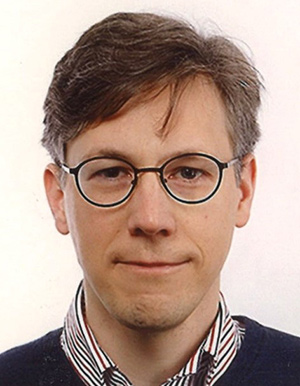 Malte Schellmann received the Dipl.-Ing. (M.S.) degree in electrical engineering and information technology from Technische Universität München, Germany, in 2003, and the Dr.-Ing. (Ph.D.) degree from Technische Universität Berlin, Germany, in 2009. From 2004 – 2009, he was with Fraunhofer Heinrich Hertz Institute, Berlin, working on practical aspects of MIMO communications. He is currently a Principal Research Engineer at Huawei Munich Research Center, Germany. His research addresses radio access technologies for Beyond 5G and 6G, with particular focus on ultra-reliable low latency communications for vehicles (V2X) and the industrial Internet of Things (IIoT). He currently investigates reconfigurable intelligent surface (RIS) enhanced deployments for IIoT and the integration of non-terrestrial networks (NTN) in future mobile radio. He has been actively involved in numerous national and European research projects, among those the 4G flagship projects WINNER, WINNER II and WINNER+ as well as the 5G flagship project METIS, and further the 5G-PPP projects METIS II, FANTASTIC-5G and 5G-CAR. Currently he is involved in the SNS JU project 6G TIMES.
Malte Schellmann received the Dipl.-Ing. (M.S.) degree in electrical engineering and information technology from Technische Universität München, Germany, in 2003, and the Dr.-Ing. (Ph.D.) degree from Technische Universität Berlin, Germany, in 2009. From 2004 – 2009, he was with Fraunhofer Heinrich Hertz Institute, Berlin, working on practical aspects of MIMO communications. He is currently a Principal Research Engineer at Huawei Munich Research Center, Germany. His research addresses radio access technologies for Beyond 5G and 6G, with particular focus on ultra-reliable low latency communications for vehicles (V2X) and the industrial Internet of Things (IIoT). He currently investigates reconfigurable intelligent surface (RIS) enhanced deployments for IIoT and the integration of non-terrestrial networks (NTN) in future mobile radio. He has been actively involved in numerous national and European research projects, among those the 4G flagship projects WINNER, WINNER II and WINNER+ as well as the 5G flagship project METIS, and further the 5G-PPP projects METIS II, FANTASTIC-5G and 5G-CAR. Currently he is involved in the SNS JU project 6G TIMES.
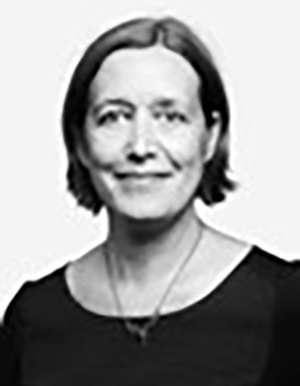 Liesbet Van der Perre is a Professor at the department of Electrical Engineering at the KU Leuven in Belgium. She received her Ph.D. degree from the KU Leuven in 1997. Dr. Van der Perre was with the nano-electronics research institute imec in Belgium from 1997 till 2015 where she took up responsibilities from system architect to director of the wireless program.
Liesbet Van der Perre is a Professor at the department of Electrical Engineering at the KU Leuven in Belgium. She received her Ph.D. degree from the KU Leuven in 1997. Dr. Van der Perre was with the nano-electronics research institute imec in Belgium from 1997 till 2015 where she took up responsibilities from system architect to director of the wireless program.
Prof. L. Van der Perre’s main research interests are in wireless communication and embedded connected systems, with a current focus on energy efficient solutions for IoT and 6G systems. She has (co-)authored over 400 scientific papers and 4 books. Liesbet Van der Perre has been serving as an advisor and board member for companies, institutes, and funding agencies. She was the scientific coordinator of the European project MAMMOET (2014-2017) progressing massive MIMO technology for efficient transmission, and currently takes up this role for the European H2020 REINDEER and Horizon Europe SNS-6GTandem projects.
 Taro Eichler is Technology Manager for wireless communications and photonics at Rohde & Schwarz in Munich with a focus on 5G/6G technologies. With 15 years of experience in wireless communication, he is currently working on 6G industry research projects covering THz communication, photonics and reconfigurable intelligent surfaces, also representing the company in the ETSI ISG THz. Prior to joining Rohde & Schwarz, Taro worked for Intel Corporation as specialist for photonic communication solutions and for NTT Basic Research Laboratories. He also worked on research projects at The University of Tokyo in the field of quantum optics with a scholarship by the Alexander-von-Humboldt foundation. He holds a diploma in physics from the Technical University of Munich with thesis at the Max-Planck-Institute for Quantum Optics and a Ph.D. in physics from the University of Bonn, Germany
Taro Eichler is Technology Manager for wireless communications and photonics at Rohde & Schwarz in Munich with a focus on 5G/6G technologies. With 15 years of experience in wireless communication, he is currently working on 6G industry research projects covering THz communication, photonics and reconfigurable intelligent surfaces, also representing the company in the ETSI ISG THz. Prior to joining Rohde & Schwarz, Taro worked for Intel Corporation as specialist for photonic communication solutions and for NTT Basic Research Laboratories. He also worked on research projects at The University of Tokyo in the field of quantum optics with a scholarship by the Alexander-von-Humboldt foundation. He holds a diploma in physics from the Technical University of Munich with thesis at the Max-Planck-Institute for Quantum Optics and a Ph.D. in physics from the University of Bonn, Germany
IP12: Optimizing Spectrum Sharing in Terrestrial and Non-terrestrial Wireless Communication Networks Using Machine Learning: New Frontiers and Applications
Wednesday, June 12 16:30 - 18:00//LOCATION: Plaza Ballroom A, Concourse Level
Moderator: Melissa Midzor, Chief, Spectrum Technology and Research Division, Communication Technology Lab, NIST
Panelists:
- Kamran Etemad - Senior Technical Advisor, Federal Communications Commission
- Jennifer Alvarez, CTO, EnduroSat
- Mark Poletti, Director of Mobile Networks and Principal Architect, CableLabs
- Ashish Dayama, Head of Verizon Field Marketing, Nokia
Abstract:
Spectrum sharing is vital in today's era of exponential data growth and increasing connectivity demands with a limited and encumbered spectrum. Current spectrum-sharing methods face significant challenges, including static allocation inefficiencies and complex interference management. Machine Learning (ML) promises to revolutionize this field, particularly in the upcoming 6G networks, by enabling more dynamic and efficient use of low- or mid-band spectra. Efficient spectrum sharing enables improved quality of service, reduced interference, and increased overall system throughput at lower cost. By applying ML techniques to spectrum sharing, we can create adaptive systems that optimize their performance in (near) real-time, significantly improving network efficiency and reliability. This approach is not only a departure from traditional static methods but also opens up new possibilities for managing spectrum resources in a way that significantly reduces interference and operational costs. The practical implications are profound, offering improved quality of service and increased overall system throughput across various industries and consumer technologies. As we look towards the future, the integration of ML in spectrum sharing is set to become a cornerstone in the evolution of communication technologies, paving the way for more advanced and reliable network infrastructures. This topic is particularly relevant to our panel's audience, comprising industry professionals, researchers, and policymakers, as it addresses a critical aspect of modern communication networks. The panel discussion explores fundamental questions such as the practical challenges in implementing ML-based spectrum sharing, including the economic implications for network operators and consumers and the regulatory frameworks necessary to support this technological advancement. The discussion will also explore the potential impacts on existing communication infrastructures and collaborative strategies for advancing this technology. This dialogue is timely and essential for guiding future developments in communication technologies.
Bios:
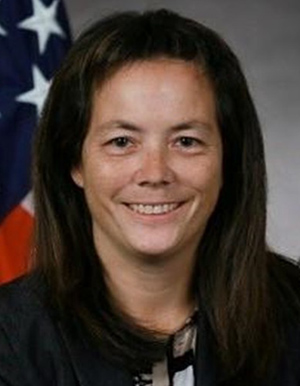 Melissa Midzor is the Program Manager for the National Advanced Spectrum and Communications Test Network (NASCTN), a chartered multi-agency organization focusing on spectrum sharing between Federal and Commercial systems. Dr. Midzor also leads the new Spectrum Technology and Research Division at NIST, developing innovative measurement methods and tools to promote novel and efficient use of spectrum. Prior to NIST, she was the director of Electronic Warfare Integrated Laboratories at NAVAIR, with 15 years of developing EW Threat environments and tools to evaluate current and future RF technologies. Melissa earned her PhD in Physics from Caltech in nanotechnology, and a BA in Physics and Sociology from the University of Colorado, Boulder.
Melissa Midzor is the Program Manager for the National Advanced Spectrum and Communications Test Network (NASCTN), a chartered multi-agency organization focusing on spectrum sharing between Federal and Commercial systems. Dr. Midzor also leads the new Spectrum Technology and Research Division at NIST, developing innovative measurement methods and tools to promote novel and efficient use of spectrum. Prior to NIST, she was the director of Electronic Warfare Integrated Laboratories at NAVAIR, with 15 years of developing EW Threat environments and tools to evaluate current and future RF technologies. Melissa earned her PhD in Physics from Caltech in nanotechnology, and a BA in Physics and Sociology from the University of Colorado, Boulder.
 Kamran Etemad is a principal wireless technology, spectrum, and standards expert. He is currently a senior technical advisor at the Federal Communications Commission (FCC) and also an Adjunct Faculty at the University of Maryland. Previously he has held various senior technical and management positions as director of technology standards at Intel Corporation, as executive technology advisor with Sprint-Nextel, and as Vice President of Advanced technology and Strategy at WFI.
Kamran Etemad is a principal wireless technology, spectrum, and standards expert. He is currently a senior technical advisor at the Federal Communications Commission (FCC) and also an Adjunct Faculty at the University of Maryland. Previously he has held various senior technical and management positions as director of technology standards at Intel Corporation, as executive technology advisor with Sprint-Nextel, and as Vice President of Advanced technology and Strategy at WFI.
Kamran received his Ph.D. degree in Electrical Engineering from the University of Maryland in 1996. He has conducted many industry workshops, panels, and seminars and published numerous technical papers and two books on 3G/4G systems. He has made numerous contributions to IEEE and 3GPP standards and holds more than 85 issued patents in 3G/4G/5G wireless systems.
Dr. Etemad’s current area of focus is on novel dynamic spectrum sharing both from regulatory and technical perspectives. His most recent research has been on advanced technologies based on LTE/NR and WiFi integration and cooperation, for opportunistic spectrum aggregation, local or side-link group and broadcast communication, and interference management."
 Jennifer Alvarez is the Chief Technology Officer at EnduroSat, focusing on technology development for transforming the complex satellite industry into a streamlined data service. She was a co-founder and the former CTO and CEO of Aurora Insight Inc., a startup that focused on advancing the efficiency and effectiveness of radio frequency spectrum use. In this role, she pioneered novel terrestrial and non-terrestrial methods for measuring and monitoring spectrum. She created new algorithms for computationally efficient, high sensitivity, wideband spectrum measurement, and she led the deployment of these algorithms on low-cost nanosatellites.
Jennifer Alvarez is the Chief Technology Officer at EnduroSat, focusing on technology development for transforming the complex satellite industry into a streamlined data service. She was a co-founder and the former CTO and CEO of Aurora Insight Inc., a startup that focused on advancing the efficiency and effectiveness of radio frequency spectrum use. In this role, she pioneered novel terrestrial and non-terrestrial methods for measuring and monitoring spectrum. She created new algorithms for computationally efficient, high sensitivity, wideband spectrum measurement, and she led the deployment of these algorithms on low-cost nanosatellites.
She has over 30 years of industry experience with a diverse career in designing technology, architecting systems, building teams, and developing new businesses. Ms. Alvarez’s technical background, combined with her deep understanding of the business applications of wireless networks, gives her a unique viewpoint on the current state of spectrum usage and applications, including the identification of areas that should be urgently addressed or improved upon for greater wireless innovation. She has a B.S. and M.S. in Electrical Engineering, is a registered Professional Engineer, and holds 9 patents.
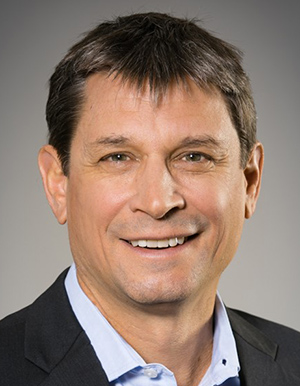 Mark Poletti is the Director of Mobile Networks and Principal Architect at CableLabs; a non-profit R&D organization that is dedicated to creating and driving technologies and innovations critical to the cable industry’s technology roadmap, including 5G and Wi-Fi 7. In this role, Mark is responsible for wireless R&D activities across fixed, mobile, and emerging wireless technologies for the secure delivery of high-speed data, video, voice, and next-generation services.
Mark Poletti is the Director of Mobile Networks and Principal Architect at CableLabs; a non-profit R&D organization that is dedicated to creating and driving technologies and innovations critical to the cable industry’s technology roadmap, including 5G and Wi-Fi 7. In this role, Mark is responsible for wireless R&D activities across fixed, mobile, and emerging wireless technologies for the secure delivery of high-speed data, video, voice, and next-generation services.
Prior to CableLabs, Mark built, managed, and operated 2G, 3G, and 4G networks for US WEST, T-Mobile, and Clearwire. He has also been addressing mobile operator design, operations, and performance issues of 2G, 3G, 4G, and satellite networks for over 30 years with such companies as ViaSat, Clearwire, ATECS/Centerline, U S WEST/Qwest, and General Electric.
Mark holds an M.S. in Telecommunications from the University of Colorado, a B.S. in Physics from SUNY Buffalo and has multiple issued and pending patents.
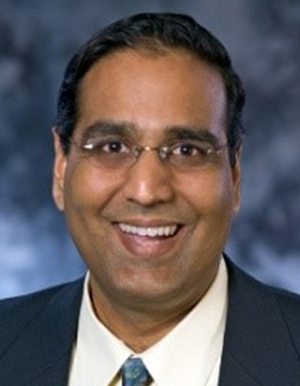 Ashish Dayama is a distinguished member of the award-winning Nokia marketing team, currently serving as the Head of Verizon Field Marketing. With a rich background as a solution architect, system integrator, and business developer, Mr. Dayama has contributed significantly to the success of Nokia.
Ashish Dayama is a distinguished member of the award-winning Nokia marketing team, currently serving as the Head of Verizon Field Marketing. With a rich background as a solution architect, system integrator, and business developer, Mr. Dayama has contributed significantly to the success of Nokia.
As the Chair of the Next G Alliance Marcom Committee, he plays a pivotal role in shaping the marketing strategies of the alliance. Additionally, he has served as Chair and Vice Chair for prominent organizations, including WInnForum, MulteFire, and CBRS Alliance, representing Nokia Marketing with distinction.
Mr. Dayama's expertise extends to various domains, and he has been actively involved in filing patents, publishing papers, and sharing his insights as a speaker at esteemed forums such as Light Reading, IoT Evolution Expo, IEEE, and BBWF.
Educationally, Ashish holds an MBA from the University of Chicago, a Master's degree in Computer Science, and a Bachelor's degree in Electrical Engineering. His diverse skill set and leadership roles underscore his commitment to innovation and excellence in the telecommunications industry
IP13: Nanonetworking: Quo Vadis?
Wednesday, June 12 16:30 - 18:00//LOCATION: Governor's Square 15, Concourse Level
Moderator: Sasitharan Balasubramaniam, Associate Professor, University of Nebraska-Lincoln, NE, USA
Panelists:
- Robert Schober, Alexander von Humboldt Professor, University of Erlangen-Nuremberg, Germany
- Qammer Abbasi, Professor, University of Glasgow, UK
- Francesca Ratti, Altos Lab, California, USA
- Josep Miquel Jornet, Professor, Northeastern University, USA
Abstract:
Nanonetworking, a field that emerged in the early 2000s, laid a vision for miniature devices engineered at the nanoscale to communicate and network with each other. The field is dominated into two broad tracks. The first track is based on using electromagnetic waves to wirelessly communicate in the terahertz spectrum, while the second track focuses on engineering biological systems to communicate using molecules. New communication and networking theories have been established over the years given the physical constraints for both tracks, and most recently novel applications have emerged that can utilize nanonetworking. These applications include novel brain-implant stimulation, drug delivery, characterizing diseases using communication theories, as well as design of novel computing systems. We are coming close to two decades since the birth of this field and there are numerous opportunities for the future of this field. This panel will discuss these opportunities as well as challenges for communication researchers. The discussion will touch on the how this field has transformed over the years and its state since it was originally envisioned. Experienced researchers from both tracks will discuss their approach entering this research and how they bridged to researchers in other fields (e.g., molecular biologists, nanomaterial engineers). The panel is composed of researchers from both Europe as well as the US, who have had experience in obtaining federal as well as industry funding and to share this experience with other ICC participants. The panel will also include an industry member from Altos Lab, which has the vision of developing cellular rejuvenation programming using principles from molecular communications. The discussion will touch on how each panelist envisions the future and this compares to the grand vision of industries. The discussion will also touch on how this nanonetworking can bring a new perspective in addressing global challenges.
Bios:
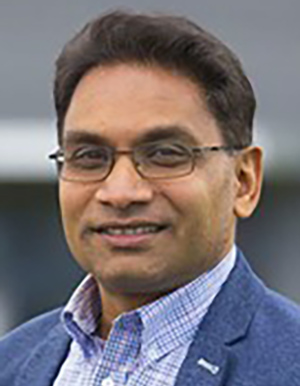 Sasitharan Balasubramaniam received his Bachelors in Engineering and PhD degree from the University of Queensland, Australia in 1998 and 2005, respectively, and Masters of Engineering Science from Queensland University of Technology in 1999. He was a past recipient of the Science Foundation Ireland (SF) Starter Investigator Research Grant. He was also a past recipient of the Academy of Finland Research Fellow at Tampere University, Finland. He was previously the Co-founder and Director of Research at the Walton Institute, South East Technological University, Ireland. While in Ireland he was the Deputy Director of the SFI VistaMilk centre and PI of the SFI CONNECT center, as well as a Funded Investigator on the SFI FutureNeuro center. He also has successfully obtained funding from the European Commission (H2020 Future and Emerging Technology program) and National Science Foundation as both PI and Co-PI. He is currently an Associate Professor at the School of Computing, University of Nebraska-Lincoln. He has re-ceived a number of awards that includes 2020 Science Foundation Ireland CONNECT Tom Brazil Research Excellence Award, 2019 Technology Ireland Outstanding Academic Achievement Award, and 2018 ACM NanoCom Outstanding Milestone Award. He is cur-rently the Editor-in-Chief of IEEE Transactions on Molecular, Bio-logical and Multi-scale Communications as well as an Associate Editor for IEEE Transactions on Mobile Computing and IEEE Trans-actions on Nanobioscience. He was a past Associate Editor for the Internet of Things journal. He was an IEEE Distinguished Lecturer for the IEEE Nanotechnology Council in 2018. His research interests lie in molecular and nano communications, Internet of Bio-Nano Things, as well as 5G/6G networks.
Sasitharan Balasubramaniam received his Bachelors in Engineering and PhD degree from the University of Queensland, Australia in 1998 and 2005, respectively, and Masters of Engineering Science from Queensland University of Technology in 1999. He was a past recipient of the Science Foundation Ireland (SF) Starter Investigator Research Grant. He was also a past recipient of the Academy of Finland Research Fellow at Tampere University, Finland. He was previously the Co-founder and Director of Research at the Walton Institute, South East Technological University, Ireland. While in Ireland he was the Deputy Director of the SFI VistaMilk centre and PI of the SFI CONNECT center, as well as a Funded Investigator on the SFI FutureNeuro center. He also has successfully obtained funding from the European Commission (H2020 Future and Emerging Technology program) and National Science Foundation as both PI and Co-PI. He is currently an Associate Professor at the School of Computing, University of Nebraska-Lincoln. He has re-ceived a number of awards that includes 2020 Science Foundation Ireland CONNECT Tom Brazil Research Excellence Award, 2019 Technology Ireland Outstanding Academic Achievement Award, and 2018 ACM NanoCom Outstanding Milestone Award. He is cur-rently the Editor-in-Chief of IEEE Transactions on Molecular, Bio-logical and Multi-scale Communications as well as an Associate Editor for IEEE Transactions on Mobile Computing and IEEE Trans-actions on Nanobioscience. He was a past Associate Editor for the Internet of Things journal. He was an IEEE Distinguished Lecturer for the IEEE Nanotechnology Council in 2018. His research interests lie in molecular and nano communications, Internet of Bio-Nano Things, as well as 5G/6G networks.
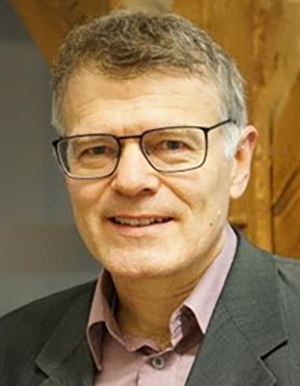 Robert Schober (S'98, M'01, SM'08, F'10) is an Alexander von Humboldt Professor and the Chair for Digital Communication at FAU. His research interests fall into the broad areas of Communi-cation Theory, Wireless and Molecular Communications, and Sta-tistical Signal Processing.
Robert Schober (S'98, M'01, SM'08, F'10) is an Alexander von Humboldt Professor and the Chair for Digital Communication at FAU. His research interests fall into the broad areas of Communi-cation Theory, Wireless and Molecular Communications, and Sta-tistical Signal Processing.
Robert received several awards for his work including the 2002 Heinz Maier Leibnitz Award of the German Science Foundation (DFG), the 2004 Innovations Award of the Vodafone Foundation for Research in Mobile Communications, a 2006 UBC Killam Re-search Prize, a 2007 Wilhelm Friedrich Bessel Research Award of the Alexander von Humboldt Foundation, the 2008 Charles McDowell Award for Excellence in Research from UBC, a 2011 Al-exander von Humboldt Professorship, a 2012 NSERC E.W.R. Stacie Fellowship, a 2017 Wireless Communications Recognition Award by the IEEE Wireless Communications Technical Committee, and the 2022 IEEE Vehicular Technology Society Stuart F. Meyer Memo-rial Award. Furthermore, he received numerous Best Paper Awards for his work including the 2022 ComSoc Stephen O. Rice Prize and the 2023 ComSoc Leonard G. Abraham Prize. Since 2017, he has been listed as a Highly Cited Researcher by the Web of Sci-ence. Robert is a Fellow of the Canadian Academy of Engineering, a Fellow of the Engineering Institute of Canada, and a Member of the German National Academy of Science and Engineering.
He served as Editor-in-Chief of the IEEE Transactions on Communi-cations, VP Publications of the IEEE Communication Society (Com-Soc), ComSoc Member at Large, and ComSoc Treasurer. Currently, he serves as Senior Editor of the Proceedings of the IEEE and as ComSoc President-Elect.
 Qammer H. Abbasi is Professor of Applied Electromagnetics & Sensing with the James Watt School (JWS) of Engineering, Theme lead for Connecting People priority at JWS and deputy theme lead for Quantum technologies in the University's flagship Advance Research Centre at University of Glasgow, UK. He has grant portfo-lio of £12M+ and contributed to more than 500+ leading interna-tional technical journal (including nature portfolio) and peer re-viewed conference papers, 11 books and received several recogni-tions for his research including UK exceptional talent endorsement by Royal Academy of Engineering. He is/was a committee member for IEEE APS Young professional, Sub-committee chair for IEEE YP Ambassador program, IEEE 1906.1.1 standard on nano communi-cation, IEEE APS/SC WG P145, IET Antenna & Propagation and healthcare network. He is Fellow of IET, Fellow of Royal Society of Arts, Fellow of European Alliance of innovation and industrial Fel-low of Royal Academy of Engineering.
Qammer H. Abbasi is Professor of Applied Electromagnetics & Sensing with the James Watt School (JWS) of Engineering, Theme lead for Connecting People priority at JWS and deputy theme lead for Quantum technologies in the University's flagship Advance Research Centre at University of Glasgow, UK. He has grant portfo-lio of £12M+ and contributed to more than 500+ leading interna-tional technical journal (including nature portfolio) and peer re-viewed conference papers, 11 books and received several recogni-tions for his research including UK exceptional talent endorsement by Royal Academy of Engineering. He is/was a committee member for IEEE APS Young professional, Sub-committee chair for IEEE YP Ambassador program, IEEE 1906.1.1 standard on nano communi-cation, IEEE APS/SC WG P145, IET Antenna & Propagation and healthcare network. He is Fellow of IET, Fellow of Royal Society of Arts, Fellow of European Alliance of innovation and industrial Fel-low of Royal Academy of Engineering.
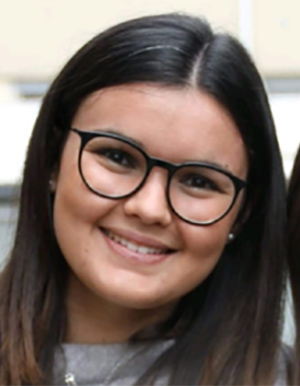 Francesca Ratti (Member, IEEE) received the M.Sc. degree (cum laude) as well as PhD in telecommunication engineering from the Politecnico di Milano, Milan, Italy. Her PhD thesis title was “Engi-neering Information Transfer in Living Systems via Molecular Communication”. She is currently a Computational Scientist at Altos Lab, California working in the El-Samad Lab. She was a visit-ing PhD student at Massachusetts Institute of Technology as well University of Nebraska-Lincoln. Her research interests include the study of molecular communications by applying and adapting con-cepts of digital communication and information theory to biologi-cal circuits.
Francesca Ratti (Member, IEEE) received the M.Sc. degree (cum laude) as well as PhD in telecommunication engineering from the Politecnico di Milano, Milan, Italy. Her PhD thesis title was “Engi-neering Information Transfer in Living Systems via Molecular Communication”. She is currently a Computational Scientist at Altos Lab, California working in the El-Samad Lab. She was a visit-ing PhD student at Massachusetts Institute of Technology as well University of Nebraska-Lincoln. Her research interests include the study of molecular communications by applying and adapting con-cepts of digital communication and information theory to biologi-cal circuits.
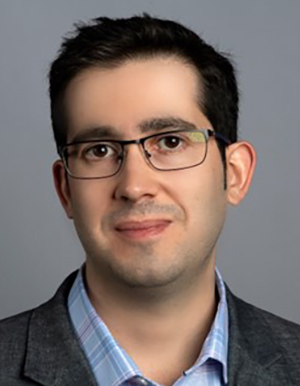 Josep Miquel Jornet is a Professor in the Department of Electrical and Computer Engineering, the director of the Ultrabroadband Nanonetworking (UN) Laboratory, and the Associate Director of the Institute for the Wireless Internet of Things at Northeastern University (NU). He received a Degree in Telecommunication Engi-neering and a Master of Science in Information and Communica-tion Technologies from the Universitat Politècnica de Catalunya, Spain, in 2008. He received a Ph.D. in Electrical and Computer En-gineering from the Georgia Institute of Technology, Atlanta, GA, in August 2013. His research interests are in terahertz communica-tion networks, wireless nano-bio-communication networks, and the Internet of Nano-Things. He has co-authored more than 220 peer-reviewed scientific publications in these areas and has been granted five US patents. His work has received over 16,000 cita-tions (h-index of 58 as of December 2023). He is serving as the lead PI on multiple grants from U.S. federal agencies, including the Na-tional Science Foundation, the Air Force Office of Scientific Re-search and the Air Force Research Laboratory, and industry. He is the recipient of multiple awards, including the 2017 IEEE ComSoc Young Professional Best Innovation Award, the 2017 ACM Nano-Com Outstanding Milestone Award, the NSF CAREER Award in 2019, the 2022 IEEE ComSoc RCC Early Achievement Award, and the 2022 IEEE Wireless Communications Technical Committee Out-standing Young Researcher Award, among others, as well as six best paper awards. He is a Fellow of the IEEE (Class of 2024) for contributions in terahertz communication and nanonetworking and an IEEE ComSoc Distinguished Lecturer (Class of 2022-2023). He is the Editor in Chief of the Elsevier Nano Communication Networks journal and Editor for IEEE Transactions on Communications and Scientific Reports.
Josep Miquel Jornet is a Professor in the Department of Electrical and Computer Engineering, the director of the Ultrabroadband Nanonetworking (UN) Laboratory, and the Associate Director of the Institute for the Wireless Internet of Things at Northeastern University (NU). He received a Degree in Telecommunication Engi-neering and a Master of Science in Information and Communica-tion Technologies from the Universitat Politècnica de Catalunya, Spain, in 2008. He received a Ph.D. in Electrical and Computer En-gineering from the Georgia Institute of Technology, Atlanta, GA, in August 2013. His research interests are in terahertz communica-tion networks, wireless nano-bio-communication networks, and the Internet of Nano-Things. He has co-authored more than 220 peer-reviewed scientific publications in these areas and has been granted five US patents. His work has received over 16,000 cita-tions (h-index of 58 as of December 2023). He is serving as the lead PI on multiple grants from U.S. federal agencies, including the Na-tional Science Foundation, the Air Force Office of Scientific Re-search and the Air Force Research Laboratory, and industry. He is the recipient of multiple awards, including the 2017 IEEE ComSoc Young Professional Best Innovation Award, the 2017 ACM Nano-Com Outstanding Milestone Award, the NSF CAREER Award in 2019, the 2022 IEEE ComSoc RCC Early Achievement Award, and the 2022 IEEE Wireless Communications Technical Committee Out-standing Young Researcher Award, among others, as well as six best paper awards. He is a Fellow of the IEEE (Class of 2024) for contributions in terahertz communication and nanonetworking and an IEEE ComSoc Distinguished Lecturer (Class of 2022-2023). He is the Editor in Chief of the Elsevier Nano Communication Networks journal and Editor for IEEE Transactions on Communications and Scientific Reports.
IP14: When ISAC meets AI
Tuesday, June 11 11:30 - 13:00//LOCATION: Plaza Ballroom D, Concourse Level
Moderator: Peiying Zhu, Huawei
Panelists:
- Tingfang Ji, Qualcomm
- Y.P. Eric Wang, Ericsson
- Juho Lee, Samsung
- Geng Wu, Intel
Abstract:
Integrated Sensing and Communication (ISAC), as well as AI and Communication have been adopted by ITU-R as two of the beyond-Communication usage scenarios in the Framework Recommendation for IMT-2030 and beyond, also known as the global 6G vision. With these new capabilities, 6G will no longer only function as a network for packets delivery, but also a platform to provide intelligence services for greater social values.
Specifically, by detecting radio waves propagation in the physical-world surroundings using digital receivers and advanced signal processing algorithms, we can achieve higher accuracy positioning of a mobile device and reconstruct the physical-world environment in real-time. This sensing data can be used to build a digital replica of the real-world.
Two new enablers make ISAC more powerful in 6G. The first is the native integration of sensing and communication, which allows every mobile device and every base-station to perform 6G sensing without additional cost for spectrum and network investment. 6G-ISAC can perform joint collaborative sensing of mobile devices and base-stations in both mono-static and bi-static fashions. Real-time reconstruction of the real-world enables intelligent communications and drastically enhances wireless transmission reliability and capacity with reduced power consumption.
The second enabler is the integration of sensing and machine learning, which allows us to utilize 6G sensing data as the training dataset. In this case, machine learning, especially large model-based AI, can be constantly tuned to the real-world to deliver customized AI services. From a machine learning point of view, 6G sensing data will be a major data source for AI training and to drive generative and interactive AI services.
In this panel, we would like to bring the audiance’s attention to the landscape of new opportiunities brought by the integration of ISAC and AI. Top leaders from major industry players are invited as panelists to share their views and potential actions towards future. Interactive discussion and even debating are expected to make the panel more inspiring.
Bios:
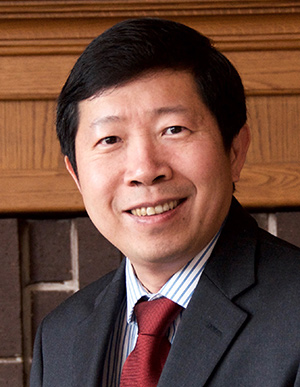 Y.-P. Eric Wang is a Research Leader at Ericsson Research in Santa Clara, CA. He holds a PhD degree in electrical engineering from the University of Michigan, Ann Arbor. In 2001 and 2002, he was a member of the executive committee of the IEEE Vehicular Technology Society and served as the society’s Secretary. Dr. Wang was an Associate Editor of the IEEE Transactions on Vehicular Technology from 2003 to 2007 and has served as a member of the Technical Committee in various IEEE conferences. He has been a technical leader in Ericsson Research for research and standardization of cellular Internet of Things (IoT) technologies, including LTE-M, NB-IoT, NR URLLC, NR IIoT, and NR RedCap. Dr. Wang was a co-recipient of Ericsson’s Inventors of the Year award in 2006. He has contributed to more than 200 US patents and more than 60 IEEE articles. He is a coauthor of the book “Cellular Internet of Things: From Massive Deployments to Critical 5G Applications”.
Y.-P. Eric Wang is a Research Leader at Ericsson Research in Santa Clara, CA. He holds a PhD degree in electrical engineering from the University of Michigan, Ann Arbor. In 2001 and 2002, he was a member of the executive committee of the IEEE Vehicular Technology Society and served as the society’s Secretary. Dr. Wang was an Associate Editor of the IEEE Transactions on Vehicular Technology from 2003 to 2007 and has served as a member of the Technical Committee in various IEEE conferences. He has been a technical leader in Ericsson Research for research and standardization of cellular Internet of Things (IoT) technologies, including LTE-M, NB-IoT, NR URLLC, NR IIoT, and NR RedCap. Dr. Wang was a co-recipient of Ericsson’s Inventors of the Year award in 2006. He has contributed to more than 200 US patents and more than 60 IEEE articles. He is a coauthor of the book “Cellular Internet of Things: From Massive Deployments to Critical 5G Applications”.
IP15: Bridging the Gap: Channel Sounding and Modeling for Joint Communications and Sensing
Wednesday, June 12 11:30 - 13:00//LOCATION: Plaza Ballroom D, Concourse Level
Moderator: Sarah LaSelva, Director of 6G Marketing, Keysight/Next G Alliance, USA
Panelists:
- Amitava Ghosh, Fellow and Head of Radio Interface Group, Nokia, USA
- Roger Nichols, 6G Program Manager, Keysight, USA
- Nada Golmie, Fellow and Chief of Wireless Networks Division, NIST, USA
- Adnan Khan, Director of Technology and Market Development, Anritsu, USA
- Paul Harris, Principal Wireless Architect, VIAVI solutions
Abstract:
With the expansion of commercial communications into new frequency ranges covering midbands to sub-THz, there is a need for new, more complete channel models for 6G. In addition to creating new models for these frequencies, new models are needed to fully explore the concept of joint communications and sensing. The Next G Alliance (NGA), an initiative to advance North American wireless technology leadership over the next decade through private-sector-led efforts, has brought together experts across the ICT industry to start a measurement campaign and gather the data needed to build these new models for both communications and sensing. Hear from some of the experts involved about why these models are needed, how the measurements were taken, and what they have learned as a result.
Bios:
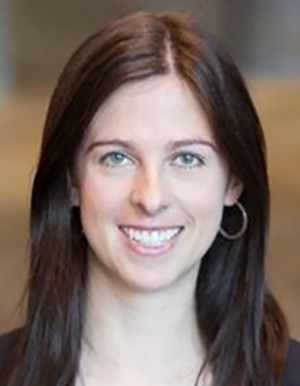 Sarah LaSelva leads the marketing efforts for Keysight in 6G. She has over a decade of experience in test and measurement concentrating on wireless communications, both studying and promoting the latest wireless technologies. Throughout her career she has spent time in marketing, test engineering, and applications engineering.
Sarah LaSelva leads the marketing efforts for Keysight in 6G. She has over a decade of experience in test and measurement concentrating on wireless communications, both studying and promoting the latest wireless technologies. Throughout her career she has spent time in marketing, test engineering, and applications engineering.
Prior to joining Keysight, Sarah worked at NI (National Instruments) as a product marketing manager for the software defined radio team where she gained a deep knowledge of SDR hardware, software, and wireless communications.
Sarah’s background is in microwave and millimeter wave technology. She has a BS in electrical engineering from Texas Tech University."
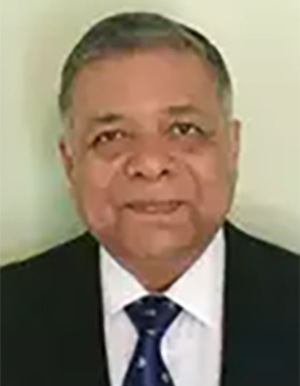 Amitabha (Amitava) Ghosh is a Nokia Fellow and works at Nokia Standards and Strategy. He joined Motorola in 1990 after receiving his Ph.D in Electrical Engineering from Southern Methodist University, Dallas. Since joining Motorola, he worked on multiple wireless technologies starting from IS-95, cdma-2000, 1xEV-DV/1XTREME, 1xEV-DO, UMTS, HSPA, 802.16e/WiMAX and 3GPP LTE. He has 60 issued patents, has written multiple book chapters and has authored numerous external and internal technical papers. He is currently working on 5G Evolution and 6G technologies. He is also the chair of the Next G Alliance (an US 6G initiative) National Roadmap Working Group. His research interests are in the area of digital communications, signal processing and wireless communications. He is the recipient of 2016 IEEE Stephen O. Rice and 2017 Neal Shephard prize, member of IEEE Access editorial board and co-author of the books titled “Essentials of LTE and LTE-A” and “5G Enabled Industrial IoT Network”.
Amitabha (Amitava) Ghosh is a Nokia Fellow and works at Nokia Standards and Strategy. He joined Motorola in 1990 after receiving his Ph.D in Electrical Engineering from Southern Methodist University, Dallas. Since joining Motorola, he worked on multiple wireless technologies starting from IS-95, cdma-2000, 1xEV-DV/1XTREME, 1xEV-DO, UMTS, HSPA, 802.16e/WiMAX and 3GPP LTE. He has 60 issued patents, has written multiple book chapters and has authored numerous external and internal technical papers. He is currently working on 5G Evolution and 6G technologies. He is also the chair of the Next G Alliance (an US 6G initiative) National Roadmap Working Group. His research interests are in the area of digital communications, signal processing and wireless communications. He is the recipient of 2016 IEEE Stephen O. Rice and 2017 Neal Shephard prize, member of IEEE Access editorial board and co-author of the books titled “Essentials of LTE and LTE-A” and “5G Enabled Industrial IoT Network”.
 Roger Nichols is an acknowledged subject matter expert in mobile wireless communications design and measurement technologies. He has 39 years of engineering and management experience at Hewlett-Packard, Agilent, and Keysight spanning roles in R&D, marketing, and manufacturing. With experience in mobile wireless technology on all five previous generations, he has been directing Keysight’s 6G program since its inception in 2019. He is a member of the FCC Technological Advisory Council and is also the strategic director of Keysight’s work in wireless standards.
Roger Nichols is an acknowledged subject matter expert in mobile wireless communications design and measurement technologies. He has 39 years of engineering and management experience at Hewlett-Packard, Agilent, and Keysight spanning roles in R&D, marketing, and manufacturing. With experience in mobile wireless technology on all five previous generations, he has been directing Keysight’s 6G program since its inception in 2019. He is a member of the FCC Technological Advisory Council and is also the strategic director of Keysight’s work in wireless standards.
Roger holds a BSEE from the University of Colorado, Boulder."
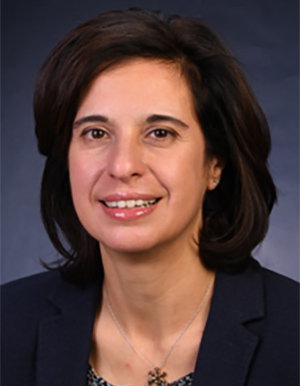 Nada Golmie received her Ph.D. in computer science from the University of Maryland at College Park. Since 1993, she has been a research engineer at the National Institute of Standards and Technology (NIST). From 2014 until 2022, she served as the chief for Wireless Networks Division at NIST. She is an IEEE Fellow, and a NIST Fellow in the Communications Technology Laboratory. Her research in media access control and protocols for wireless networks led to over 200 technical papers presented at professional conferences, journals, and contributed to international standard organizations and industry led consortia. She is the author of “Coexistence in Wireless Networks: Challenges and System-level Solutions in the Unlicensed Bands," published by Cambridge University Press (2006). She leads several projects related to the modeling and evaluation of future generation wireless systems and protocols and serves as the NextG Channel Model Alliance chair.
Nada Golmie received her Ph.D. in computer science from the University of Maryland at College Park. Since 1993, she has been a research engineer at the National Institute of Standards and Technology (NIST). From 2014 until 2022, she served as the chief for Wireless Networks Division at NIST. She is an IEEE Fellow, and a NIST Fellow in the Communications Technology Laboratory. Her research in media access control and protocols for wireless networks led to over 200 technical papers presented at professional conferences, journals, and contributed to international standard organizations and industry led consortia. She is the author of “Coexistence in Wireless Networks: Challenges and System-level Solutions in the Unlicensed Bands," published by Cambridge University Press (2006). She leads several projects related to the modeling and evaluation of future generation wireless systems and protocols and serves as the NextG Channel Model Alliance chair.
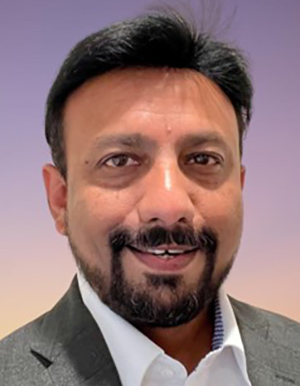 Adnan Khan has spent over twenty years of his career in the wireless industry working with operators, chipset vendors, network infrastructure vendors, consumer electronics/handset manufacturers, and test equipment vendors. He has held senior Technical and Management roles and is currently part of CTO Office in Anritsu driving the strategic technology direction for Anritsu’s family of wireless and wireline products. His broad knowledgebase spans across different wireless technologies including Cellular, Bluetooth, Wi-Fi, and NFC. He is a frequent speaker at multiple wireless conferences and industry events and has authored several articles in wireless technology journals. Adnan holds a Bachelor of Science Degree in Electrical Engineering from the University of Texas at Austin and currently resides in Texas.
Adnan Khan has spent over twenty years of his career in the wireless industry working with operators, chipset vendors, network infrastructure vendors, consumer electronics/handset manufacturers, and test equipment vendors. He has held senior Technical and Management roles and is currently part of CTO Office in Anritsu driving the strategic technology direction for Anritsu’s family of wireless and wireline products. His broad knowledgebase spans across different wireless technologies including Cellular, Bluetooth, Wi-Fi, and NFC. He is a frequent speaker at multiple wireless conferences and industry events and has authored several articles in wireless technology journals. Adnan holds a Bachelor of Science Degree in Electrical Engineering from the University of Texas at Austin and currently resides in Texas.
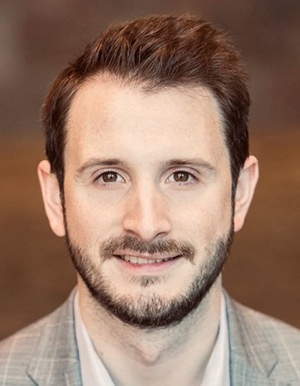 Paul Harris is a Principal Wireless Architect within the CTO Office of VIAVI Solutions providing thought leadership on new and emerging technologies for 5G, 6G and beyond, and participates in a range of bodies and fora including 3GPP, the O-RAN Alliance, the Next G Alliance, and the 6G-IA. His experience prior to joining VIAVI includes representing Vodafone within 3GPP, contributing to the development of massive MIMO channel estimation solutions at Cohere Technologies, and working with customers as a domain expert at National Instruments to establish effective research solutions using software-defined radio. He is also a Senior Member of the IEEE, Chartered Engineer, Fellow of the ITP, and an Honorary Industrial Fellow at the University of Bristol.
Paul Harris is a Principal Wireless Architect within the CTO Office of VIAVI Solutions providing thought leadership on new and emerging technologies for 5G, 6G and beyond, and participates in a range of bodies and fora including 3GPP, the O-RAN Alliance, the Next G Alliance, and the 6G-IA. His experience prior to joining VIAVI includes representing Vodafone within 3GPP, contributing to the development of massive MIMO channel estimation solutions at Cohere Technologies, and working with customers as a domain expert at National Instruments to establish effective research solutions using software-defined radio. He is also a Senior Member of the IEEE, Chartered Engineer, Fellow of the ITP, and an Honorary Industrial Fellow at the University of Bristol.
IP16: 6G Empowered Robotics: Unleashing the Potential of Next-Generation Connectivity
Wednesday, June 12 16:30 - 18:00//LOCATION: Plaza Ballroom D, Concourse Level
Moderator: Periklis Chatzimisios, Professor, International Hellenic
Panelists:
- Prof Mohammad Shikh Bahaei (King’s College London, UK)
- Dr Xueli An (Huawei, Germany)
- Dr Sharief Oteady (DePaul Univ, USA)
- Prof Maziar Nekovee (Univ Essex, UK)
Abstract:
The proposed panel will focus on the transformative impact of 6G on the field of robotics and highlight how 6G can empower robotics by providing advanced connectivity solutions that enhance the capabilities of robotic systems. With 6G, robotics can reach new heights, leveraging cutting-edge features and functionalities to overcome existing limitations and unlock unprecedented possibilities. The panel discussions are to bring forward the essence of the transformative synergy between 6G and robotics, highlighting the vast opportunities and advancements that lie ahead in this exciting and dynamic field. As an example, teleoperation systems serve as the foundation for networked robots, initially starting as remotely controlled devices. However, with the recent advancements in wireless communication networks, particularly the evolution of technologies like 6G, the scope of networked robots has expanded rapidly. They have transitioned from traditional lead/follower teleoperation relationships to a more integrated approach involving robots, humans, agents, off-board sensors, databases, and cloud technologies. This integration spans across the globe, enabling remote control of these devices.
As capabilities and advancements continue to emerge, it becomes crucial for both the robotics and 6G communication fields to articulate their respective requirements and capabilities. Highlighting these aspects is key to identifying new market opportunities and addressing any existing gaps. To bridge these gaps effectively, multidisciplinary research and standardization efforts are necessary, as standard development organizations (SDOs) typically focus on either communication or robotics and automation systems (RAS).
Invited panelists and experts from academia and industry discuss on the lessonslearned from 5G, the topics that will continue evolving towards 6G, and the new robotic-related features that will emerge in 6G, particularly those holding promise for various vertical sectors. By bringing together these experts, we hope to facilitate knowledge exchange and collaboration, further propelling advancements in the robotics domain.
Bios:
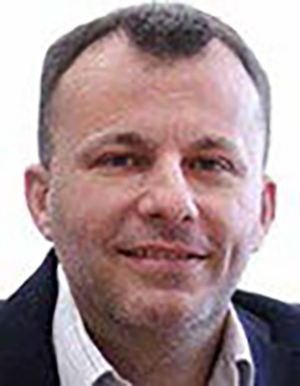 Dr. Periklis Chatzimisios serves as a Professor in the Department of Information and Electronic Engineering at the International Hellenic University (Greece). Moreover, he has been awarded the title of Researcher Professor by the University of New Mexico (USA). He is also a Visiting Fellow in the Faculty of Science & Technology, Bournemouth University (UK). He is currently serving as Vice-Chair for Working Group 1 (Use cases, KPIs and future market and business scenarios), Chair of the Working Item 213 (Multimodal sensing, computing, communication and control for 6G remote operation) and a Board Member for the one6G Association.
Dr. Periklis Chatzimisios serves as a Professor in the Department of Information and Electronic Engineering at the International Hellenic University (Greece). Moreover, he has been awarded the title of Researcher Professor by the University of New Mexico (USA). He is also a Visiting Fellow in the Faculty of Science & Technology, Bournemouth University (UK). He is currently serving as Vice-Chair for Working Group 1 (Use cases, KPIs and future market and business scenarios), Chair of the Working Item 213 (Multimodal sensing, computing, communication and control for 6G remote operation) and a Board Member for the one6G Association.
Dr. Chatzimisios is/has been involved in several standardization and IEEE activities mainly under the IEEE Communication Society (ComSoc) serving as the co-Chair of the Communications and Networking Committee for the IEEE Public Safety Technology Initiative, Chair of the ComSoc Young Professionals (YP) Standing Committee and as a Member of the ComSoc Education Services Board, the ComSoc Standards Program Development Board, the ComSoc Industry Outreach Board and the ComSoc Online Content Board. He is the Chair of the Communications Chapter and Professional Activities for the IEEE Greece Section. Prof. Chatzimisios has participated as a researcher and scientific officer in many European and national research and development projects funded by European Commission, Institute of International Education (IIE) and national agencies. He holds various management positions as Coordinator/WG Chair/Vice Chair and Training/Standardization Chair in several research projects. He is in the Top 2% Most Influential Scientists in the Stanford University list (years 2022-2020) in the area of Networking & Telecommunications.
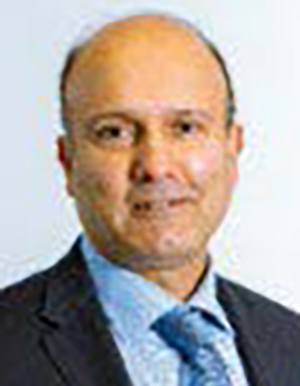 Prof. Mohammad Reza Shikh-Bahaei has been engaged in research in the area of wireless communications for 27 years both in academic and industrial organizations. He has worked for start-up companies on statistical signal processing for interference cancellation, network planning and optimisation of wireless networks. In 2000 he joined National Semiconductor Corp. (NSC), CA, USA, (now part of Texas Instruments) and worked within a team on the design of 3rd generation handsets based on UMTS standards, for which he has been awarded three US patents as inventor and co-inventor, respectively. He returned to the UK in March 2002 as a Lecturer at King’s College London, and is now a full Professor of Telecommunications in the Department of Engineering, King's College London. He has since worked and published numerous articles on a number of research topics including resource allocation for optimization of cellular (inc. HSPA, 4G, 5G) and short range sensor/ad-hoc networks (inc. Wifi, Bluetooth, Zigbee), Cognitive and full duplex radios/networking, cross-layer optimisation of wireless sensor networks and the Internet of Things (IoT), Healthcare applications of signal processing and wireless communications, short range device-to-device (D2D) communication and edge caching, MIMO and machine-type multimedia communication, communication protocols for Vehicle to Everything and drone Communications. His research is now on new use cases and technologies for 6G networks. He is also WG1 Chair of One6G Association.
Prof. Mohammad Reza Shikh-Bahaei has been engaged in research in the area of wireless communications for 27 years both in academic and industrial organizations. He has worked for start-up companies on statistical signal processing for interference cancellation, network planning and optimisation of wireless networks. In 2000 he joined National Semiconductor Corp. (NSC), CA, USA, (now part of Texas Instruments) and worked within a team on the design of 3rd generation handsets based on UMTS standards, for which he has been awarded three US patents as inventor and co-inventor, respectively. He returned to the UK in March 2002 as a Lecturer at King’s College London, and is now a full Professor of Telecommunications in the Department of Engineering, King's College London. He has since worked and published numerous articles on a number of research topics including resource allocation for optimization of cellular (inc. HSPA, 4G, 5G) and short range sensor/ad-hoc networks (inc. Wifi, Bluetooth, Zigbee), Cognitive and full duplex radios/networking, cross-layer optimisation of wireless sensor networks and the Internet of Things (IoT), Healthcare applications of signal processing and wireless communications, short range device-to-device (D2D) communication and edge caching, MIMO and machine-type multimedia communication, communication protocols for Vehicle to Everything and drone Communications. His research is now on new use cases and technologies for 6G networks. He is also WG1 Chair of One6G Association.
 Dr. Xueli An received the master’s and Ph.D. degrees in electrical engineering from the Delft University of Technology (TU Delft), The Netherlands. She is currently a Principal Researcher and an Industry Development Specialist with the Munich Research Center, Huawei Technologies, Germany. Within Huawei, she has the responsibility for mobile communication enabled vertical industry-related research, standardization, and industry development-related activities. She has a deep engagement with the 5G-enabled Industry 4.0 ecosystem. She has been serving for 5G Alliance for Connected Industries and Automation (5G-ACIA) Working Group “Use cases and Requirements” as the Co-Chair, since 2018. She is the WG3 Chair for the One6G Association (one6G.org). She has over 50 international journal/conference publications and over 20 patent applications in the field of wireless communication and networking.
Dr. Xueli An received the master’s and Ph.D. degrees in electrical engineering from the Delft University of Technology (TU Delft), The Netherlands. She is currently a Principal Researcher and an Industry Development Specialist with the Munich Research Center, Huawei Technologies, Germany. Within Huawei, she has the responsibility for mobile communication enabled vertical industry-related research, standardization, and industry development-related activities. She has a deep engagement with the 5G-enabled Industry 4.0 ecosystem. She has been serving for 5G Alliance for Connected Industries and Automation (5G-ACIA) Working Group “Use cases and Requirements” as the Co-Chair, since 2018. She is the WG3 Chair for the One6G Association (one6G.org). She has over 50 international journal/conference publications and over 20 patent applications in the field of wireless communication and networking.
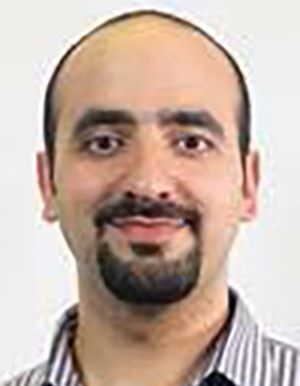 Dr. Sharief Oteafy received his PhD in 2013 from Queen’s University, ON, Canada, focusing on adaptive resource management in Next Generation Sensing Networks; introducing the notion of Organic sensor networks that adapt to their environment, and scale with resource augmentation. He is actively engaged in the IEEE Communications Society (ComSoc), and is a Professional member in both IEEE and ACM, having joined them since 2008. Dr. Oteafy is the IEEE ComSoc Ad Hoc and Sensor Networks (AHSN) Standards Liaison, and on the ComSoc Tactile Internet standards Working Group. delivered multiple tutorials on the IoT and Next Generation Networks. Dr. Oteafy co-chaired a number of IEEE workshops, in conjunction with IEEE ICC and IEEE LCN conferences, and served on the TPC of numerous IEEE and ACM symposia. He is currently an Associate Editor with IEEE Access, and on the editorial board of Wiley’s Internet Technology Letters.
Dr. Sharief Oteafy received his PhD in 2013 from Queen’s University, ON, Canada, focusing on adaptive resource management in Next Generation Sensing Networks; introducing the notion of Organic sensor networks that adapt to their environment, and scale with resource augmentation. He is actively engaged in the IEEE Communications Society (ComSoc), and is a Professional member in both IEEE and ACM, having joined them since 2008. Dr. Oteafy is the IEEE ComSoc Ad Hoc and Sensor Networks (AHSN) Standards Liaison, and on the ComSoc Tactile Internet standards Working Group. delivered multiple tutorials on the IoT and Next Generation Networks. Dr. Oteafy co-chaired a number of IEEE workshops, in conjunction with IEEE ICC and IEEE LCN conferences, and served on the TPC of numerous IEEE and ACM symposia. He is currently an Associate Editor with IEEE Access, and on the editorial board of Wiley’s Internet Technology Letters.
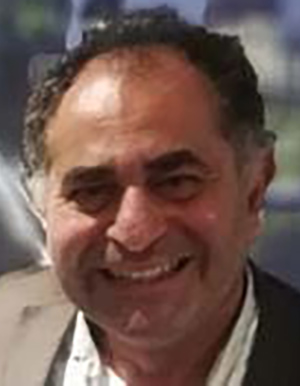 Dr. Maziar Nekovee is currently a Professor of Telecoms and Mobile Technologies and Founding Head of Centre for Advanced Communications, Mobile Technology and IoT at a University of Sussex in Brighton, UK. He was a founder and, subsequently, the Executive Dean of Sussex AI Institute Transnational Education (TNE) at Zhejiang Gongshang University in Hangzhou, China between 2020-2023. From February 2017 to February 2019, he was the Head of Department of Engineering and Design at University of Sussex. Prior to joining academia in 2017, as a full Professor, he hold leadership role in R&D in mobile and telecommunication industry. He was the Head of European Research and Collaborations in 5G between 2013-2017 and a Senior Scientist and subsequently a Group Leaders at BT (British Telecom) Research between 2001-2011. While at BT he also held a Royal Society (UK Academy of Science) Industry Fellowship Award at University College London (UCL). Maziar has a PhD in Theoretical and Computational Physics (from University of Nijmegen, the Netherlands) and a MEng in electrical and electronic engineering (cum laude) (from Delft University of Technology, the Netherlands, with a highly successful one year research internship at Philips Research Laboratories). He is currently on the Advisory Board of Singapore University of Technology and Design (SUTD). He is the Chair of the Academic Strategy Group of UK Telecom Innovation Network (UKTIN) in Future Networks and is Chair of Networld Europe Technology Platform Working Group on Enabling Technologies.
Dr. Maziar Nekovee is currently a Professor of Telecoms and Mobile Technologies and Founding Head of Centre for Advanced Communications, Mobile Technology and IoT at a University of Sussex in Brighton, UK. He was a founder and, subsequently, the Executive Dean of Sussex AI Institute Transnational Education (TNE) at Zhejiang Gongshang University in Hangzhou, China between 2020-2023. From February 2017 to February 2019, he was the Head of Department of Engineering and Design at University of Sussex. Prior to joining academia in 2017, as a full Professor, he hold leadership role in R&D in mobile and telecommunication industry. He was the Head of European Research and Collaborations in 5G between 2013-2017 and a Senior Scientist and subsequently a Group Leaders at BT (British Telecom) Research between 2001-2011. While at BT he also held a Royal Society (UK Academy of Science) Industry Fellowship Award at University College London (UCL). Maziar has a PhD in Theoretical and Computational Physics (from University of Nijmegen, the Netherlands) and a MEng in electrical and electronic engineering (cum laude) (from Delft University of Technology, the Netherlands, with a highly successful one year research internship at Philips Research Laboratories). He is currently on the Advisory Board of Singapore University of Technology and Design (SUTD). He is the Chair of the Academic Strategy Group of UK Telecom Innovation Network (UKTIN) in Future Networks and is Chair of Networld Europe Technology Platform Working Group on Enabling Technologies.
IP17: IEEE Future Networks Roadmap for 6G
Tuesday, June 11 16:30 - 18:00//LOCATION: Plaza Ballroom D, Concourse Level
Moderator: Ashutosh Dutta– 5G Chief Strategist, Chair IEEE Future Networks Technical Community, Johns Hopkins University Applied Physics Lab
Panelists:
- Timothy Lee, Technical Fellow Boeing, Co-Chair IEEE Future Networks
- Eman Hammad, Professor University of Texas A&M (TBC)
- Rose Hu, Co-Chair INGR, Associate Dean for Research and Professor, Utah State University (TBC)
- Narendra Mangra, Principal, Globenet, USA, Co-Chair IEEE Future Networks Roadmap (TBC)
- Fawzi Behmann, President, TelNet Management Consulting Inc.
- Tracy Van Brakle, Pricipal Member of Technical Staff with AT&T Labs (TBC)
- Jason Rupe, Distinguished Technologist, CableLabs (TBC)
- Saba Al-Rubaye, Professor at Cranfield University
- Narendra Mangra, Principal, GlobeNet LLC
Abstract:
INGR (International Networks Generation Roadmap) is a key component of IEEE Future Networks Technical Community (futurenetworks.ieee.org). INGR consists of 14 working groups: Applications and Services, Artificial Intelligence and Machine Learning, Connecting the Unconnected, Deployment, Edge Services and Automation, Energy Efficiency, Hardware, Massive MIMO, Millimeter Wave and Signal Processing, Optics, Satellite, Standardization and Building Blocks, Systems Optimization, and Testbed. As the industry continues to advance, the evolution and deployment of network generations is influenced and impacted not only by emerging, evolving, and potential convergence of technologies, but also by local and world socio-economic and health conditions (and politics). INGR is a living document that is updated annually. The inaugural INGR was released in 2020 and its focus was on the evolution of 5G networks. The intention of the 2022 INGR Edition was to take a more end-to-end perspective that included integrating future network technologies and establish a transdisciplinary framework and a predictive model for mobile networks. 2023 and the next two years will be a time of heavy 5G deployment, transformation at the edge, and increased interworking of network technologies and systems. Hence, the 2023 Edition of the IEEE Future Networks International Network Generations Roadmap (INGR) points to trends, challenges, and solutions in the current and near-term mobile network landscape, and the future vision as being cultivated through the activities of Standards Development Organizations (SDOs) and the industry around the globe. This 2023 INGR Edition broadens applications of the transdisciplinary framework, progresses each technology and system challenges and opportunities especially while interworking with other areas — while noting lessons learned that can be applied to beyond 5G. As part of this panel, the working group co-chairs will share the highlights of various INGR technology working groups and how these will affect the evolution of next generation networks and deployments over varying timelines.
Bios:
 Ashutosh Dutta is currently Chief 5G Strategist and JHU/APL Sabbatical Fellow at Johns Hopkins University Applied Physics Labs (JHU/APL), USA. He also serves as Chair for Electrical and Computer Engineering for Engineering Professional Program at JHU. His career, spanning more than 30 years, includes Director of Technology Security and Lead Member of Technical Staff at AT&T, CTO of Wireless at a Cybersecurity company NIKSUN, Inc., Senior Scientist in Telcordia Research, Director of Central Research Facility at Columbia University, adjunct faculty at NJIT, and Computer Engineer with TATA Motors. Ashutosh is author of more than 120 technical papers and 31 issued patents. Ashutosh has been serving as the founding Co-Chair for the IEEE Future Networks that focuses on 5G standardization, education, publications, testbed, and roadmap activities. Ashutosh is IEEE Communications Society's Distinguished Lecturer for 2017-2020 and as an ACM Distinguished Speaker (2020-2022). Ashutosh currently serves as Member-At-Large for IEEE Communications Society. He co-founded the IEEE STEM conference (ISEC) and helped to implement EPICS (Engineering Projects in Community Service) projects in several high schools. He was recipient of 2009 IEEE MGA Leadership award. Ashutosh is recipient of IEEE-USA’s 2010 Professional Leadership Award, 2022 IEEE-USA George F. McClure Citation of Honor. He also received 2022 IEEE North American Region Exceptional Service Award. Ashutosh has served as the founding Co-Chair for the premier IEEE 5G World Forums and has organized 90 5G World Summits around the world. Ashutosh currently serves as the Chair for IEEE Industry Connection’s O-RAN activities and IPv6. Ashutosh is a Distinguished Alumnus of NIT Rourkela with BS in Electrical Engineering, MS in Computer Science from NJIT, and Ph.D. in Electrical Engineering from Columbia University under the supervision of Prof. Henning Schulzrinne. Ashutosh is a Fellow of IEEE, member of IEEE-HKN, and Distinguished member ACM.
Ashutosh Dutta is currently Chief 5G Strategist and JHU/APL Sabbatical Fellow at Johns Hopkins University Applied Physics Labs (JHU/APL), USA. He also serves as Chair for Electrical and Computer Engineering for Engineering Professional Program at JHU. His career, spanning more than 30 years, includes Director of Technology Security and Lead Member of Technical Staff at AT&T, CTO of Wireless at a Cybersecurity company NIKSUN, Inc., Senior Scientist in Telcordia Research, Director of Central Research Facility at Columbia University, adjunct faculty at NJIT, and Computer Engineer with TATA Motors. Ashutosh is author of more than 120 technical papers and 31 issued patents. Ashutosh has been serving as the founding Co-Chair for the IEEE Future Networks that focuses on 5G standardization, education, publications, testbed, and roadmap activities. Ashutosh is IEEE Communications Society's Distinguished Lecturer for 2017-2020 and as an ACM Distinguished Speaker (2020-2022). Ashutosh currently serves as Member-At-Large for IEEE Communications Society. He co-founded the IEEE STEM conference (ISEC) and helped to implement EPICS (Engineering Projects in Community Service) projects in several high schools. He was recipient of 2009 IEEE MGA Leadership award. Ashutosh is recipient of IEEE-USA’s 2010 Professional Leadership Award, 2022 IEEE-USA George F. McClure Citation of Honor. He also received 2022 IEEE North American Region Exceptional Service Award. Ashutosh has served as the founding Co-Chair for the premier IEEE 5G World Forums and has organized 90 5G World Summits around the world. Ashutosh currently serves as the Chair for IEEE Industry Connection’s O-RAN activities and IPv6. Ashutosh is a Distinguished Alumnus of NIT Rourkela with BS in Electrical Engineering, MS in Computer Science from NJIT, and Ph.D. in Electrical Engineering from Columbia University under the supervision of Prof. Henning Schulzrinne. Ashutosh is a Fellow of IEEE, member of IEEE-HKN, and Distinguished member ACM.
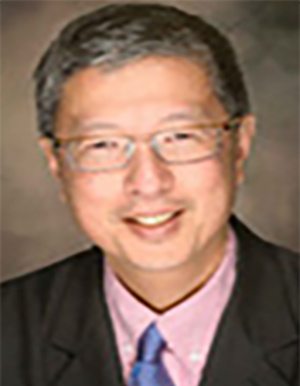 Tim Lee currently is a Boeing Technical Fellow at the Boeing Company Research and Technology with focus on advanced microelectronics for communications, sensing and data processing. His areas of interests include RF electronics, and advanced packaging mission systems. He is the co-chair of the IEEE Future Networks Initiative with focus on RF / millimeter-wave electronics and antennas for 5G and 6G applications. He was the 2015 IEEE Microwave Theory and Technology Society president. Currently he is serving on the IEEE Board of Directors and as the IEEE Region 6 Director.
Tim Lee currently is a Boeing Technical Fellow at the Boeing Company Research and Technology with focus on advanced microelectronics for communications, sensing and data processing. His areas of interests include RF electronics, and advanced packaging mission systems. He is the co-chair of the IEEE Future Networks Initiative with focus on RF / millimeter-wave electronics and antennas for 5G and 6G applications. He was the 2015 IEEE Microwave Theory and Technology Society president. Currently he is serving on the IEEE Board of Directors and as the IEEE Region 6 Director.
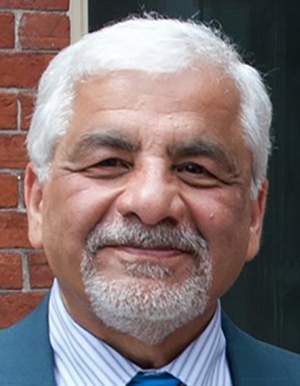 Fawzi Behmann is the founder and president of TelNet Management Consulting Inc. offering international professional services in technology trends and smart networking ecosystem solutions. He has held executive and leadership positions in communications and networking with Tier 1 companies in Canada and the US. He was the chief architect for development of Telecom Network Management systems for global carrier and edge/core product releases for networking company and director of strategic marketing for SoC semiconductor product lines. Fawzi is a distinguished Lecturer and keynote speaker at national and international conferences, and has several publications, including co-authoring a book on Collaborative Internet of Things. He is a Co-founder of the "IoT in Healthcare Consortium" of Intelligent Health Association and serves as a faculty advisor with Texas State school of Engineering and member of IEEE-HKN.
Fawzi Behmann is the founder and president of TelNet Management Consulting Inc. offering international professional services in technology trends and smart networking ecosystem solutions. He has held executive and leadership positions in communications and networking with Tier 1 companies in Canada and the US. He was the chief architect for development of Telecom Network Management systems for global carrier and edge/core product releases for networking company and director of strategic marketing for SoC semiconductor product lines. Fawzi is a distinguished Lecturer and keynote speaker at national and international conferences, and has several publications, including co-authoring a book on Collaborative Internet of Things. He is a Co-founder of the "IoT in Healthcare Consortium" of Intelligent Health Association and serves as a faculty advisor with Texas State school of Engineering and member of IEEE-HKN.
As a senior member and volunteer with IEEE, Fawzi is serving as the North America Director for Communications Society and BOG member. He is a voting member of IEEE Conference Committee, FNTC SC Chair elect, Co-Chair of Future Network Education working group, Co-Chair of IEEE Transdisciplinary Framework working group and contributor to Future Network Roadmap’s security, applications & services working groups. Fawzi chaired several conferences, summits, and panels. Among the most recent is the General Chair of IEEE WCNC 2022.
Fawzi has received multiple awards for his professional leadership, including the IEEE USA professional leadership award, IEEE Communications Society NAB Exceptional Service Award, and IEEE ComSoc Chapter of the Year and Chapter Achievement Awards, CEO Diamond chip award among others. He holds an MBA, master’s in computer science, and bachelor’s in science with Honors in Mathematics with Distinction.
 Saba Al-Rubaye a Professor Chair in Telecommunications and Autonomous Systems at Cranfield University, United Kingdom in the School of Aerospace, Transport, and Manufacturing. Prof Al-Rubaye is an honoured member of the UK Government Telecoms Innovation Network (UKTIN), actively contributing to the advancement of the 6G ecosystem and cutting-edge technologies to drive innovation within the telecommunications industry and exploring its potential applications in future communication networks global. With an impressive career spanning over 20 years, Prof Al-Rubaye has accumulated vast experience in both industry and academia, showcasing her proficiency in initiating innovative solutions across various domains such as design, testing, consultation, leadership, and program development. Throughout her career, Prof Al-Rubaye has been an active participant in numerous projects sponsored by prestigious organizations like Innovation UK, Research England, EPSRC, the Department for Transport, the Natural Sciences and Engineering Research Council of Canada (NSERC), and the USA Government. Notably, she played a crucial role in establishing the hardware in the loop testbed for smart grid communications and system integration at Quanta's Sustainable Technology Integration Laboratory (QT-STIL) in Toronto, Canada, contributing significantly to the adoption of emerging technology solutions in future communications networks.
Saba Al-Rubaye a Professor Chair in Telecommunications and Autonomous Systems at Cranfield University, United Kingdom in the School of Aerospace, Transport, and Manufacturing. Prof Al-Rubaye is an honoured member of the UK Government Telecoms Innovation Network (UKTIN), actively contributing to the advancement of the 6G ecosystem and cutting-edge technologies to drive innovation within the telecommunications industry and exploring its potential applications in future communication networks global. With an impressive career spanning over 20 years, Prof Al-Rubaye has accumulated vast experience in both industry and academia, showcasing her proficiency in initiating innovative solutions across various domains such as design, testing, consultation, leadership, and program development. Throughout her career, Prof Al-Rubaye has been an active participant in numerous projects sponsored by prestigious organizations like Innovation UK, Research England, EPSRC, the Department for Transport, the Natural Sciences and Engineering Research Council of Canada (NSERC), and the USA Government. Notably, she played a crucial role in establishing the hardware in the loop testbed for smart grid communications and system integration at Quanta's Sustainable Technology Integration Laboratory (QT-STIL) in Toronto, Canada, contributing significantly to the adoption of emerging technology solutions in future communications networks.
Prof Al-Rubaye actively contributes to the development of industry standards, serving as a voting member in IEEE P1932.1 standard for License/Unlicensed Interoperability and IEEE P1920.2 standard for Vehicle-to-Vehicle Communications for Unmanned Aircraft Systems. Her dedication to research excellence is evident in her numerous publications in prestigious IEEE journals and conferences, earning her distinguished recognition with best technical paper awards in IEEE Vehicular Technology in 2011 and 2015, as well as best paper awards in IEEE DASC conferences in 2020 and 2021. Prof Al-Rubaye registered as a Chartered Engineer (CEng), member of IET, and Senior Life Membership IEEE.
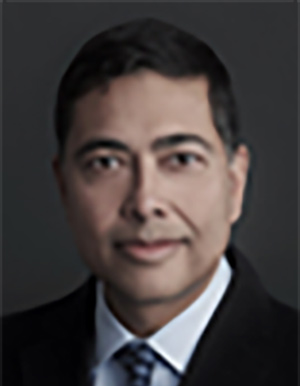 Narendra Mangra is a Principal at GlobeNet LLC and provides advisory and consulting services. across industry, government, and academia. His diverse experience spans strategy development, roadmap development, spectrum management, mobile network planning and system deployments, enterprise-wide modernization, program management, and education. He is an Adjunct Professor at the George Mason University. Narendra also leads several IEEE initiatives such as the Future Networks INGR, P1950.1 smart cities architecture standards development, Public Safety Technology Initiative, and the Telehealth and Transdisciplinary Framework Industry Connections. His current interests include comprehensive transdisciplinary frameworks, 5G and future networks, digital transformation, smart communities, and related ecosystems.
Narendra Mangra is a Principal at GlobeNet LLC and provides advisory and consulting services. across industry, government, and academia. His diverse experience spans strategy development, roadmap development, spectrum management, mobile network planning and system deployments, enterprise-wide modernization, program management, and education. He is an Adjunct Professor at the George Mason University. Narendra also leads several IEEE initiatives such as the Future Networks INGR, P1950.1 smart cities architecture standards development, Public Safety Technology Initiative, and the Telehealth and Transdisciplinary Framework Industry Connections. His current interests include comprehensive transdisciplinary frameworks, 5G and future networks, digital transformation, smart communities, and related ecosystems.
IP18: 6G Requirements to Support Global Digital Transformation of the Healthcare Industry
Monday, June 10 14:30 - 16:00 // 16:30 - 18:00//LOCATION: Plaza Ballroom D, Concourse Level
Abstract:
Digital transformation in the health domain has been dragging on for many years but is now moving at a rapid peace. The goals of digital transformation in the health vertical are the adoption of innovative technologies that are likely to improve work efficiency, compensate for staff shortages and pave the way for medical innovation. The major target is to support the shift from centralized patient care in hospitals to distributed patient-centric care outside hospitals and the application of novel smart pharmaceuticals that collectively propel the notion of “Precision Medicine”.
However, this can only be facilitated through new technologies especially in the micro and nano area, by application and extension of relevant standards, such as IEEE SDC 11073 and FHIR and progress in the mobile radio technologies, especially in 5G slicing and ORAN. Furthermore, we need to look forward and establish requirements for the upcoming next generation mobile network (6G) addressing safety, security and resilience, which need to be developed to legally required standards (GDPR, Cybersecurity Labeling Program for Smart Devices, MDR, etc.).
Due to the growing demographic shift the health industry plays an increasing economic role and might be one of the key drivers for next-generation networks. Especially the key topics “Security”, “Privacy Enhancing Technologies”, “European Health Data Space” (EHS), “development of novel and innovative medical devices and embedded systems” as well as the seismic shift towards distributed patient-centered care make new network technologies indispensable. 6G networks will provide the necessary infrastructure to support the growing number of Internet of Things (IoT) devices, including those on the Internet of Medical Things (IoMT), while Blockchain can provide a secure way to store and share health data.
In this regard and due to the growing interest and importance of the above-mentioned topics, as well as the knowledge and expertise of the invited speakers, the panel will offer a comprehensive picture of current and future developments.
Most medical devices in healthcare lack wireless connectivity interfaces and data can neither be extracted nor analyzed and utilized to improve medical care of the patients. Intelligent remote control of many devices is therefore impossible and needs to be carried out by caregivers adding unnecessarily to their workload.
The aim of the panel is to give an overview of ongoing relevant technological developments in the health sector and to fuel initial discussions about early 6G pre-standardization, security, and privacy for embedded systems. Additionally, the growing need for a 6G health coalition based on existing 5G vertical coalitions will also be discussed.
IP19: Panel: Federation of Innovation Testbeds Towards Accelerated Deployment
Wednesday, June 12 11:30 – 13:00 // Room: TBD
Moderator: Anwer Al-Dulaimi, Veltris & ZU, Canada
Panelists:
- Sameh Yamany, Viavi, USA
- Tracy van Brakle, AT&T, USA
- Ashutosh Dutta, JHU/APL, USA
- Adlen Ksentini, Eurecom, France
- Soumaya Cherkaoui, Polytechnique Montreal University, Canada
Abstract:
The IEEE 5G/6G Innovation Testbed stands at the forefront of telecommunications research, serving as a pioneering initiative for exploring and validating 5G and 6G use cases across diverse sectors of industry and academia. In a landscape where numerous testbeds and companies strive to interconnect their platforms, the IEEE testbed distinguishes itself by offering a robust framework that facilitates seamless integration of multiple platforms, extending the scope of existing use cases and enhancing the scalability of traffic volumes through ad-hoc connections. Collaborative efforts with esteemed partners such as Eurecom in France, the University of Surrey in the UK, Johns Hopkins University in USA, Polytechnique Montreal University and others underscore the testbed's commitment to fostering innovation through cross-disciplinary collaboration. In line with its vision for the future, the IEEE testbed is poised to develop a sophisticated test controller, aimed at automating testing procedures across continents. This strategic initiative helps a future characterized by seamless global coordination in federated mode testing, facilitating efficient and standardized experimentation on a global scale. Moreover, active engagement with the ITU-T Focus Group on Testbeds Federations for IMT-2020 and beyond (FG-TBFxG) underscores the testbed team's commitment to shaping industry standards and fostering interoperability within the broader testbed ecosystem. Looking ahead, the federation is primed for further evolution, with a keen focus on leveraging advancements in artificial intelligence (AI) integration. By harnessing AI-driven techniques such as resource parsing across partner platforms, the federation aims to optimize resource utilization and streamline testing processes, thereby fostering a more efficient and effective innovation ecosystem. This panel brings together world-class experts, industry veterans, and academics to delve into the nuances of testbed features, articulate visions for federated testbed architectures, explore potential use cases, and discuss how such federations can accelerate innovation in future networks. Each panelist brings a wealth of experience and expertise, offering unique insights and perspectives that promise to enrich the discourse and drive the collective pursuit of innovation in the telecommunications landscape. The panel aims to identify pathways for collaboration, foster knowledge exchange, and inspire transformative advancements for more robust testing platforms. This panel will discuss various modes of collaboration and partnership and how one can harness the benefits of the IEEE 5G/6G Innovation Testbed.
Moderator:
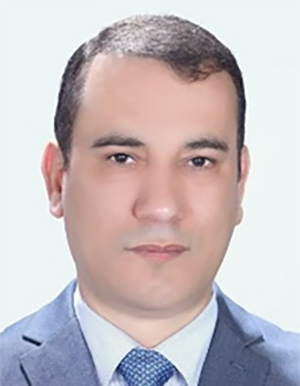 Anwer Al-Dulaimi is currently a Senior Strategy Manager at Veltris, Toronto, Canada, and Associate Professor at Zayed University, UAE. He received the Ph.D. degree in electrical and computer engineering from Brunel University, London, U.K., in 2012 after obtaining M.Sc. and B.Sc. honours degrees in communication engineering. He was a Postdoctoral Fellow in the Department of Electrical and Computer Engineering, University of Toronto, sponsored by BlackBerry’s advanced research team. He is the chair of the IEEE 5G/6G Innovation Testbed project working to develop a convergent testing platform for end-to-end network innovations. He is the chair of the IEEE 1932.1 ‘Standard for Licensed/Unlicensed Spectrum Interoperability in Wireless Mobile Network’. He has published many papers, edited books, and patents focusing on new generations of mobile networking technologies. He is the Editor of IEEE Future Networks Series on 6G published by IEEE Vehicular Technology Magazine, editor of Vehicular Networking Series in IEEE Communication Standards Magazine, and a guest editor of many other IEEE series issues. His research interests include 5G/6G networks, cloud computing, IoT, and cybersecurity. He is a Fellow of the British Institution of Engineering and Technology (FIET), registered as a Chartered Engineer (CEng) by the British Engineering Council since 2010. He is a voting member of Mobile Communication Networks Standards Committee (MobiNet-SC), invited expert to ITU-T Focus Group on Testbeds Federations for IMT-2020 and beyond (FG-TBFxG), senior member of IEEE and IEEE ComSoc Distinguished Lecturer.
Anwer Al-Dulaimi is currently a Senior Strategy Manager at Veltris, Toronto, Canada, and Associate Professor at Zayed University, UAE. He received the Ph.D. degree in electrical and computer engineering from Brunel University, London, U.K., in 2012 after obtaining M.Sc. and B.Sc. honours degrees in communication engineering. He was a Postdoctoral Fellow in the Department of Electrical and Computer Engineering, University of Toronto, sponsored by BlackBerry’s advanced research team. He is the chair of the IEEE 5G/6G Innovation Testbed project working to develop a convergent testing platform for end-to-end network innovations. He is the chair of the IEEE 1932.1 ‘Standard for Licensed/Unlicensed Spectrum Interoperability in Wireless Mobile Network’. He has published many papers, edited books, and patents focusing on new generations of mobile networking technologies. He is the Editor of IEEE Future Networks Series on 6G published by IEEE Vehicular Technology Magazine, editor of Vehicular Networking Series in IEEE Communication Standards Magazine, and a guest editor of many other IEEE series issues. His research interests include 5G/6G networks, cloud computing, IoT, and cybersecurity. He is a Fellow of the British Institution of Engineering and Technology (FIET), registered as a Chartered Engineer (CEng) by the British Engineering Council since 2010. He is a voting member of Mobile Communication Networks Standards Committee (MobiNet-SC), invited expert to ITU-T Focus Group on Testbeds Federations for IMT-2020 and beyond (FG-TBFxG), senior member of IEEE and IEEE ComSoc Distinguished Lecturer.
Speakers:
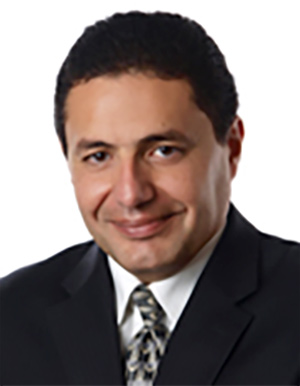 Dr. Sameh Yamany is the Chief Technology Officer (CTO) of VIAVI Solutions where he leads long-term technology vision, applied research programs, industry thought leadership, and advanced technology incubations. He holds a Doctorate in computer science and engineering (CSE) from the Speed School of Engineering at University of Louisville, Kentucky, a Master of Science and a Bachelor of Science in systems and biomedical engineering from Cairo University, Egypt. He has authored patents, scientific journal papers, and book chapters on artificial intelligence, telecommunications, systems, and biomedical engineering.
Dr. Sameh Yamany is the Chief Technology Officer (CTO) of VIAVI Solutions where he leads long-term technology vision, applied research programs, industry thought leadership, and advanced technology incubations. He holds a Doctorate in computer science and engineering (CSE) from the Speed School of Engineering at University of Louisville, Kentucky, a Master of Science and a Bachelor of Science in systems and biomedical engineering from Cairo University, Egypt. He has authored patents, scientific journal papers, and book chapters on artificial intelligence, telecommunications, systems, and biomedical engineering.
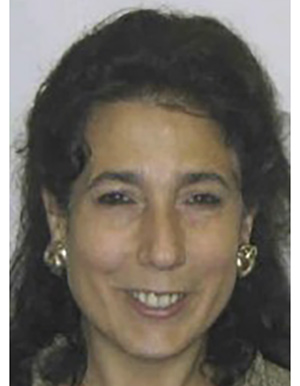 Tracy van Brakle is a Lead Member of Technical Staff within AT&T Labs Wireless Technologies / Network Automation and Analytics group, and is also a co-chair and/or contributor within several open source projects and standards development organizations. Her current area of interest is integrating Open RAN technologies with open platforms, e.g., LFN 5G SBP, ETSI NFV MANO, using model-driven interface specifications from O-RAN and 3GPP. Before joining AT&T, Tracy was a Senior Technologist with Goldman Sachs. She holds 17 active US patents in Wireless Technologies.
Tracy van Brakle is a Lead Member of Technical Staff within AT&T Labs Wireless Technologies / Network Automation and Analytics group, and is also a co-chair and/or contributor within several open source projects and standards development organizations. Her current area of interest is integrating Open RAN technologies with open platforms, e.g., LFN 5G SBP, ETSI NFV MANO, using model-driven interface specifications from O-RAN and 3GPP. Before joining AT&T, Tracy was a Senior Technologist with Goldman Sachs. She holds 17 active US patents in Wireless Technologies.
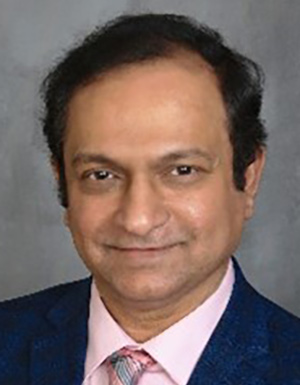 Ashutosh Dutta is currently Chief 5G Strategist and JHU/APL Sabbatical Fellow at Johns Hopkins University Applied Physics Labs (JHU/APL), USA. He serves as the director of Doctor of Engineering at JHU. Most recently he was the Chair for Electrical and Computer Engineering for Engineering Professional Program at JHU. His career, spanning more than 30 years, includes Director of Technology Security and Lead Member of Technical Staff at AT&T, CTO of Wireless at a Cybersecurity company NIKSUN, Inc., Senior Scientist in Telcordia Research, Director of Central Research Facility at Columbia University, adjunct faculty at NJIT, and Computer Engineer with TATA Motors. Ashutosh is author of more than 100 technical papers, book, and 31 issued patents. As a Technical Leader in 5G and security, Ashutosh has served as the founding Co-Chair for the IEEE Future Networks Initiative that focuses on 5G standardization, education, publications, testbed, and roadmap activities. Ashutosh is IEEE Communications Society's Distinguished Lecturer for 2017-2020 and as an ACM Distinguished Speaker (2020-2022). Ashutosh served as the Director of Industry Outreach for IEEE Communications Society from 2014-2019. He was recipient of 2009 IEEE MGA Leadership award. Ashutosh is recipient of IEEE-USA’s 2010 Professional Leadership Award, 2022 IEEE-USA George F. McClure Citation of Honor. He also received 2022 IEEE North American Region Exceptional Service Award. Ashutosh has been serving as Member-At-Large for IEEE Communications Society for 2020-2025. Ashutosh has served as the founding Co-Chair for the premier IEEE 5G World Forums and has organized 85 5G World Summits around the world. Ashutosh currently serves as the Chair for IEEE Industry Connection’s O-RAN activities and IPv6. Ashutosh is a Distinguished Alumnus of NIT Rourkela with BS in Electrical Engineering, MS in Computer Science from NJIT, and Ph.D. in Electrical Engineering from Columbia University under the supervision of Prof. Henning Schulzrinne. Ashutosh is a Fellow of IEEE and Distinguished member ACM.
Ashutosh Dutta is currently Chief 5G Strategist and JHU/APL Sabbatical Fellow at Johns Hopkins University Applied Physics Labs (JHU/APL), USA. He serves as the director of Doctor of Engineering at JHU. Most recently he was the Chair for Electrical and Computer Engineering for Engineering Professional Program at JHU. His career, spanning more than 30 years, includes Director of Technology Security and Lead Member of Technical Staff at AT&T, CTO of Wireless at a Cybersecurity company NIKSUN, Inc., Senior Scientist in Telcordia Research, Director of Central Research Facility at Columbia University, adjunct faculty at NJIT, and Computer Engineer with TATA Motors. Ashutosh is author of more than 100 technical papers, book, and 31 issued patents. As a Technical Leader in 5G and security, Ashutosh has served as the founding Co-Chair for the IEEE Future Networks Initiative that focuses on 5G standardization, education, publications, testbed, and roadmap activities. Ashutosh is IEEE Communications Society's Distinguished Lecturer for 2017-2020 and as an ACM Distinguished Speaker (2020-2022). Ashutosh served as the Director of Industry Outreach for IEEE Communications Society from 2014-2019. He was recipient of 2009 IEEE MGA Leadership award. Ashutosh is recipient of IEEE-USA’s 2010 Professional Leadership Award, 2022 IEEE-USA George F. McClure Citation of Honor. He also received 2022 IEEE North American Region Exceptional Service Award. Ashutosh has been serving as Member-At-Large for IEEE Communications Society for 2020-2025. Ashutosh has served as the founding Co-Chair for the premier IEEE 5G World Forums and has organized 85 5G World Summits around the world. Ashutosh currently serves as the Chair for IEEE Industry Connection’s O-RAN activities and IPv6. Ashutosh is a Distinguished Alumnus of NIT Rourkela with BS in Electrical Engineering, MS in Computer Science from NJIT, and Ph.D. in Electrical Engineering from Columbia University under the supervision of Prof. Henning Schulzrinne. Ashutosh is a Fellow of IEEE and Distinguished member ACM.
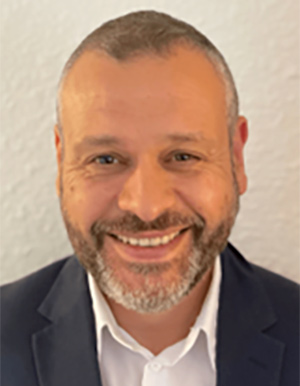 Adlen Ksentini is a professor in the Communication Systems Department at EURECOM. He is leading the Network softwarization group activities related to Network Slicing and Edge Computing. He has been involved in several H2020 EU projects on 5G, such as 5G!Pagoda, 5GTransformer, 5G!Drones and MonB5G. Adlen Ksentini research interests are in Network Sofwerization and Network Cloudification focusing on topics related to network virtualization, Software Defined Networking (SDN), Edge Computing, and Network slicing for 5G and beyond networks. He is interested in both system and architectural issues, but also in algorithm problems related to those topics, using Markov Chains, Optimization algorithms, and Machine Learning (ML).
Adlen Ksentini is a professor in the Communication Systems Department at EURECOM. He is leading the Network softwarization group activities related to Network Slicing and Edge Computing. He has been involved in several H2020 EU projects on 5G, such as 5G!Pagoda, 5GTransformer, 5G!Drones and MonB5G. Adlen Ksentini research interests are in Network Sofwerization and Network Cloudification focusing on topics related to network virtualization, Software Defined Networking (SDN), Edge Computing, and Network slicing for 5G and beyond networks. He is interested in both system and architectural issues, but also in algorithm problems related to those topics, using Markov Chains, Optimization algorithms, and Machine Learning (ML).
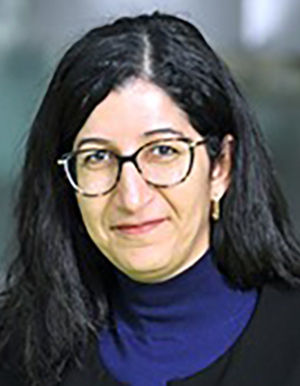 Dr. Soumaya Cherkaoui is a Full Professor at Department of Electrical and Computer Engineering of Université de Sherbrooke, Canada which she joined as a faculty member in 1999. Her research and teaching interests are in wireless networks. Particularly, she works on next generation networks (5G and beyond), Edge computing/Network Intelligence, and communication networks for verticals such as Connected and Autonomous Cars, IoT, and Industrial IoT. Since 2005, she has been the Director of INTERLAB, a research group which conducts research funded both by government and industry. Before joining U. Sherbrooke, she worked for industry as a project leader on projects targeted at the Aerospace Industry. Pr. Cherkaoui has held invited positions at leading institutions including the University of California at Berkeley. Bell Laboratories, Monash University, and the University of Toronto, as well as an adjunct position at Lulea University, in Sweden. Pr. Cherkaoui avails of a long research experience in the wireless networking. She was named a Distinguished Lecturer by the IEEE Communication Society. Her work resulted in technology transfer to companies and to patented technology. Pr. Cherkaoui has published over 200 research papers in reputed journals and conferences. She has been an associate editor and guest editor of several IEEE, Wiley and Elsevier Journals. Her work was awarded with recognitions and best paper awards including a best paper award at the IEEE Communications Society Flagship conference IEEE ICC in 2017. She is a Professional Engineer in Canada, a senior IEEE Member, and is serving as the Chair of the IEEE Communications Society IoT-Ad hoc and Sensor Networks Technical Committee since 2020.
Dr. Soumaya Cherkaoui is a Full Professor at Department of Electrical and Computer Engineering of Université de Sherbrooke, Canada which she joined as a faculty member in 1999. Her research and teaching interests are in wireless networks. Particularly, she works on next generation networks (5G and beyond), Edge computing/Network Intelligence, and communication networks for verticals such as Connected and Autonomous Cars, IoT, and Industrial IoT. Since 2005, she has been the Director of INTERLAB, a research group which conducts research funded both by government and industry. Before joining U. Sherbrooke, she worked for industry as a project leader on projects targeted at the Aerospace Industry. Pr. Cherkaoui has held invited positions at leading institutions including the University of California at Berkeley. Bell Laboratories, Monash University, and the University of Toronto, as well as an adjunct position at Lulea University, in Sweden. Pr. Cherkaoui avails of a long research experience in the wireless networking. She was named a Distinguished Lecturer by the IEEE Communication Society. Her work resulted in technology transfer to companies and to patented technology. Pr. Cherkaoui has published over 200 research papers in reputed journals and conferences. She has been an associate editor and guest editor of several IEEE, Wiley and Elsevier Journals. Her work was awarded with recognitions and best paper awards including a best paper award at the IEEE Communications Society Flagship conference IEEE ICC in 2017. She is a Professional Engineer in Canada, a senior IEEE Member, and is serving as the Chair of the IEEE Communications Society IoT-Ad hoc and Sensor Networks Technical Committee since 2020.




